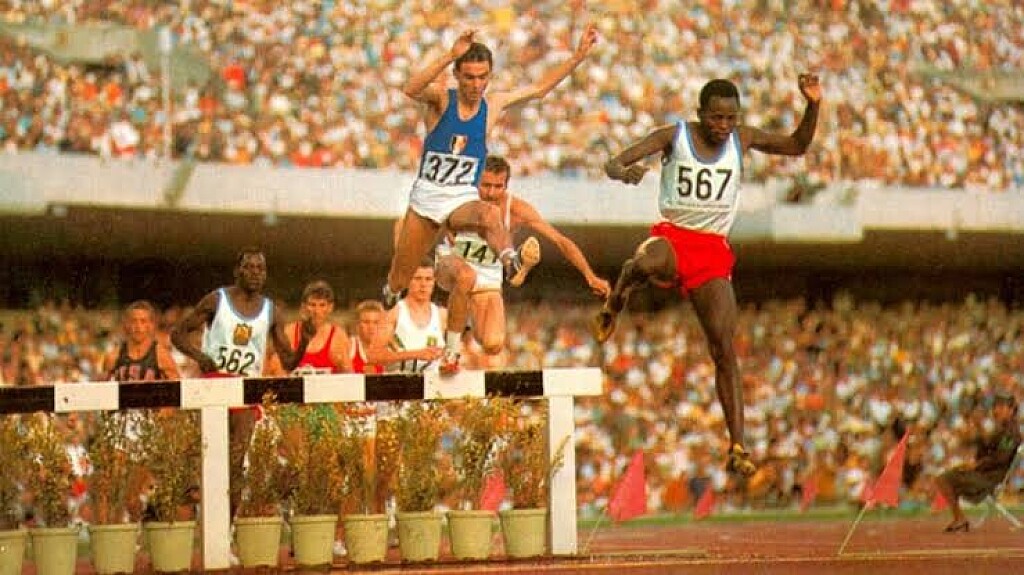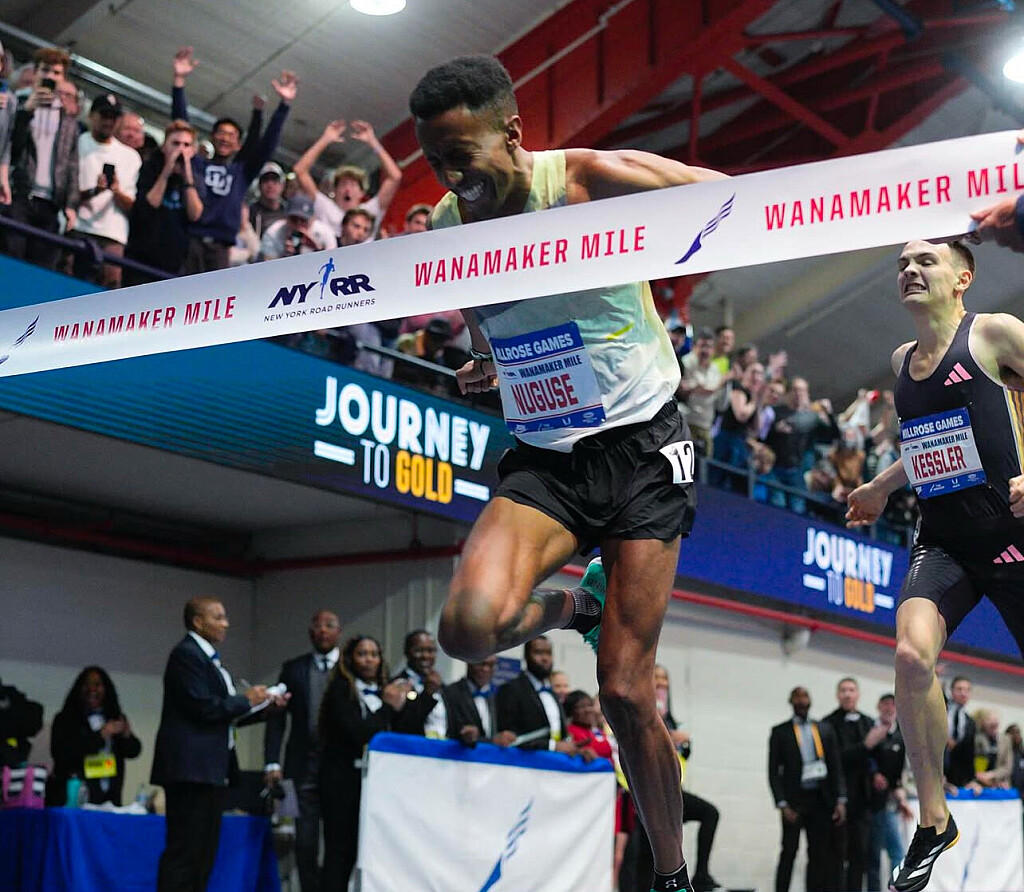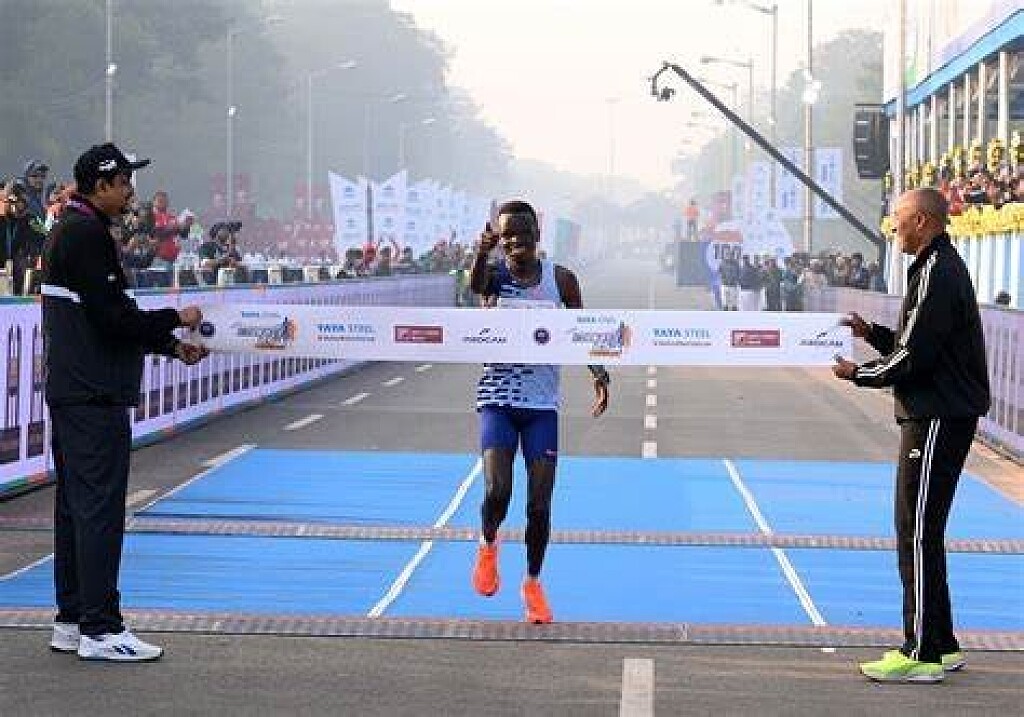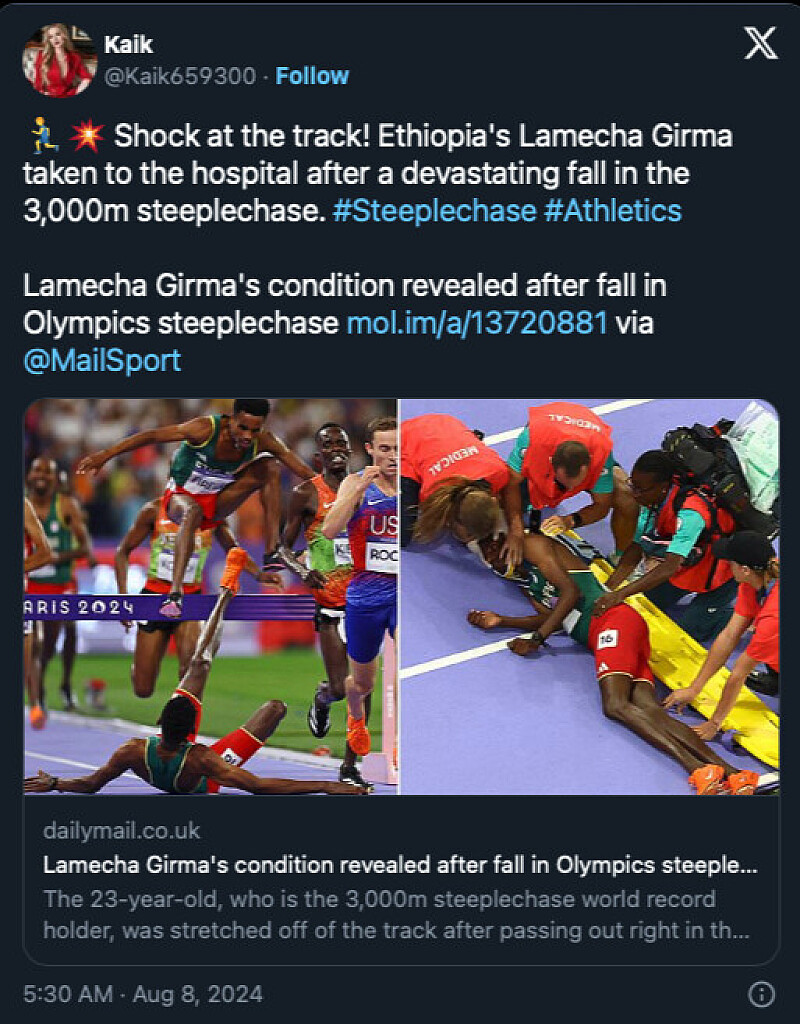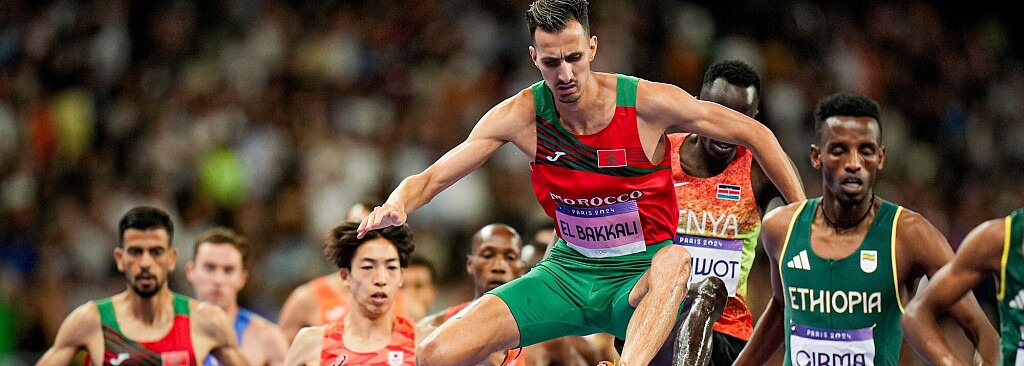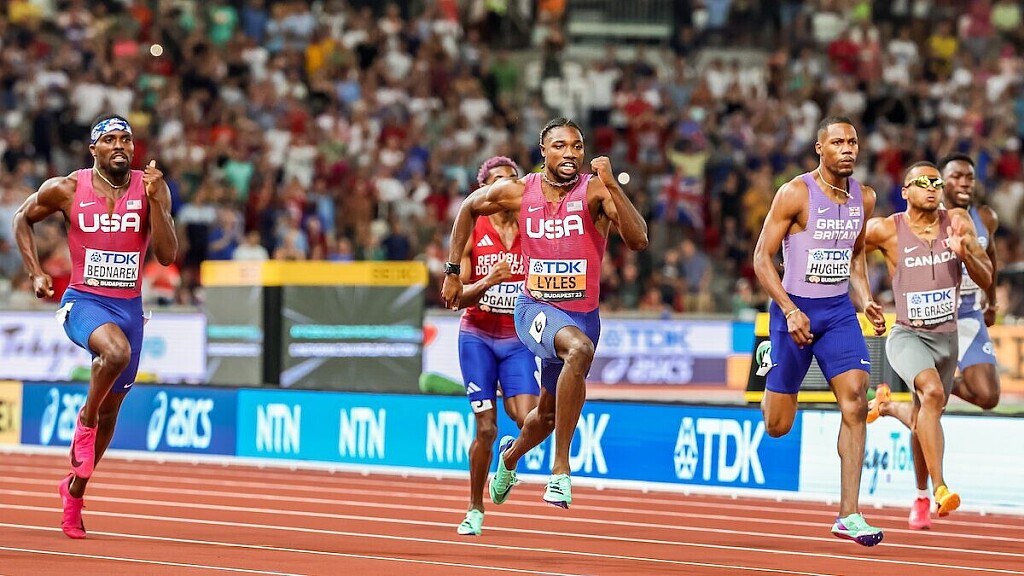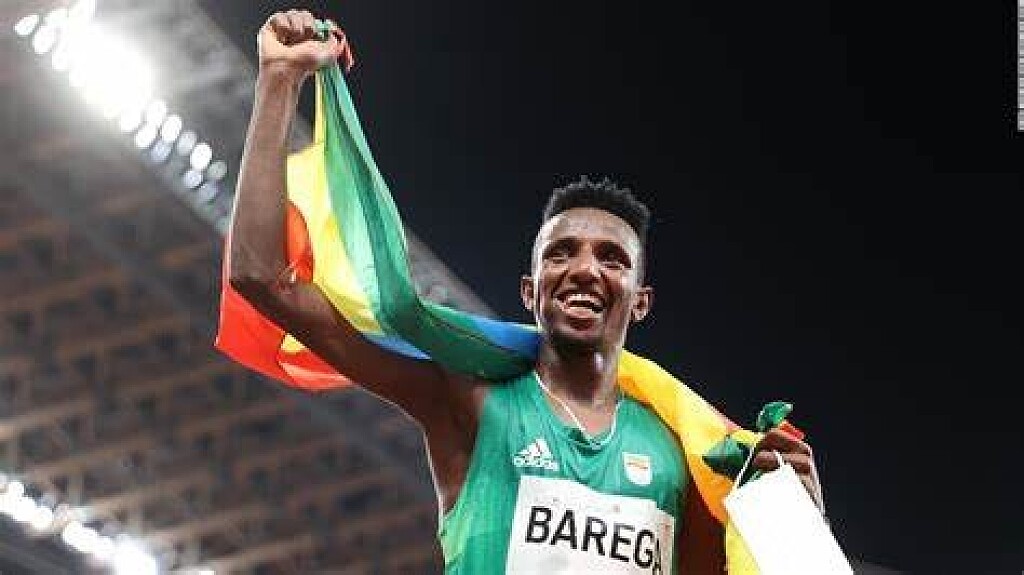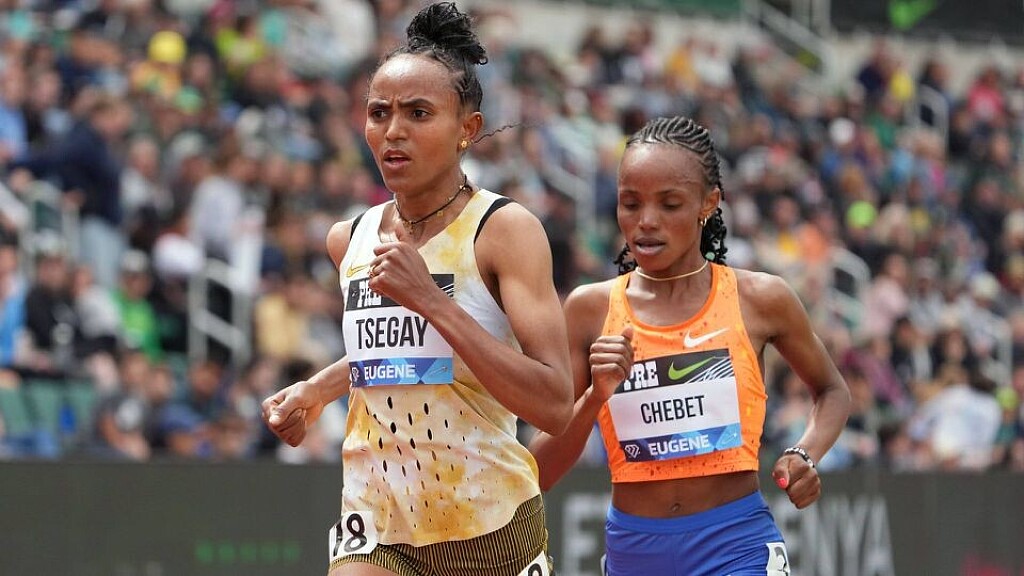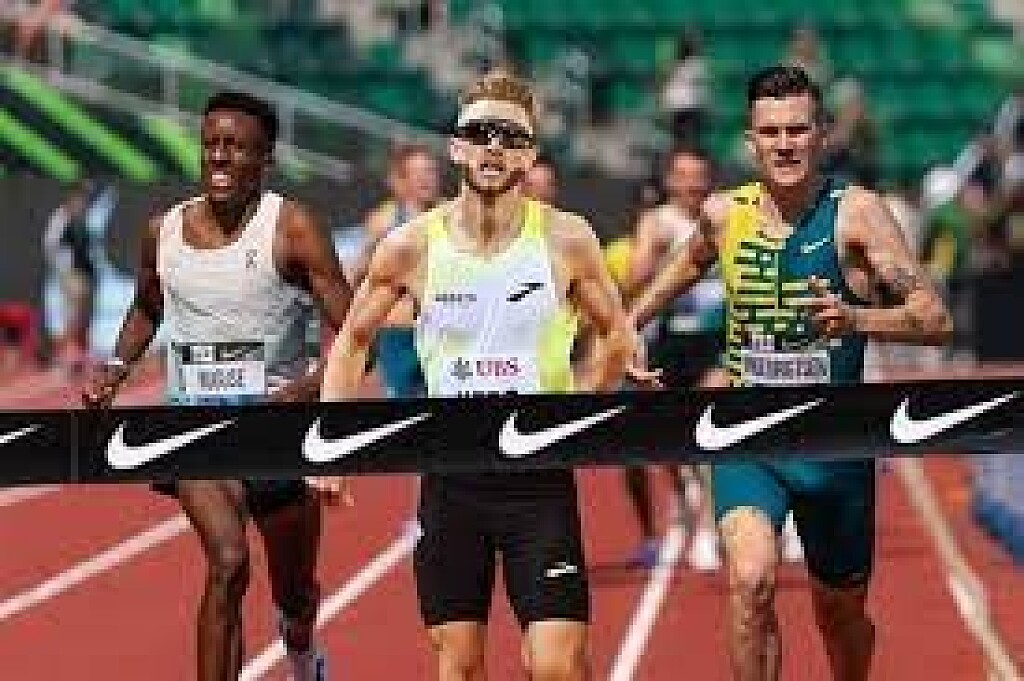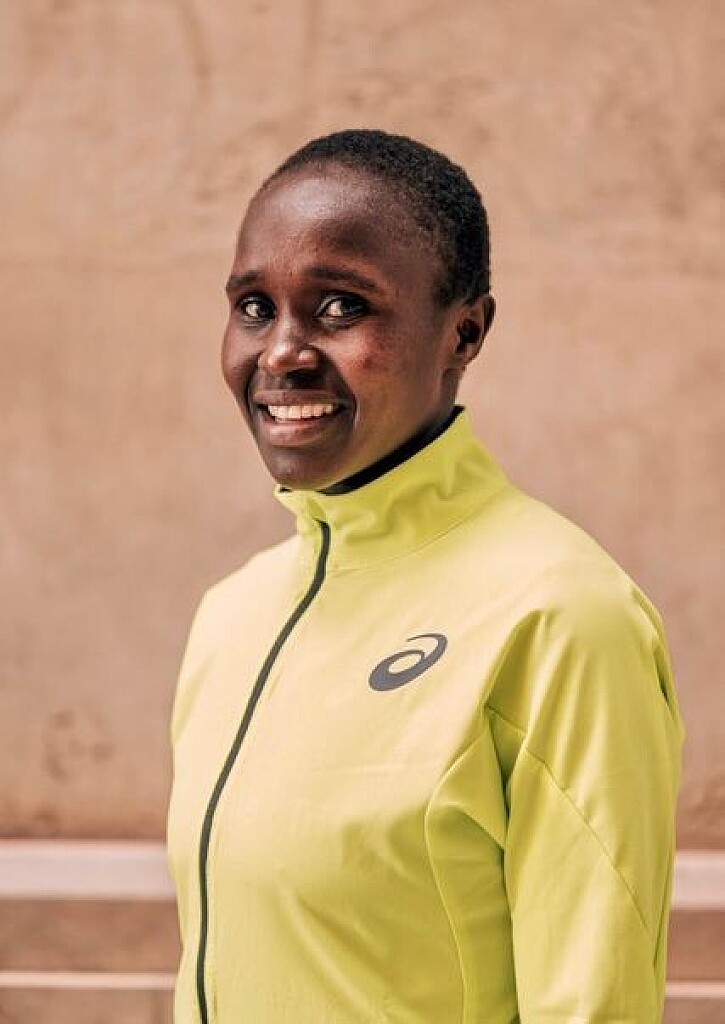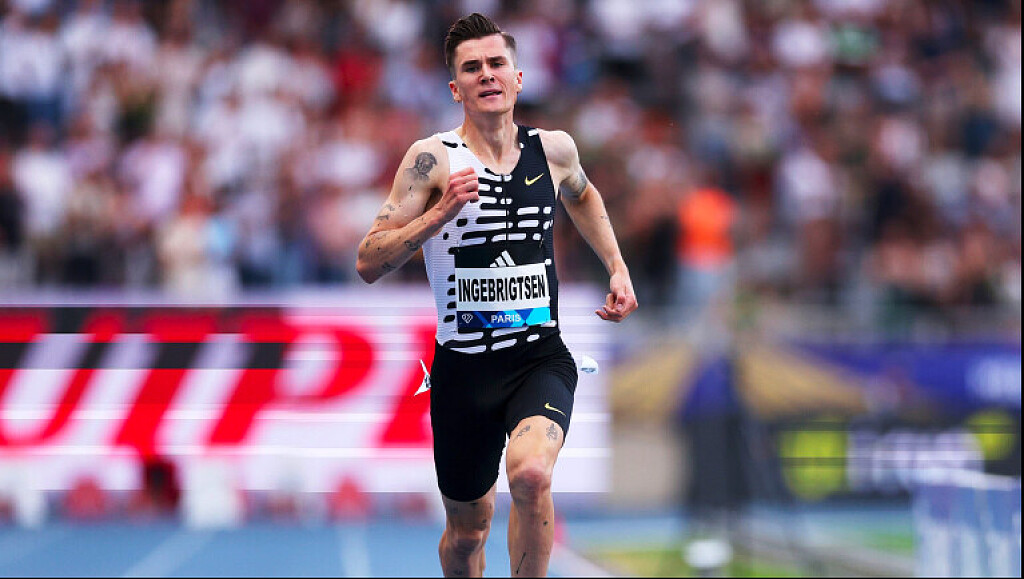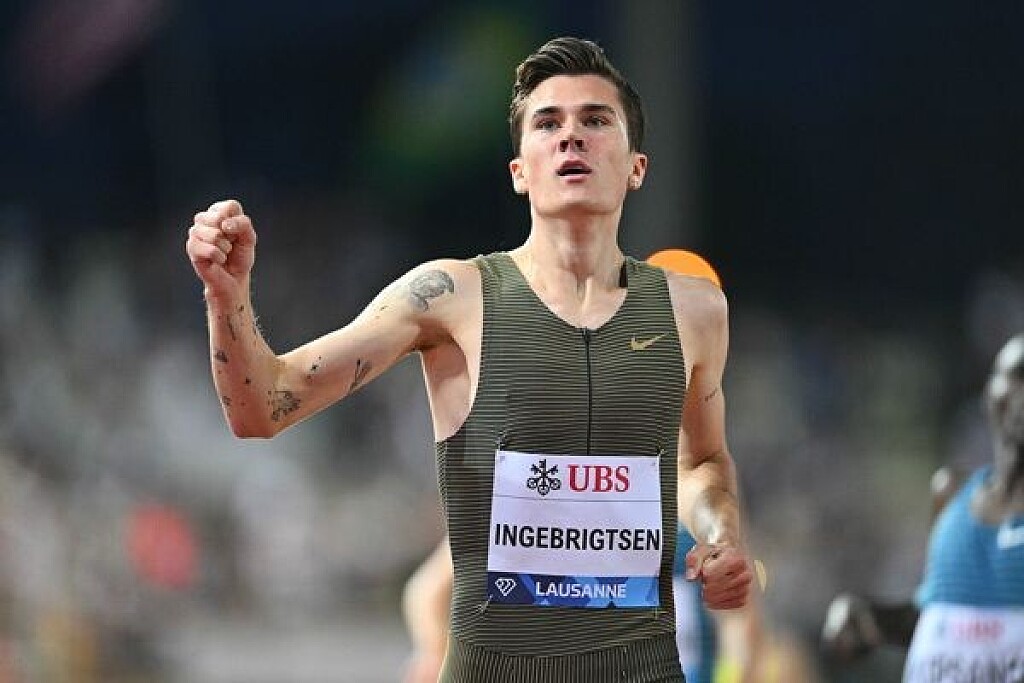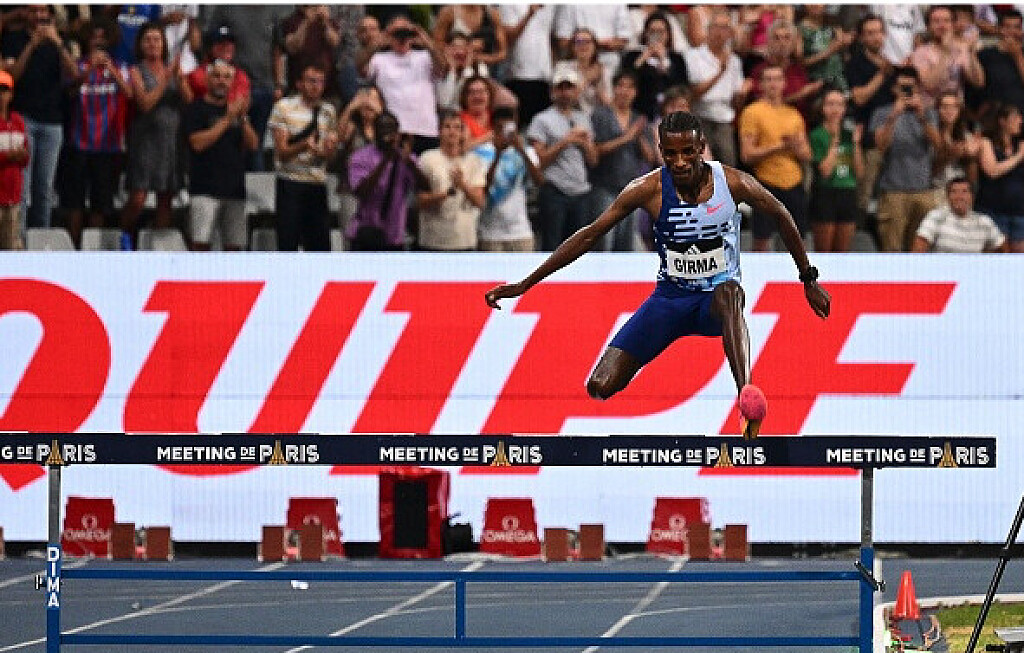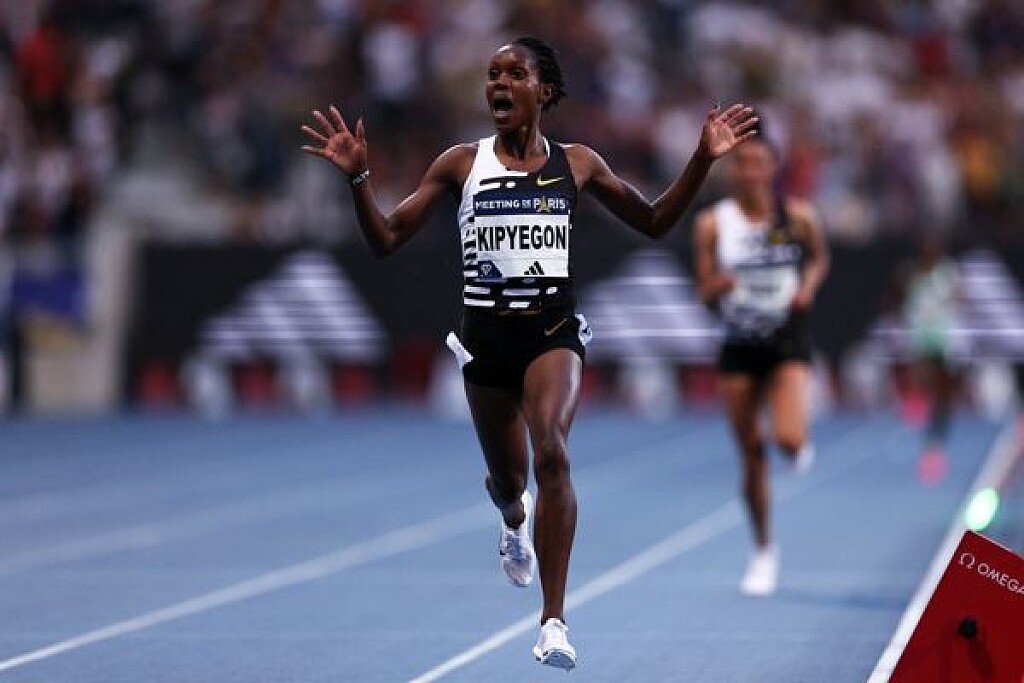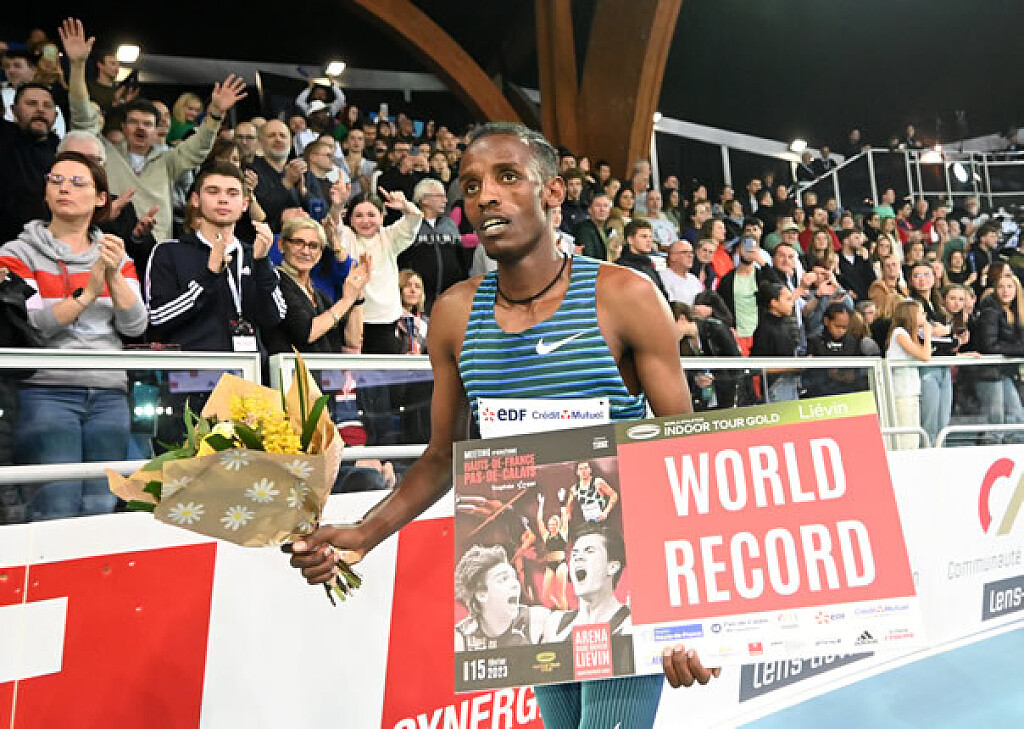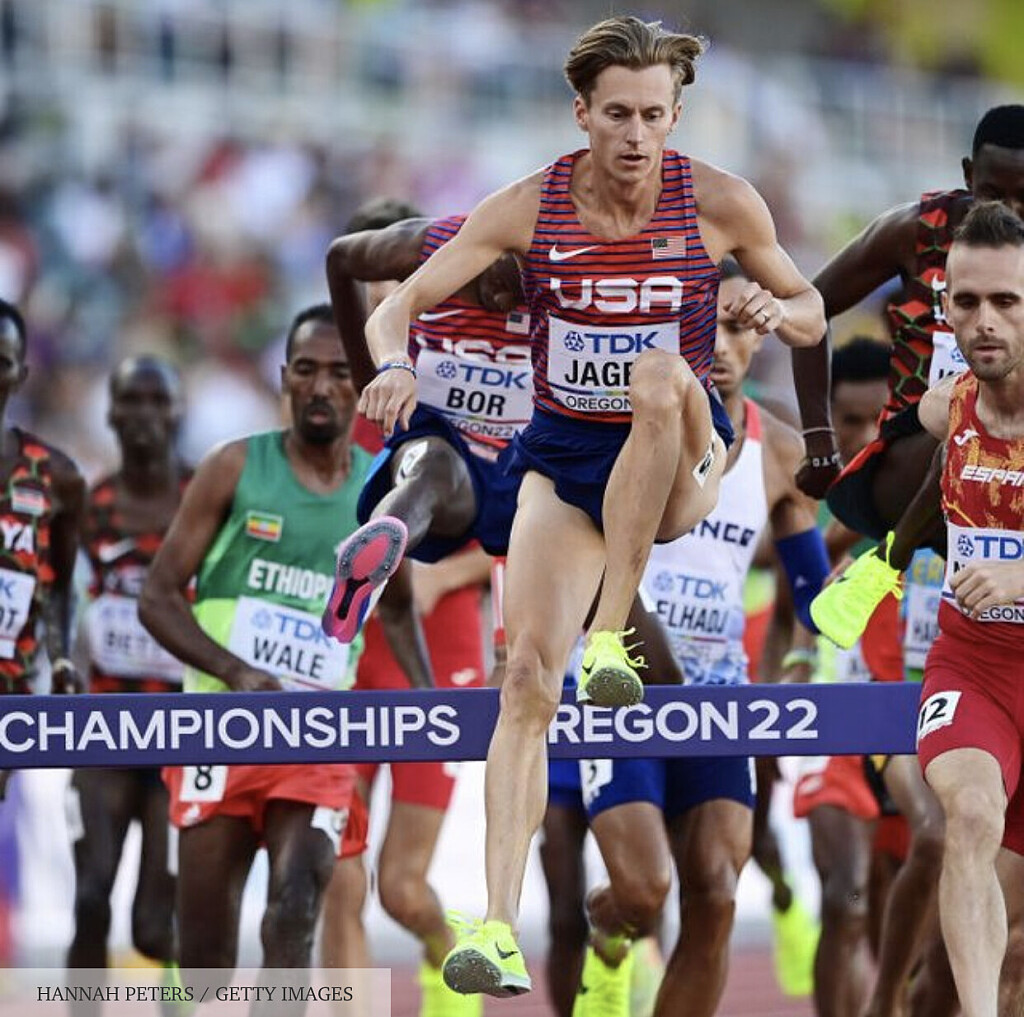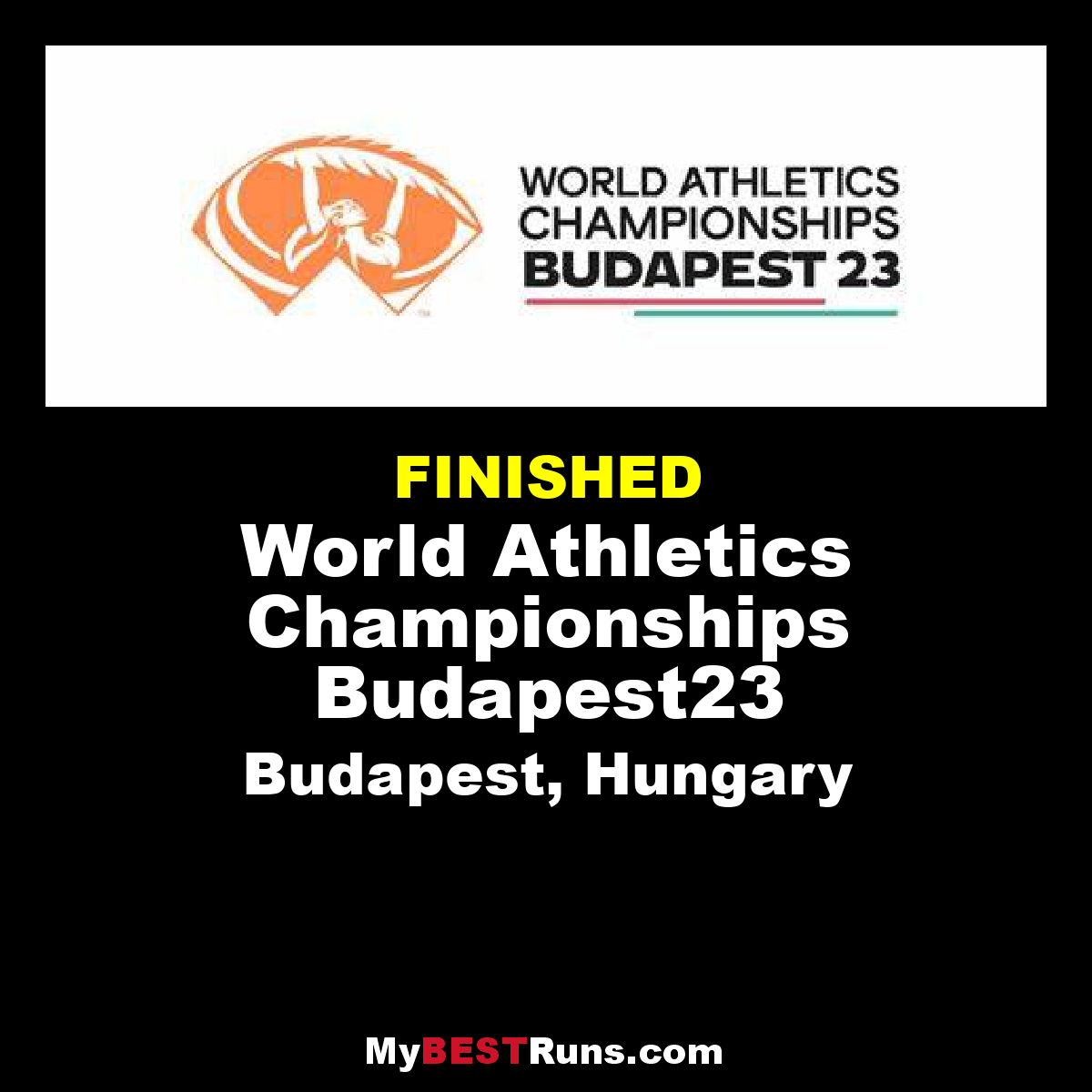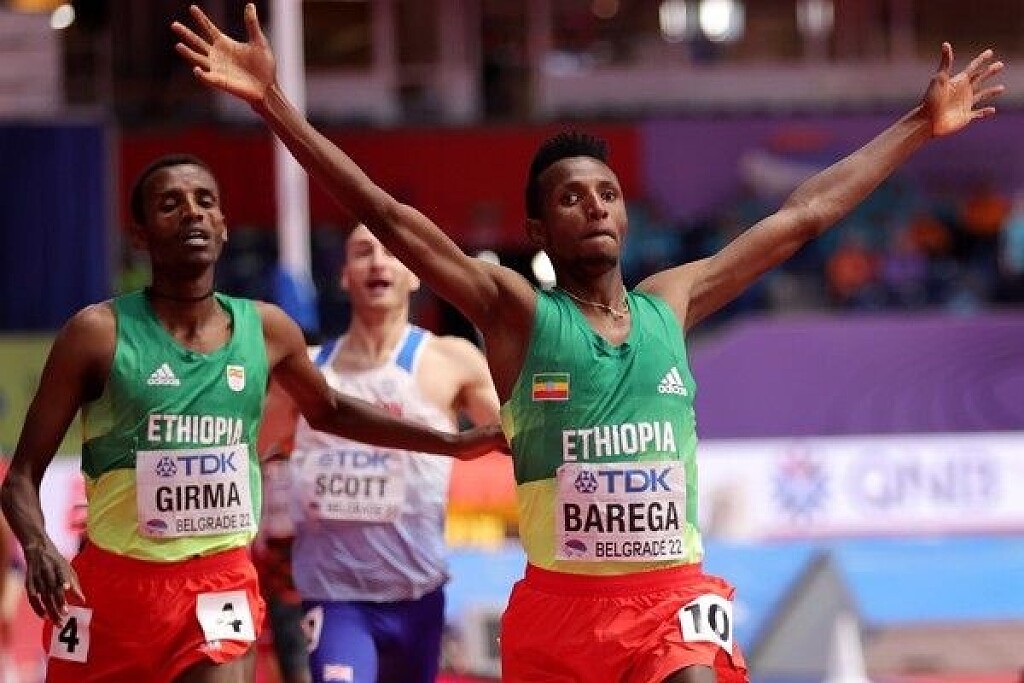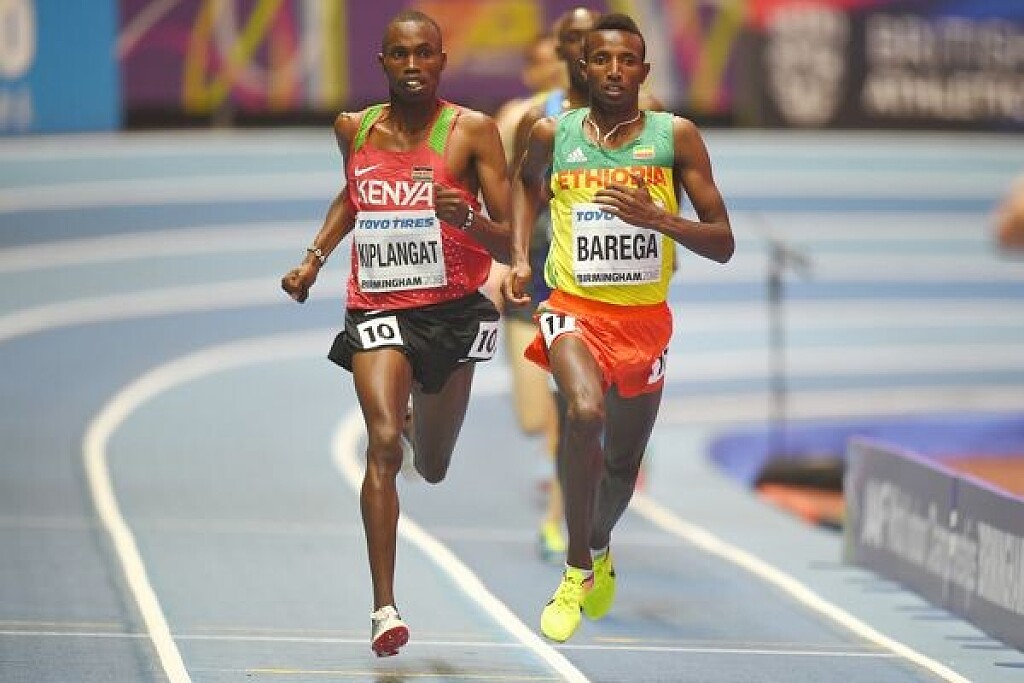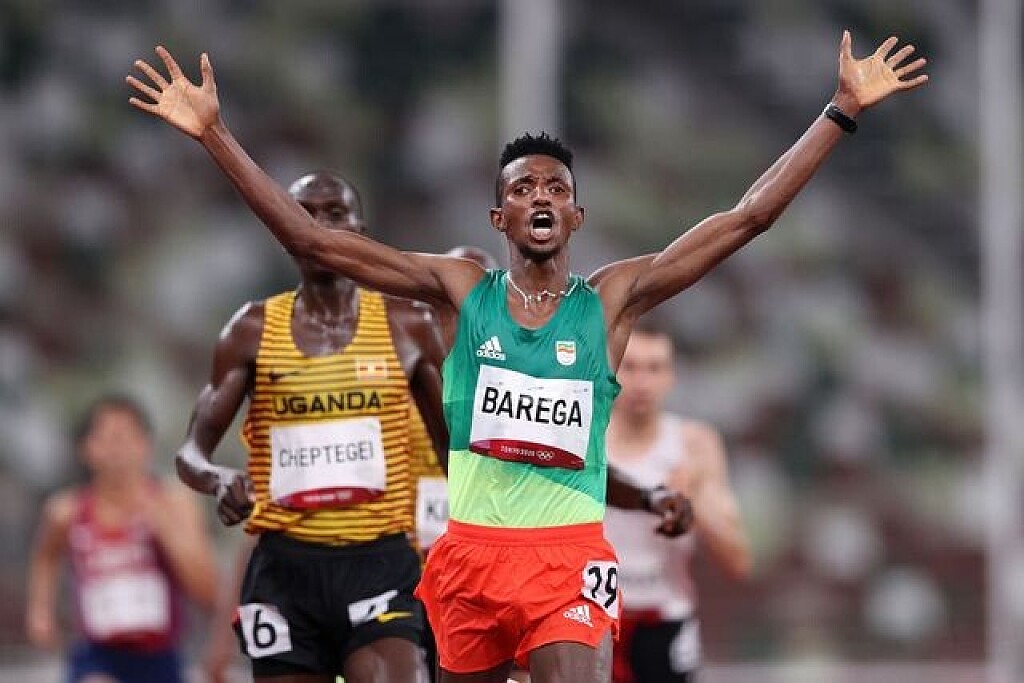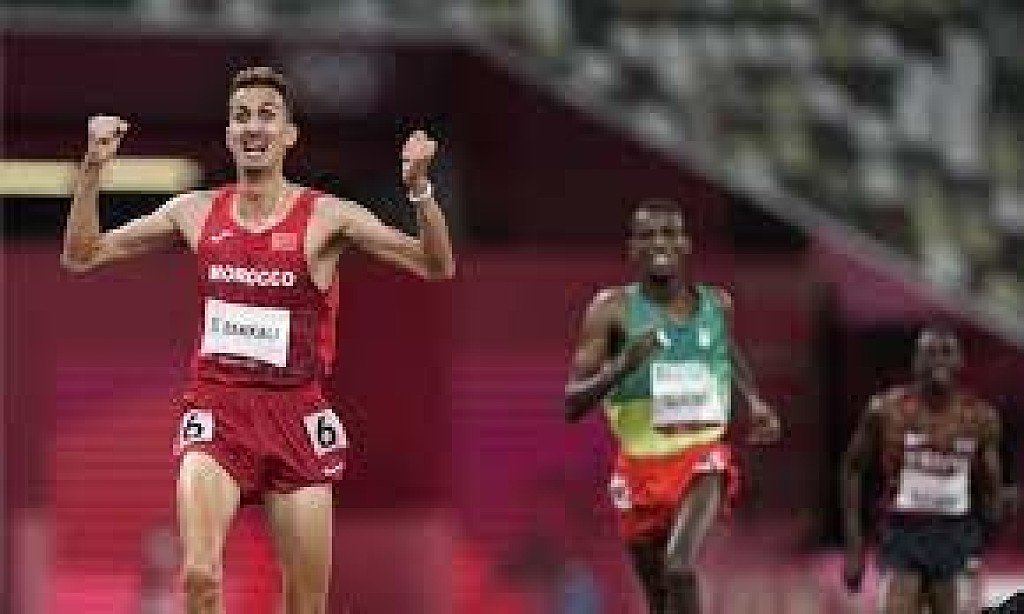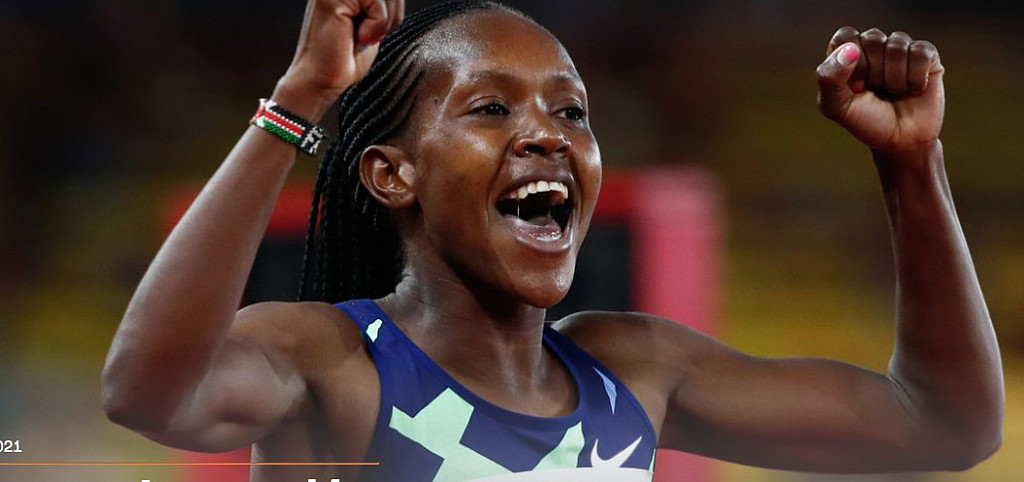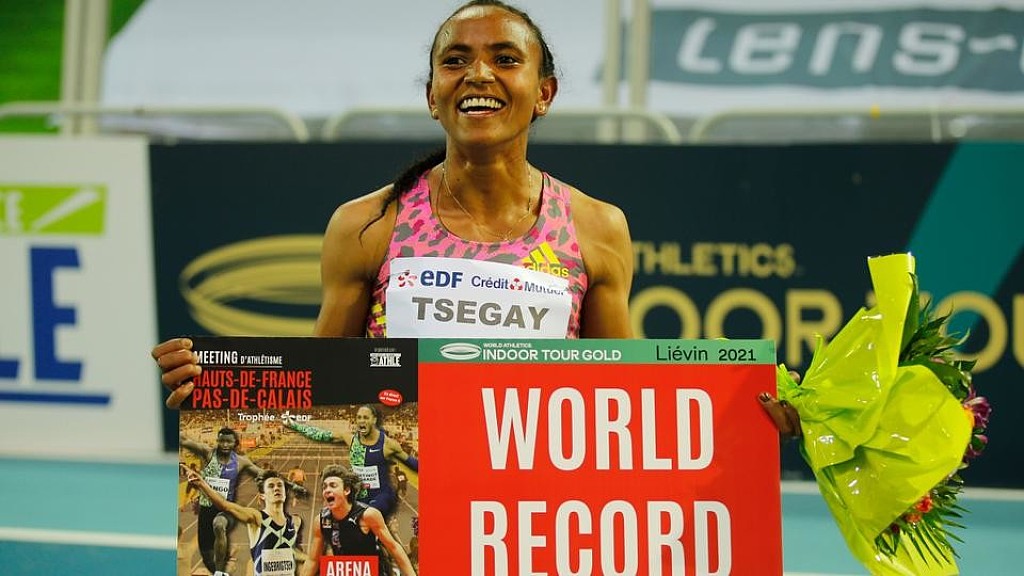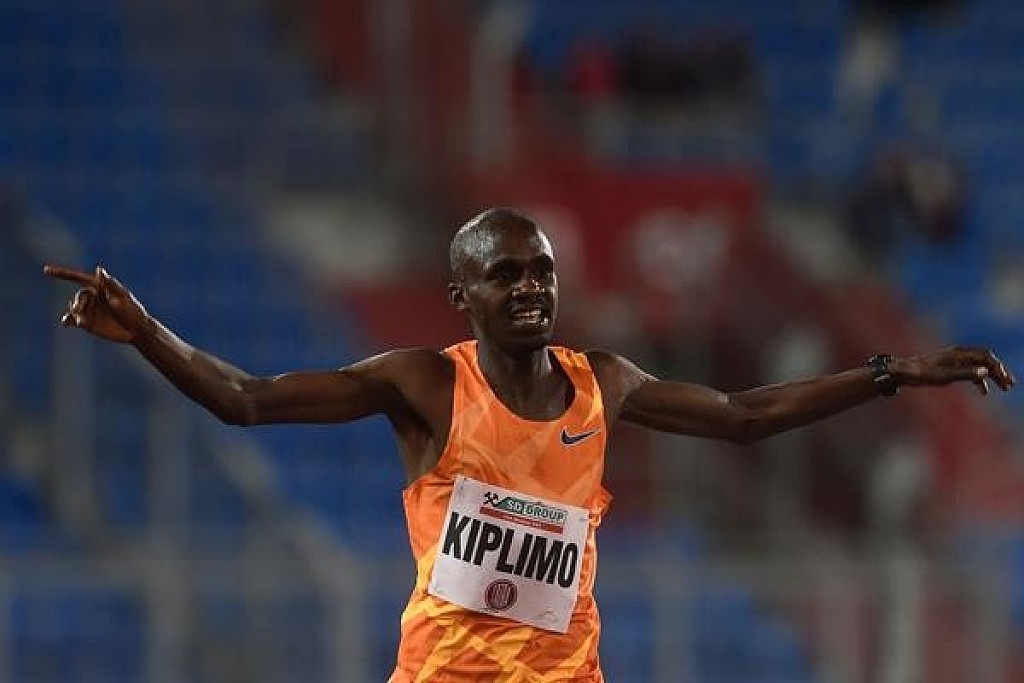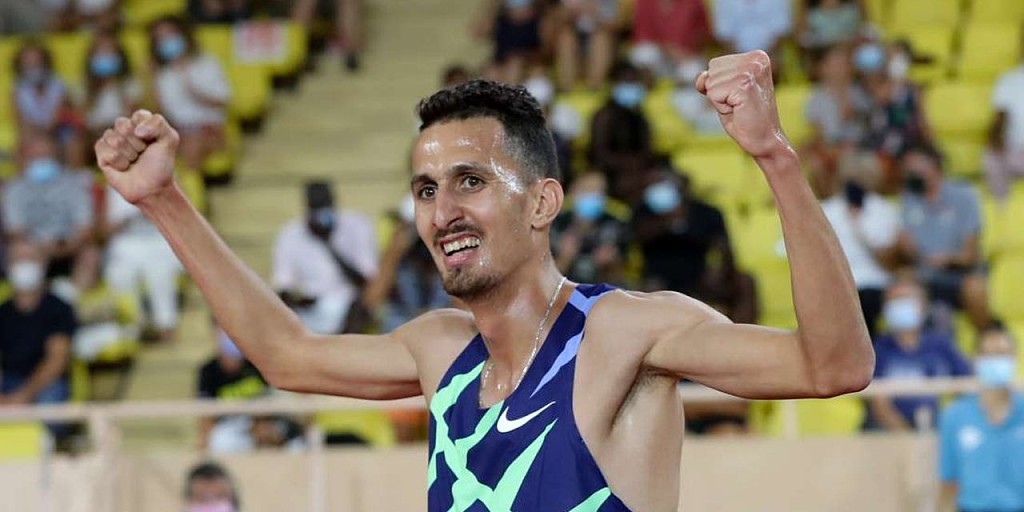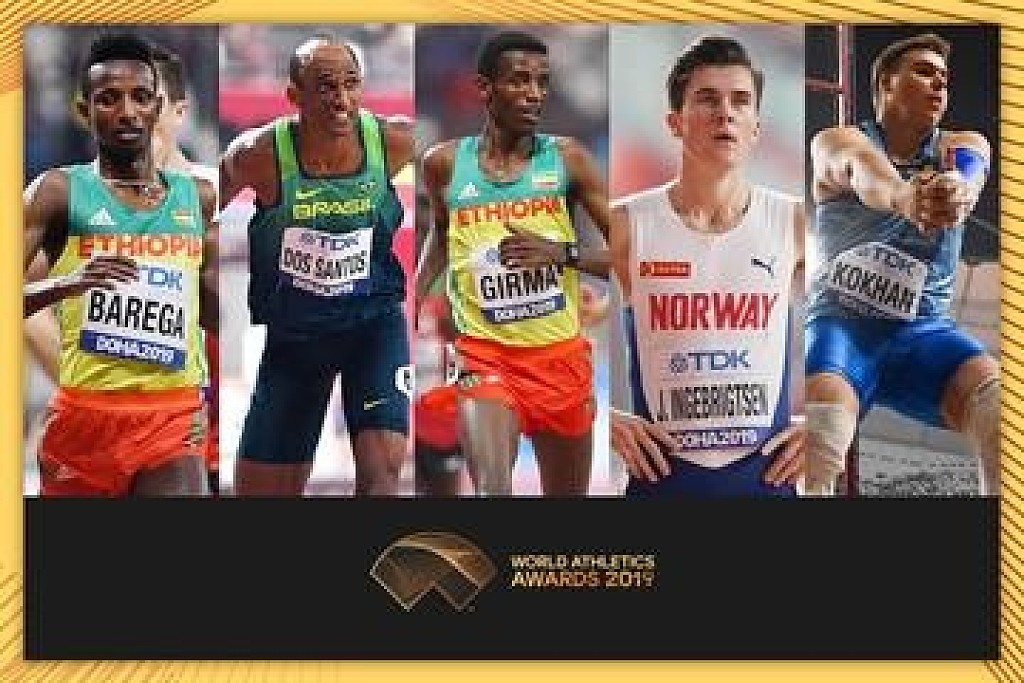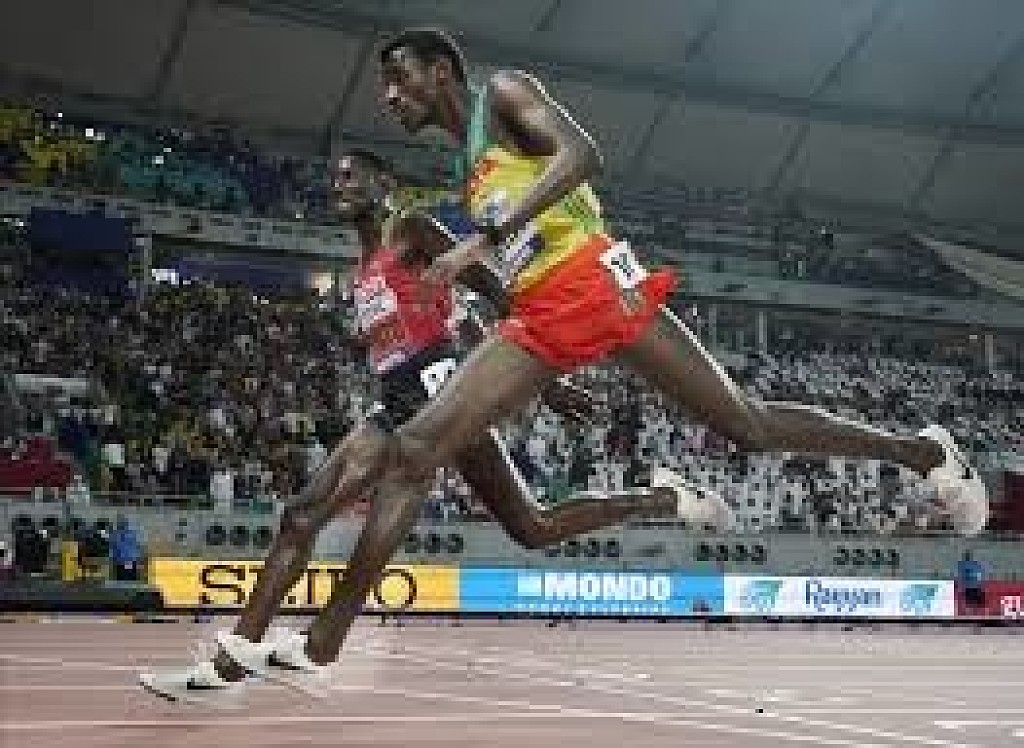Running News Daily
Running News Daily is edited by Bob Anderson. Send your news items to bob@mybestruns.com Advertising opportunities available. Train the Kenyan Way at KATA Kenya and Portugal owned and operated by Bob Anderson. Be sure to catch our movie A Long Run the movie KATA Running Camps and KATA Potato Farms - 31 now open in Kenya! https://kata.ke/
Index to Daily Posts · Sign Up For Updates · Run The World Feed
Articles tagged #Lamecha Girma
Today's Running News
Kenya’s Steeplechase Dynasty Under Siege: Edmund Serem Keeps Hope Alive with Tokyo Bronze
For decades, the men’s 3000m steeplechase was as Kenyan as tea fields in Kericho or herds grazing the Rift Valley floor. Since Amos Biwott (first photo) struck Olympic gold in 1968, generations of Kenyan athletes turned the event into a national pig treasure, piling up Olympic and World titles with almost mechanical consistency. But the 2025 World Championships in Tokyo told a different story—one of fading dominance, foreign breakthroughs, and a teenager fighting to keep the flame alive.
A Race That Shook Tradition
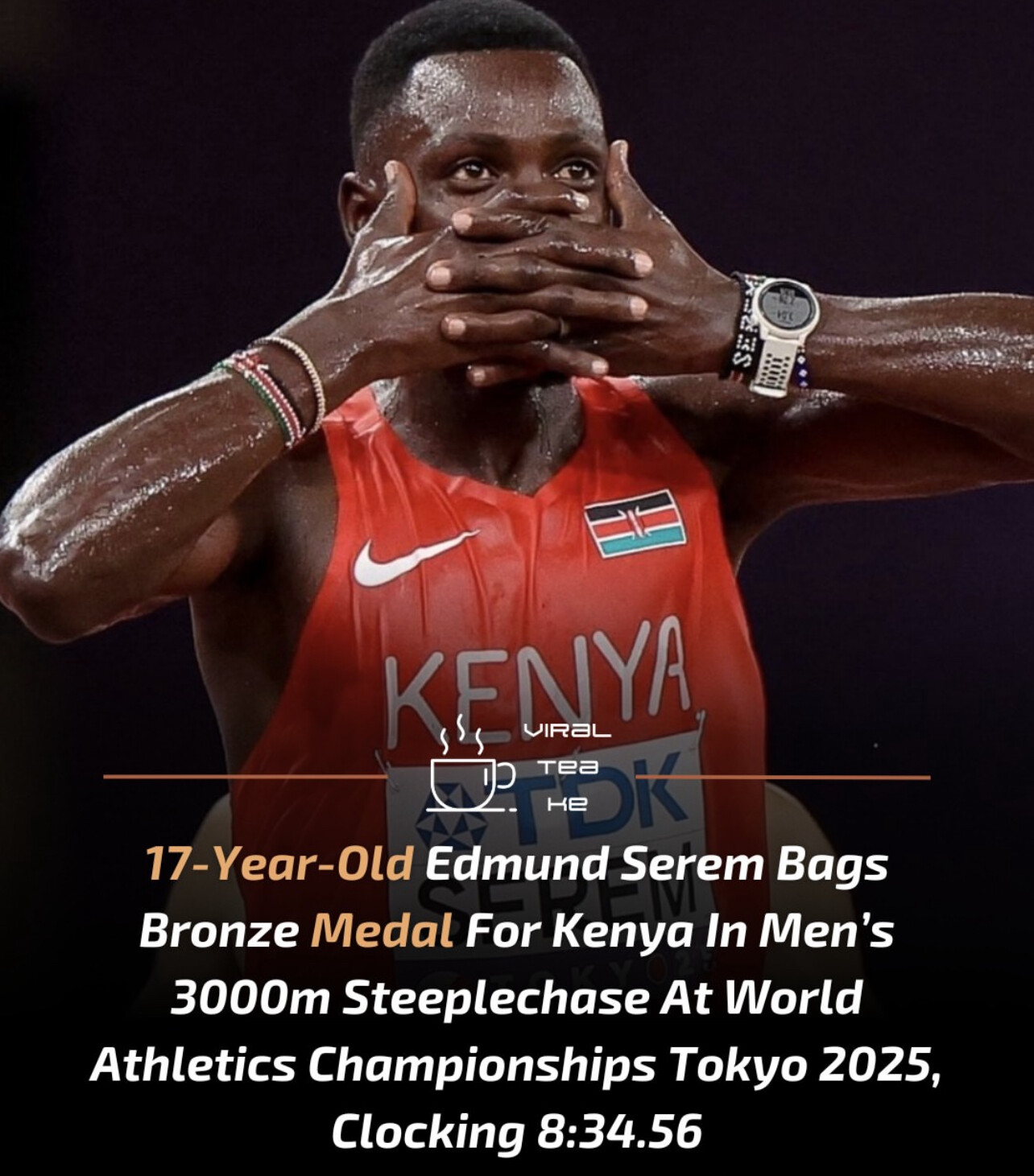
On a humid evening inside Tokyo’s National Stadium, 17-year-old Edmund Serem—younger brother of 2021 World U20 champion Amos Serem—lined up against the world’s best: Olympic champion Soufiane El Bakkali, Ethiopia’s Lamecha Girma, New Zealand’s rising star Geordie Beamish, and a host of challengers from Europe, North America, and Asia.
For Serem, the mission was clear: keep Kenya’s flag on a podium that has become increasingly elusive.
From the gun, he ran bravely, shadowing Germany’s Karl Ruppert in the early laps, exchanging leads and refusing to yield. Ethiopia’s Samuel Firewu, Canada’s Jean-Simon Desgagnés, Poland’s Krzysztof Michalski, and Japan’s Ryuji Miura all joined the fight, turning the race into a tactical chess match.

With five laps to go, Serem was still in contention. But as the tempo shifted, the global pack pressed harder. Girma and El Bakkali moved menacingly forward, Desgagnés surged, and Michalski stunned the field by briefly taking the lead.
Then came the bell lap. In a race once synonymous with Kenyan processions, the battle had become a global dogfight. Beamish timed his kick to perfection, flying past Girma and fending off El Bakkali to seize a historic gold in 8:33.88. El Bakkali took silver in 8:33.95, while Serem, showing maturity beyond his years, held his ground to claim bronze in 8:34.56.
A Bittersweet Podium
For Kenya, the bronze carried mixed emotions. Serem’s medal, won by a teenager not yet old enough to vote, proved the country’s future is bright. Yet it also underscored a sobering reality: the days of near-total dominance are gone.
Speaking after the race, Serem was humble but defiant:
“It was tough out there, but I told myself Kenya must be on that podium. I am only 17, and I know this is just the beginning. One day, I will bring the gold back home.”
The Crumbling Fortress
The numbers tell the story. Since Conseslus Kipruto’s World title in 2019, Kenya has not won a global steeplechase gold. Instead, El Bakkali, Girma, and now Beamish have rewritten the script, dismantling the aura of invincibility once carried by legends like Ezekiel Kemboi, Brimin Kipruto, and Stephen Cherono.
Even with Abraham Kibiwot also in Tokyo, Kenya could not tilt the balance back. What was once fortress Kenya is now open territory.
Lessons and a Call to Action
Beamish’s victory offered a warning. New Zealand has no steeplechase tradition, yet through structured NCAA development and consistent Diamond League racing, Beamish matured into a world champion. Kenya, by contrast, must adapt: better coaching, tactical planning, and holistic athlete support are now non-negotiable.
Serem’s bronze provides a flicker of hope. His resilience against seasoned opponents shows promise, but it also highlights the urgent need for reinvestment. Athletics Kenya’s famed pipeline of school and military talent remains deep, but without evolution, history and reputation alone will not win medals.
The Future
As Edmund Serem stood on the Tokyo podium, the Kenyan flag draped over his shoulders, pride and resolve mixed in his eyes. Behind the applause lay a challenge: reclaim what has been lost.
If the steeplechase is to remain the beating heart of Kenya’s athletics heritage, Tokyo 2025 must not mark the continuation of decline, but the beginning of a fightback. And perhaps—just perhaps—it will be Serem, the teenager who dared to dream, who leads the revival.
by Robert Kibet
Login to leave a comment
Historic World Records Dominate 2025 Millrose Games
The 117th Millrose Games, held on February 8, 2025, at New York’s Armory—a venue renowned as “The Fastest Track in the World”—delivered an unforgettable spectacle of middle-distance racing. Athletes shattered world records, national marks, and personal bests across events from the 800m to the 3000m, cementing this edition as one of the most electrifying in the meet’s storied history. Below, we break down the standout performances.
Records Fall in Mile, 3000m, and 800m
1. Wanamaker Mile: Yared Nuguse Rewrites History
Yared Nuguse (USA) stormed to a world indoor mile record of 3:46.63, eclipsing Ethiopian Yomif Kejelcha’s 2019 mark (3:47.01) . In a race missing world champion Josh Kerr (withdrawn due to illness), Nuguse led wire-to-wire, splitting 3:31.74 for 1500m—a North American record—before surging past a fierce challenge from Hobbs Kessler (3:46.90, also under the previous WR) . Australian teen Cam Myers stunned with a world U20 record of 3:47.48, while France’s Azeddine Habz (3:47.56) set a national record.
2. Men’s 3000m: Grant Fisher Outduels Olympic Champion
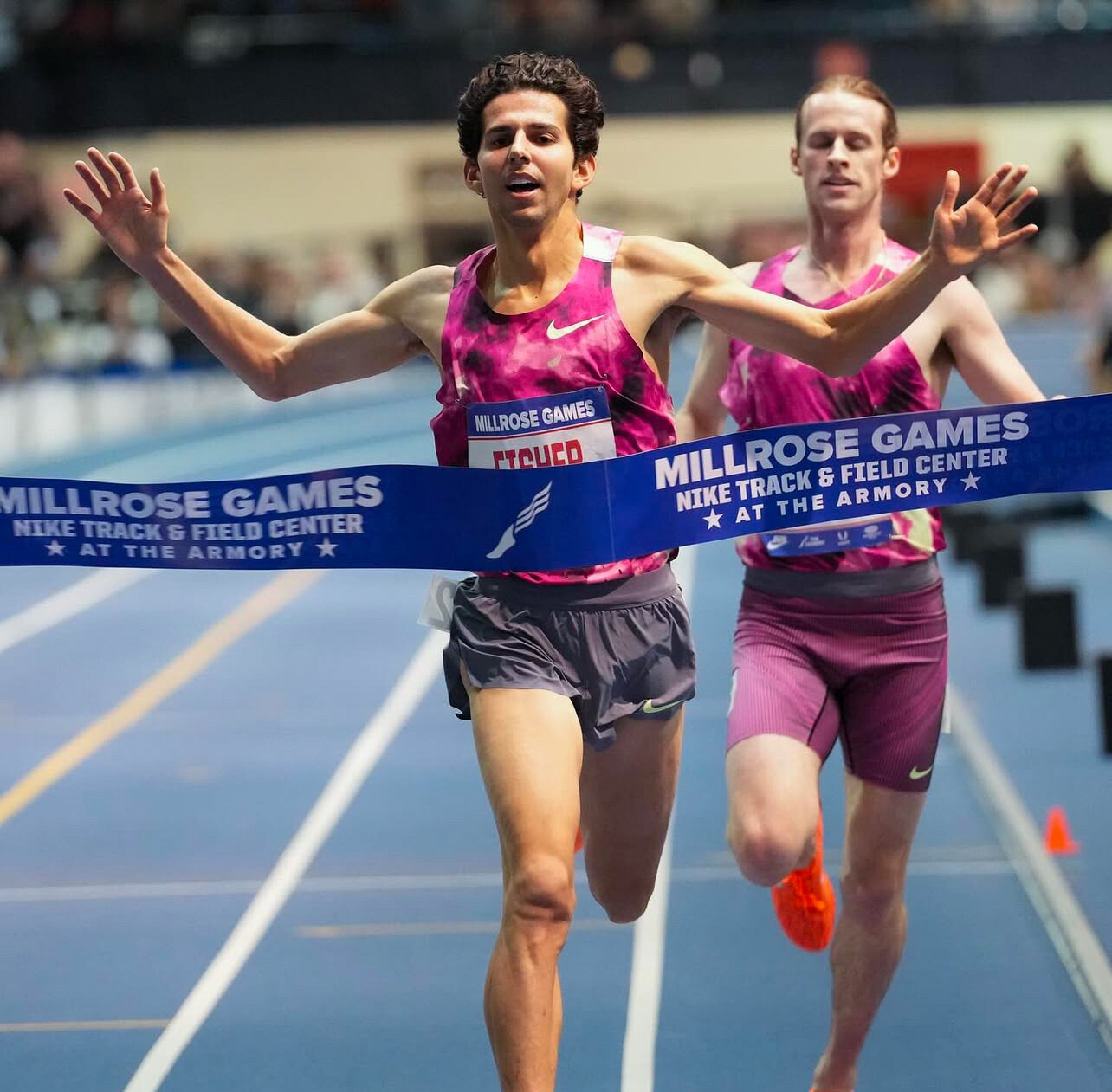
Grant Fisher (USA) and Cole Hocker (USA)—the Olympic 10,000m bronze medalist and 1500m gold medalist, respectively—collided in a tactical masterclass. Fisher’s 7:22.91 broke Lamecha Girma’s world indoor record (7:23.81), with Hocker (7:23.14) also surpassing the old mark . Fisher’s final 200m in 27.50 sealed the win, while France’s Jimmy Gressier (7:30.18) and Australia’s Ky Robinson (7:30.38) set national records .
3. Men’s 800m: Josh Hoey’s American Record Triumph
Josh Hoey (USA) dominated the 800m in 1:43.90, breaking Donovan Brazier’s American indoor record (1:44.21) and holding off Bryce Hoppel (1:44.19 PB) . Sixteen-year-old Cooper Lutkenhaus (1:46.86) smashed the high school record, previously held by Hoey himself .
Women’s Events: Breakthroughs in Mile, 3000m, and 800m

1. Women’s Wanamaker Mile: Georgia Bell’s Tactical Mastery
Georgia Bell (GBR), the Olympic 1500m bronze medalist, edged a stacked field to win in 4:23.35, outkicking Heather MacLean (USA, 4:23.41) and Nikki Hiltz (USA, 4:23.50) . Bell navigated a slow early pace (67.12 for the first quarter-mile) before unleashing a 61.97 final lap, crediting her composure in a “hard and messy” race .
2. Women’s 3000m: Whittni Morgan’s Commanding Victory
Whittni Morgan (USA) surged late to win in 8:28.03, a personal best, ahead of Josette Andrews (USA, 8:29.77) and Sarah Healy (IRL, 8:30.79 NR) . Ethiopia’s Tsigie Gebreselama (8:33.13) and Australia’s Jessica Hull (8:30.91) added depth to a fiercely competitive race .
3. Women’s 800m: Shafiqua Maloney’s Dominance
Shafiqua Maloney (VIN) claimed victory in 1:59.07, fending off a late charge by Addy Wiley (USA, 2:00.14) . Olivia Baker (USA, 2:00.02 PB) and Kaela Edwards (USA, 2:00.14) rounded out the podium in a race showcasing tactical grit .
With world records in the mile (Nuguse) and 3000m (Fisher), plus a slew of national and age-group marks, the 2025 Millrose Games underscored the rising global standard in middle-distance running. As athletes shift focus to outdoor seasons, these performances set the stage for a thrilling 2025 World Championships.
by Boris Baron
Login to leave a comment
NYRR Millrose Games
The Pinnacle of Indoor Track & Field The NYRR Millrose Games, first held in 1908, remains the premier indoor track and field competition in the United States. The 2025 edition will once again bring the world’s top professional, collegiate, and high school athletes to New York City for a day of thrilling competition. Hosted at the New Balance Track &...
more...Emerging Kenyan star Serem inspired by family’s steeplechase passion
Edmund Serem’s steeplechase triumph at the World U20 Championships in Lima was very much the result of a family effort.
Not only does he have older brother Amos – the 2021 world U20 champion – as a role model, he also has his father to thank for getting him into athletics, and particularly the steeplechase.
“It has always been our dad's dream to see us (Amos and Edmund) achieve what he wanted to achieve for himself as a youth, but didn't due to lack of support,” said Serem.
During their youth, their father took them to several athletics competitions around Kenya, and went on to provide his sons with everything they needed to establish their running careers.
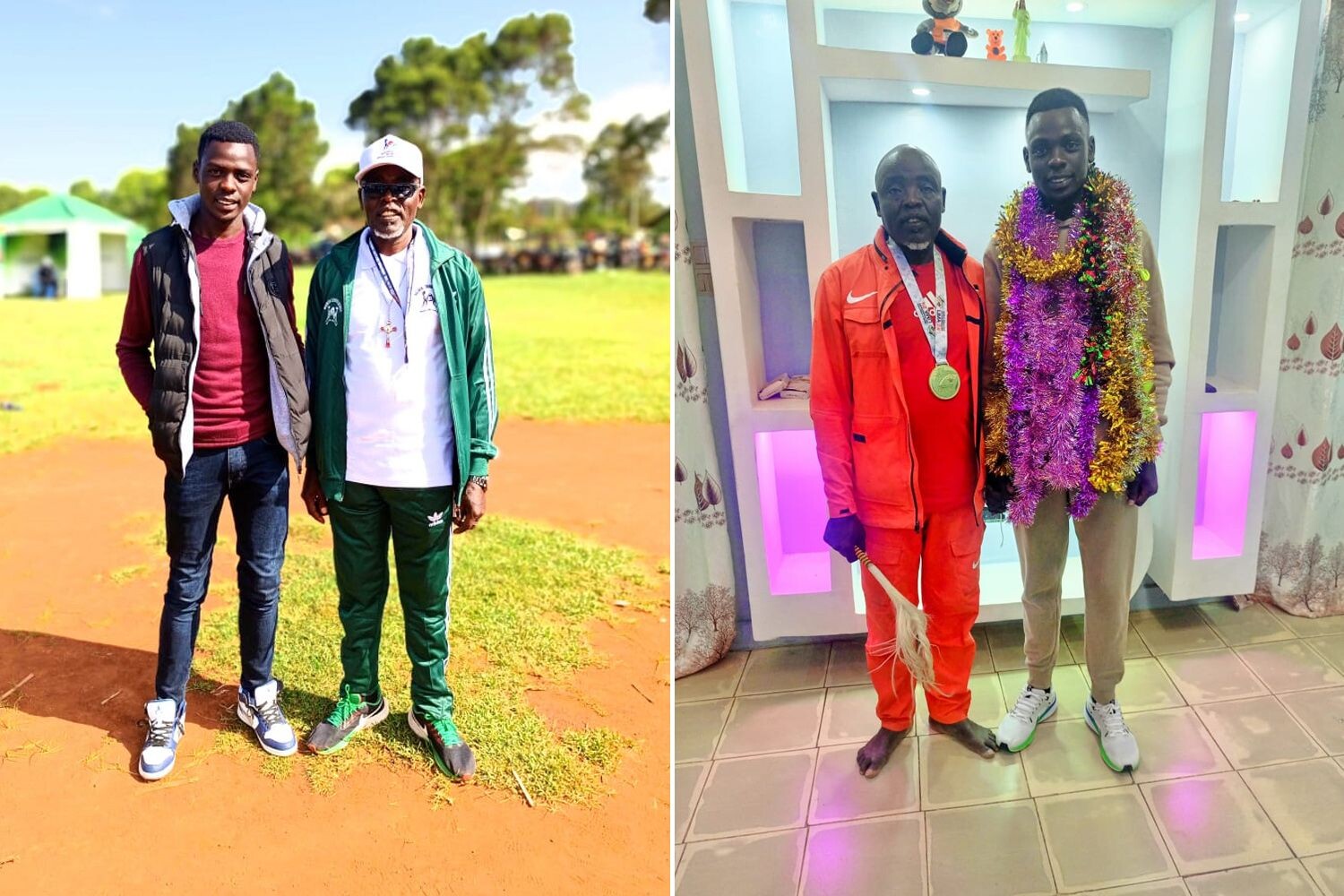
“He would buy training shoes and running apparel and provide transport money for us to attend all the weekend meetings in the region,” recalled Serem, adding that their father chose the steeplechase distance for them.
“He would show us videos of Ezekiel Kemboi, Brimin Kipruto, Conseslus Kipruto and other steeplechasers competing at major championships. He erected barriers for us to practice jumping over and was so careful in choosing the right surfaces for us to do so as he didn't want us to get injured.”
Serem started running at the age of eight. Despite Amos being older than him, Edmund would join his brother on training runs, though would often take a shorter route. “My brother would then have to run faster and try to finish his route in the time it took me to complete the shorter one.”
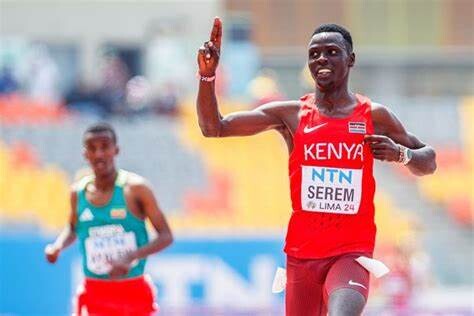
When Amos started high school, the brothers trained under different coaches and environments. Edmund would later join St Patrick's Iten High School and trained under the famous Irish coach, Brother Colm O'Connell.
Edmund missed out on some competitive opportunities during his early high school years due to the Covid pandemic. Amos, meanwhile, went on to train under Patrick Sang in Kaptagat, but fate would bring the two brothers back together again.
They both now train in Kaptagat under coach Sang's programme. Despite being in two separate camps, wearing different brands and under two separate management groups, their training camps are just 600 metres apart and they see one another every morning for their training.
Sibling rivalry
Serem speaks fondly of his brother. While he has no desire to outshine his brother, he always enjoys competing alongside him in races. That feeling appears to be mutual, too.
"Every time my brother and I are in the same race, he usually performs very well,” says Serem. “I don't know if it is because he doesn't want me to beat him or because he feels stronger when I am around him, but I still look forward to racing against him.”
Both brothers have earned world U20 steeplechase titles in recent years. Three years after Amos’s triumph on home soil in Nairobi, Edmund followed in those footsteps by taking the steeplechase gold medal at this year’s World U20 Championships in Lima.
In a race in which 12 of the 16 finalists set PBs, Serem led a Kenyan 1-2 from teammate Mathew Kosgei to win in 8:15.28. Not only is it a world-U20-leading time, it’s also the third fastest in history by an U18 athlete.
He eventually won by more than two seconds, but he had struggled with stomach ache in the heats three days prior.
“After I rehydrated and recovered from the heats, my body felt good for the final,” he says. “I had high hopes of winning the race, and I told myself on the start line that if anyone else wanted to win it, they would have to fight hard for it.”
The performance capped a remarkable season for the 16-year-old. Back in March he finished sixth at the African Games, then he narrowly missed making the team for the Paris Games, finishing fourth at Kenya’s Olympic Trials. Just eight days later, he earned silver at the senior African Championships before ending his season on an even bigger high with his triumph in Lima.
Managing expectations
Having achieved so much at such a young age, and with the steeplechase being one of Kenya’s strongest disciplines, Serem knows that all eyes will be on him and his brother in the coming years. He takes it all in his stride, though.
"Most of my friends and relatives now believe more in me and see our dream to restore the steeplechase glory to Kenya becoming a reality,” he says. “Many are telling me that my brother and I are the potential runners to dominate the steeplechase in the future.”
Apart from two editions of the Games that the country boycotted, Kenya won every Olympic title in the men’s 3000m steeplechase from 1968 to 2016. That streak came to an end in 2021 when Soufiane El Bakkali won gold in Tokyo. The Moroccan has won three more global titles since then, while the world record was broken last year by Ethiopia’s Lamecha Girma.
But Kenya is keen to reassert its dominance on the event.
Serem was one of several up-and-coming talents who were recently invited to meet with Kenya's Cabinet Secretary for Sports and Athletics Kenya senior officials to plan a way forward in ensuring Kenya remains a powerhouse in athletics.
“We talked about strategic plans to nurture and work with the young and emerging stars to maintain Kenya's glory in athletics into the future, especially in the steeplechase,” he said. “In recent years the men's steeplechase has been dominated mostly by Morroco's Soufiane El Bakkali, but we plan to end that.”
Although he’ll be an U20 athlete for two more years, and will be young enough to defend his world U20 title in 2026, Serem already has his eye on competing at the World Athletics Championships Tokyo 25.
“We’re taking things one step at a time,” he says. “The first step will be to make the team at the national trials, and then we will make the plans for the World Championships after that.”
Serem and his training group spent the past month working primarily on gym work before gradually moving to some longer and easier runs to build endurance. He may also participate in some local cross-country races as part of his training.
Heading into next year and beyond, perhaps the biggest motivating factor for both Edmund and Amos will be to accomplish the kind of successes that their father was unable to achieve due to the lack of support back then.
"Our father had a great passion for athletics but didn't get enough support at the time. He has provided Amos and me with everything we’ve needed, telling us, 'I don't want you to lack anything as I did during my time'.
“So I don't care which one of us wins the race,” added Serem of the prospect of racing against his brother in the future. “Because the success will eventually end up at home.”
by Justin Lagat for World Athletics
Login to leave a comment
Tata Steel World 25K Kolkata 2024: Defending Champions Ebenyo and Kebede set to return
The ninth edition of the Tata Steel World 25K Kolkata, the world's first World Athletics Gold Label 25K race, is set to take place on Sunday, December 15, 2024.
With a prize pool of USD 142,214 and equal rewards for men and women, the event will see elite athletes competing for top honors on the fast and scenic streets of Kolkata.

Daniel Ebenyo (Kenya) and Sutume Kebede (Ethiopia), defending champions and current event record holders, will lead the star-studded lineup. Ebenyo set the men's record at 1:11:13 last year, while Kebede clocked 1:18:47 to dominate the women's race. Both are determined to better their timings and defend their titles.
Ebenyo aims to surpass his personal best and challenge the unofficial world record of 1:11:08, set by Eliud Kipchoge during a marathon split. "The Kolkata roads are fast, and conditions are ideal; it's a perfect opportunity to defend my title and better my timing," Ebenyo said.
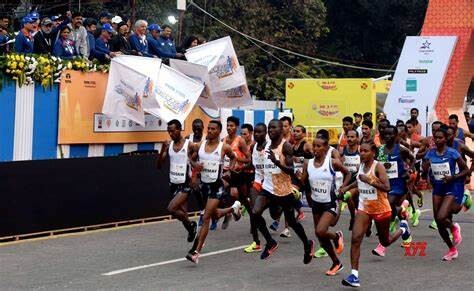
Women's Race
The women's field is packed with talent. Kebede, the reigning champion, has shown remarkable improvement this year with personal bests in the half marathon (1:04:37) and marathon (2:15:55). Her competition includes:
Desi Jisa (Bahrain), the 2022 champion, known for her strong performances in marathons and cross-country events.
Degitu Azimeraw (Ethiopia), 2017 Kolkata champion, fresh off a sixth-place finish at the Chicago Marathon following a comeback post-maternity break. Alemaddis Eyayu (Ethiopia), winner of the 2024 Vedanta Delhi Half Marathon, making her 25K debut.Viola Chepngeno (Kenya), a consistent top-three finisher in international races. Sintayehu Lewetegn (Ethiopia), a World Cross-country bronze medalist. Men's Race Along with the current champion Daniel Ebenyo, there will be some other tough competitors as well.Benson Kipruto (Kenya), Tokyo Marathon 2024 champion and Paris Olympics bronze medalist, who was officially timed at 1:11:39 for 25K this year. Stephen Kissa (Uganda), fifth in the 2023 World Championships Marathon and a half marathon PB of 58:56.Haymanot Alew (Ethiopia), a top performer from last year's race, eager to make it to the podium. Diriba Girma (Ethiopia), making his debut and aiming to follow in the footsteps of his world-champion brother, Lamecha Girma. With runners motivated by an Event Record Bonus of USD 5,000, the competition promises excitement and potentially record-breaking performances.
by MyKhel Staff
Login to leave a comment
Kolkata 25k
In Kolkata, a city rich in history, culture and custom, the third Sunday in December is a date that is eagerly anticipated. The Tata Steel Kolkata 25K (TSK 25K) has become synonymous with running in eastern India since it began in 2014. India’s first AIMS-certified race in the unique 25 km distance, the TSK 25K went global in its fourth...
more...Steeplechaser recovering well after horrific fall in Olympic final, coach says
On Thursday, the coach of Tokyo Olympic steeplechase silver medallist and world record holder Lamecha Girma announced on Twitter that the athlete is in good condition after a horrific fall during the men’s 3,000m steeplechase final Wednesday evening.
In a dramatic last lap, Girma tripped while going over the second-last barrier, falling hard and appearing to lose consciousness. He lay motionless on the track as the other runners finished the race. The Ethiopian was then carried off the track on a stretcher and transported to hospital, where he spent the night.
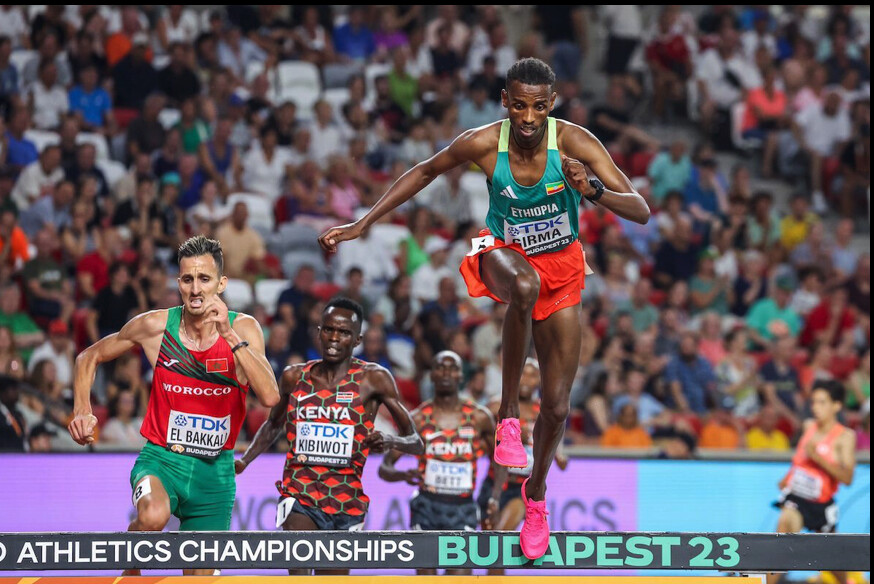

Girma is the world record holder in the event at just 23; he broke the previous record at the 2023 Paris Diamond League, making him one of the favourites heading into the Olympic final. Sadly, it was not to be.
The Elite Running Team announced on Thursday that Girma did not sustain any severe head injuries during the fall, but that he will continue to undergo further scans and examinations before being discharged from the hospital.
Girma’s fall fit right in to the series of disasters occurring at the Stade de France on day seven of athletics. In round one of the men’s 5,000m, viewers and spectators saw six men hit the ground during the first heat. Shortly after, runners in the second heat barely avoid a collision with a wandering cameraman.
“Morocco’s Soufiane El Bakkali wins back-to-back Olympic men’s steeplechase gold” — Canadian Running Magazine
Paris 2024 organizers have told media they will stay in close contact with the Ethiopian National Olympic Committee for updates on Girma’s condition, and wished him a swift recovery.
by Running Magazine
Login to leave a comment
El Bakkali retains Olympic steeplechase title in Paris
Soufiane El Bakkali successfully defended his title in the men's 3000m steeplechase at the Paris 2024 Olympic Games, winning his fourth successive global title in the event.
The Moroccan, competing in just his second competition of the year, emerged from the pack on a frantic final lap to win in 8:06.05.
USA's Kenneth Rooks, who burst into the lead at the bell and led up until the home straight, took a surprise silver in a big PB or 8:06.41, finishing 06 ahead of Kenya's Abraham Kibiwot, earning another bronze following his third-place finish at the World Championships last year.

World record-holder Lamecha Girma was part of the pack when the kicking started on the final lap, but the Ethiopian had fell hard with 200 metres to go and was a non-finisher, eventually having to be carried off the track on a stretcher.
The opening pace was fast as India’s Avinash Sable took an early lead, closely followed by a trio of Ethiopians: Getnet Wale, Samuel Firewu and Girma. El Bakkali was positioned close behind.
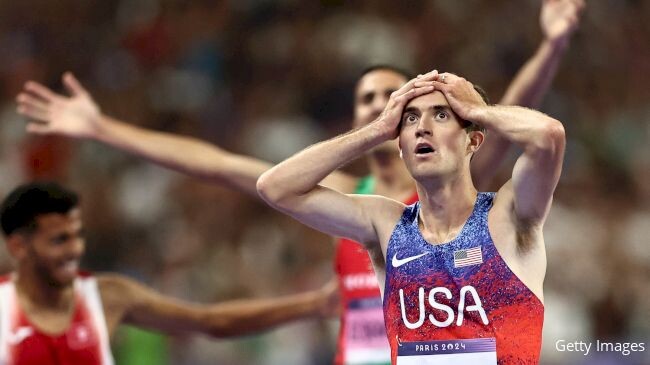
Wale and Firewu then took brief spells at the front with the first 1000m being covered in 2:40.53, putting them on course to break the Olympic record.
The pace settled down during the middle of the race as Sable drifted back through the pack, leaving the three Ethiopians at the front with Firewu doing most of the leading. Uganda’s Leonard Chemutai briefly moved up through the pack, prompting Firewu to increase the pace.
Kenya’s Simon Koech then hit the front and led the field through 2000m in 5:29.8 as the pack started to bunch up. With two laps to go, El Bakkali’s teammate Mohamed Tindouft moved through the field and into second place, but the real drama started on the final lap.
As soon as the bell rang, Rooks darted into the lead and immediately opened up a gap of two metres on the rest of the field. El Bakkali was navigating his way through a field that included Girma, Firewu and Kibiwot.
Among all the chaos, Girma tripped and fell hard, lying motionless on the track. The rest of the field charged forward with El Bakkali moving onto Rooks’ shoulder coming off the bend.
The Moroccan then strode into the lead and sprinted hard off the final barrier, winning in 8:06.05. Rooks crossed the line 0.36 later with Kibiwot claiming the bronze medal in 8:06.47.
Tunisian duo Mohamed Amin Jhinaoui and Ahmed Jaziri finished fourth and fifth. Jhinaoui set a national record of 8:07.73 and Jaziri was rewarded with a PB of 8:08.02, also inside the previous national record.
by World athletics
Login to leave a comment
Paris 2024 Olympic Games
For this historic event, the City of Light is thinking big! Visitors will be able to watch events at top sporting venues in Paris and the Paris region, as well as at emblematic monuments in the capital visited by several millions of tourists each year. The promise of exceptional moments to experience in an exceptional setting! A great way to...
more...Paris 2024: Favorites and best value picks on the track
We are just four days away from the opening ceremony of the 2024 Paris Olympics and a little over a week from the start of the athletics events at the Stade de France. If you’re looking to place your bets for gold or want to know the favorites for each event (according to Vegas sportsbooks), we’ve got you covered with insights and odds to help you get the best value out of your picks.
Men’s 100m
Favorite: Kishane Thompson (JAM) -105 [world leader]
Best value: Oblique Seville (JAM) +900
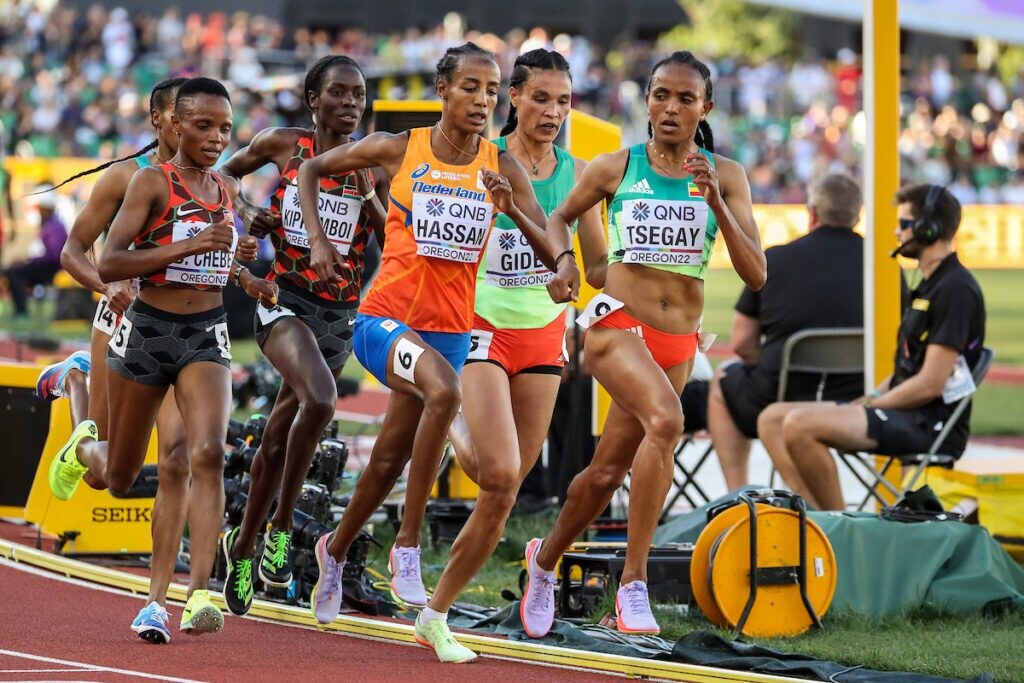
Men’s 200m
Favorite: Noah Lyles (USA) -290 [3x world champion]
Best value: Erriyon Knighton (USA) +1000 [2x world championship medallist]
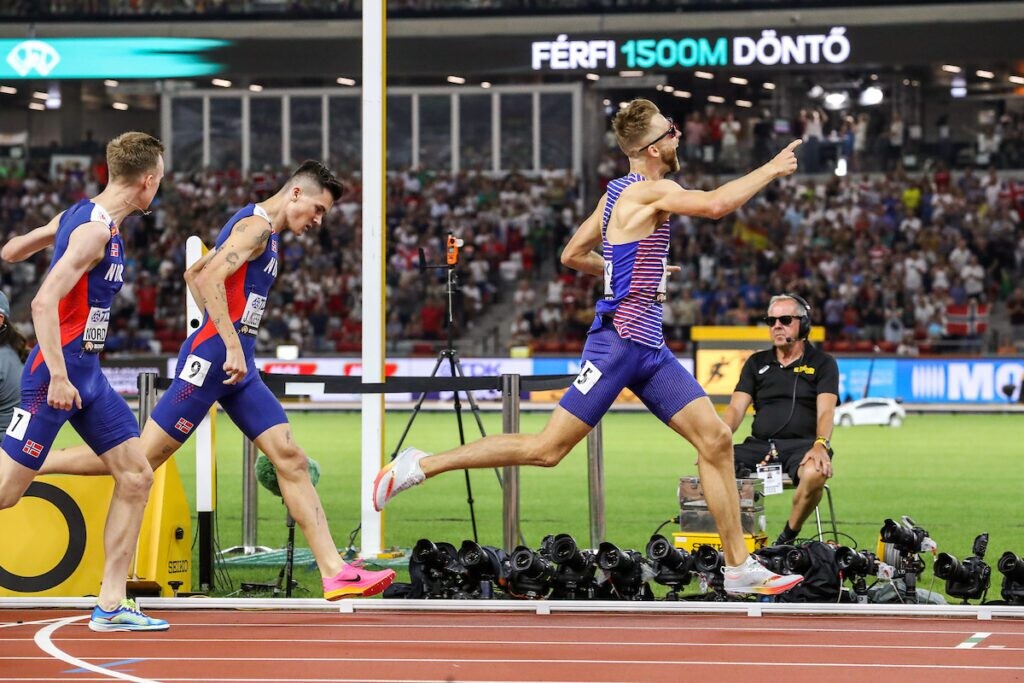
Men’s 400m
Favorite: Matthew Hudson-Smith (GBR) +120 [world silver medalist]
Best value: Steven Gardiner (BAH) +350 [reigning Olympic champion]
Men’s 800m
Favorite: Djamel Sedjati (ALG) -250 [world leader]
Best value: Marco Arop (CAN) +1500 [reigning world champion]
Men’s 1,500m
Favorite: Jakob Ingebrigtsen (NOR) -225 [reigning Olympic champion]
Best value: Josh Kerr (GBR) +175 [reigning world champion]
Men’s 5,000m
Favorite: Jakob Ingebrigtsen (NOR) -290 [reigning world champion]
Best value: George Mills (GBR) +4000
Men’s 10,000m
Favorite: Joshua Cheptegei (UGA) +120 [world record holder]
Best value: Berihu Aregawi (ETH) +600
Men’s 110m hurdles
Favorite: Grant Holloway (USA) -500 [world leader and world champion]
Best value: Hansle Parchment (JAM) +1000 [reigning Olympic champion]
Men’s 400m hurdles
Favorite: Rai Benjamin (USA) +100 [world leader]
Best value: Alison Dos Santos (BRA) +300 [2022 world champion]
Men’s 3,000m steeplechase
Favorite: Lamecha Girma (ETH) -120
Best value: Soufiane El Bakkali (MAR) +190
Men’s marathon
Favorite: Eliud Kipchoge (KEN) -190 [reigning Olympic champion]
Best value: Benson Kipruto (KEN) +900 [2024 Tokyo Marathon champion]
Women’s 100m
Favorite: Sha’Carri Richardson (USA) -225 [reigning world champion]
Best value: Julien Alfred (LCA) +700
Women’s 200m
Favorite: Gabby Thomas (USA) +105 [2020 Olympic bronze medalist]
Best value: Shericka Jackson (JAM) +180 [reigning world champion
Women’s 400m
Favorite: Marileidy Paulino (DOM) -135 [2020 Olympic silver medalist]
Best value: Rhasidat Adeleke (IRL) +700
Women’s 800m
Favorite: Keely Hodgkinson (GBR) -290 [Olympic silver medallist]
Best value: Nia Atkins (USA) +1500
Women’s 1,500m
Favorite: Faith Kipyegon (KEN) -285 [world record holder]
Best value: Jessica Hull (AUS) +1000
Women’s 5,000m
Favorite: Faith Kipyegon (KEN) -285 [world champion]
Best value: Beatrice Chebet (KEN) +750 [world XC champion]
Women’s 10,000m
Favorite: Sifan Hassan (NED) +120 [reigning Olympic champion]
Best value: Gudaf Tsegay (ETH) +250 [reigning world champion]
Women’s 100m hurdles
Favorite: Cyrena Samba-Mayela (FRA) +250 [European champion]
Best value: Tobi Amusan (NGR) +1500 [world record holder]
Women’s 400m hurdles
Favorite: Sydney McLaughlin-Levrone (USA) -700 [world record holder and reigning Olympic champion]
Best value: Femke Bol (NED) +300 [reigning world champion]
Women’s 3,000m steeplechase
Favorite: Beatrice Chepkoech (KEN) n/a [world record holder]
Best value: Sembo Almayew (ETH) n/a
Women’s marathon
Favorite: Tigst Assefa (ETH) +250 [world record holder]
Best value: Hellen Obiri (KEN) +400 [2023 & 2024 Boston Marathon champion]
by Marley Dickinson
Login to leave a comment
Paris 2024 Olympic Games
For this historic event, the City of Light is thinking big! Visitors will be able to watch events at top sporting venues in Paris and the Paris region, as well as at emblematic monuments in the capital visited by several millions of tourists each year. The promise of exceptional moments to experience in an exceptional setting! A great way to...
more...Ethiopia set the bar high at the Paris Olympic Games
Ethiopia is well-prepared to win more than four medals at the Paris 2024 Olympics and write a new chapter in the country's athletics history, a senior official of the Ethiopian Olympic Committee said.
Briefing the media in Addis Ababa, the capital of Ethiopia, Ashebir Woldegiorgis, president of the Ethiopian Olympic Committee, said top-performing athletes are leaving for Paris to pick up scores of gold medals from the event.
"We are leaving for Paris to grab as many gold medals in the marathon, 10,000m, 5,000m, and 3,000m steeplechase among other events. We are not going there to lose," said Woldegiorgis in an interview with Xinhua after the briefing.
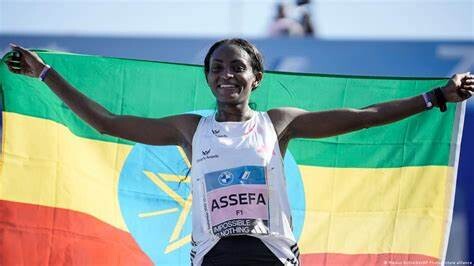
Besides athletics, Ethiopia will also take part in swimming and boxing, among others. Kenenisa Bekele, former world record holder in both 5,000m and 10,000m and Olympic gold medalist at Beijing 2008, will represent the East African country in marathon at the upcoming Olympics. According to the president, the women's marathon event will feature world record-holder Tigist Assefa and three other famous athletes.
Selemon Barega will defend his 10,000m title and also compete in the 5,000m event, while current women's world record holder for 5,000m Gudaf Tsegay will enter both the women's 5,000m and 10,000m races in Paris.
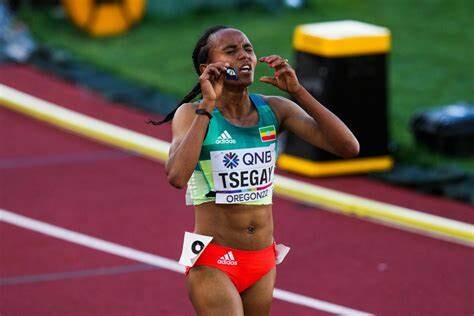
World record holder Lamecha Girma, along with three others, will compete in the 3,000m steeplechase after securing silver in the Tokyo 2020 Olympics.
"We are ready to win. We have made good preparations," Woldegiorgis told Xinhua, noting that it won't be easy to compete with athletes coming from all over the world.
Ethiopia won four medals, including one gold, at the Tokyo 2020 Olympics. The president said this time confidence is high and Ethiopia will by far, surpass its four medals earned at the Tokyo 2020 Olympics.
by Xinhua News
Login to leave a comment
Paris 2024 Olympic Games
For this historic event, the City of Light is thinking big! Visitors will be able to watch events at top sporting venues in Paris and the Paris region, as well as at emblematic monuments in the capital visited by several millions of tourists each year. The promise of exceptional moments to experience in an exceptional setting! A great way to...
more...Gudaf Tsegay, Lamecha Girma head Ethiopia's 43-athlete squad to battle Kenya in Paris Olympics
In the 2021 Tokyo Olympics, Kenya bested Ethiopia as the top African nation, finishing 19th overall with 10 athletics medals.
World record-holders Gudaf Tsegay and Lamecha Girma are set to lead a formidable Ethiopian squad of 43 athletes at the upcoming Paris Olympic Games.
The robust team comprising top-tier talent across various track and field events promises to offer fierce competition to their long-time rivals Kenya in the race for Olympic medals.
Tsegay will be competing in the 10,000 meters, 5,000 meters, and 1,500 meters events.
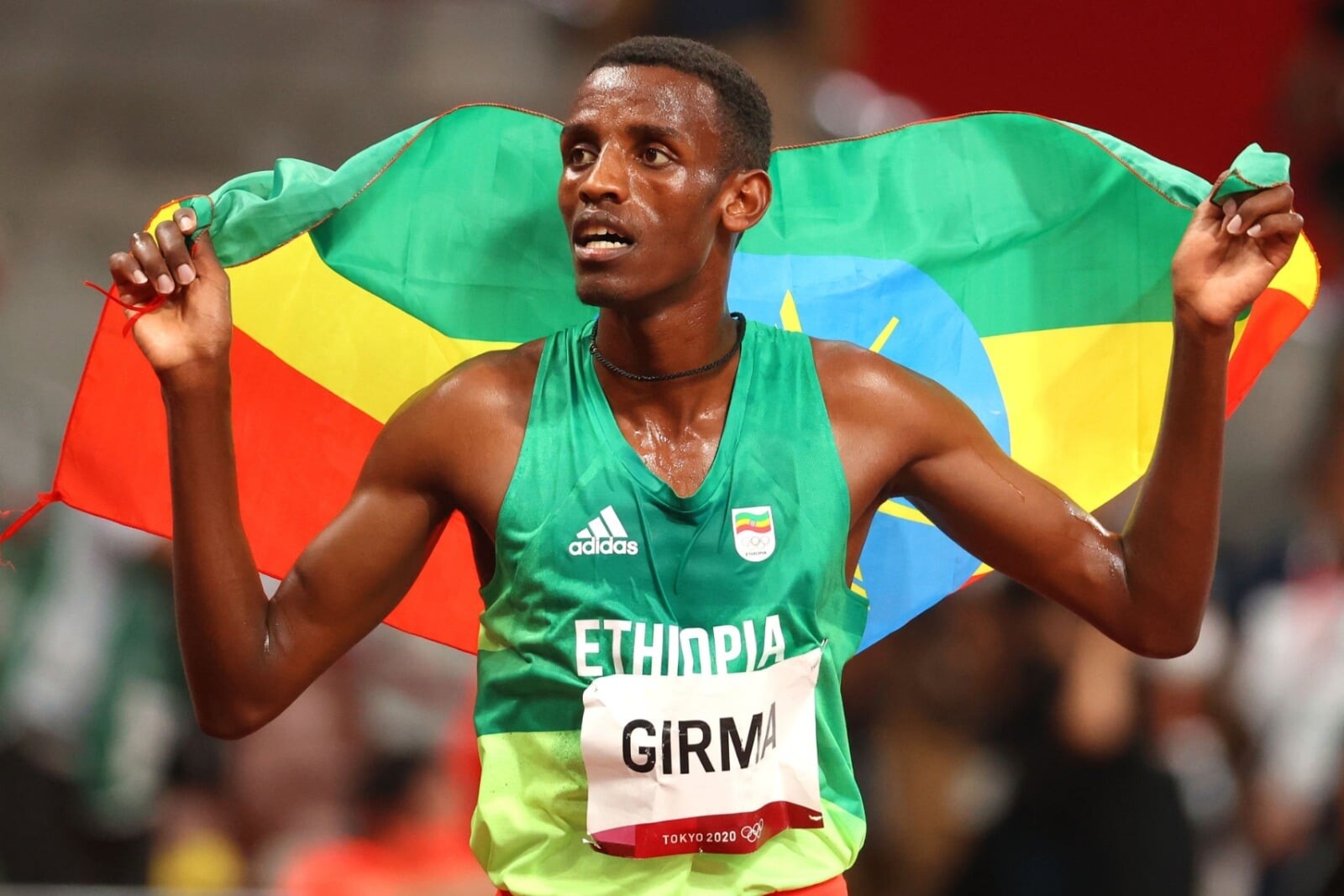
The 27-year-old athlete's standout performance at the Prefontaine Classic, where she shattered the world record in the 5,000 meters with an astounding time of 14:00.21, means she will be challenging rival Kenya's Faith Kipyegon who will chase two gold medals after winning the 1500m and 5000m.
The women's team also boasts an impressive lineup in the 800 meters, featuring Tsige Duguma, Habitam Alemu, and Werknesh Mesele, with Nigist Getachew as the reserve.
In the 1,500 meters, Tsegay will be joined by Birke Haylom and Diribe Wolteji, with Hirut Meshesha on standby. Medina Eisa and Ejgayehu Taye will support Tsegay in the 5,000 meters, with Freweyni Hailu as reserve, while Fotyen Tesfay, Tsigie Gebreselama, and Aynadis Mebratu will compete in the 10,000 meters.
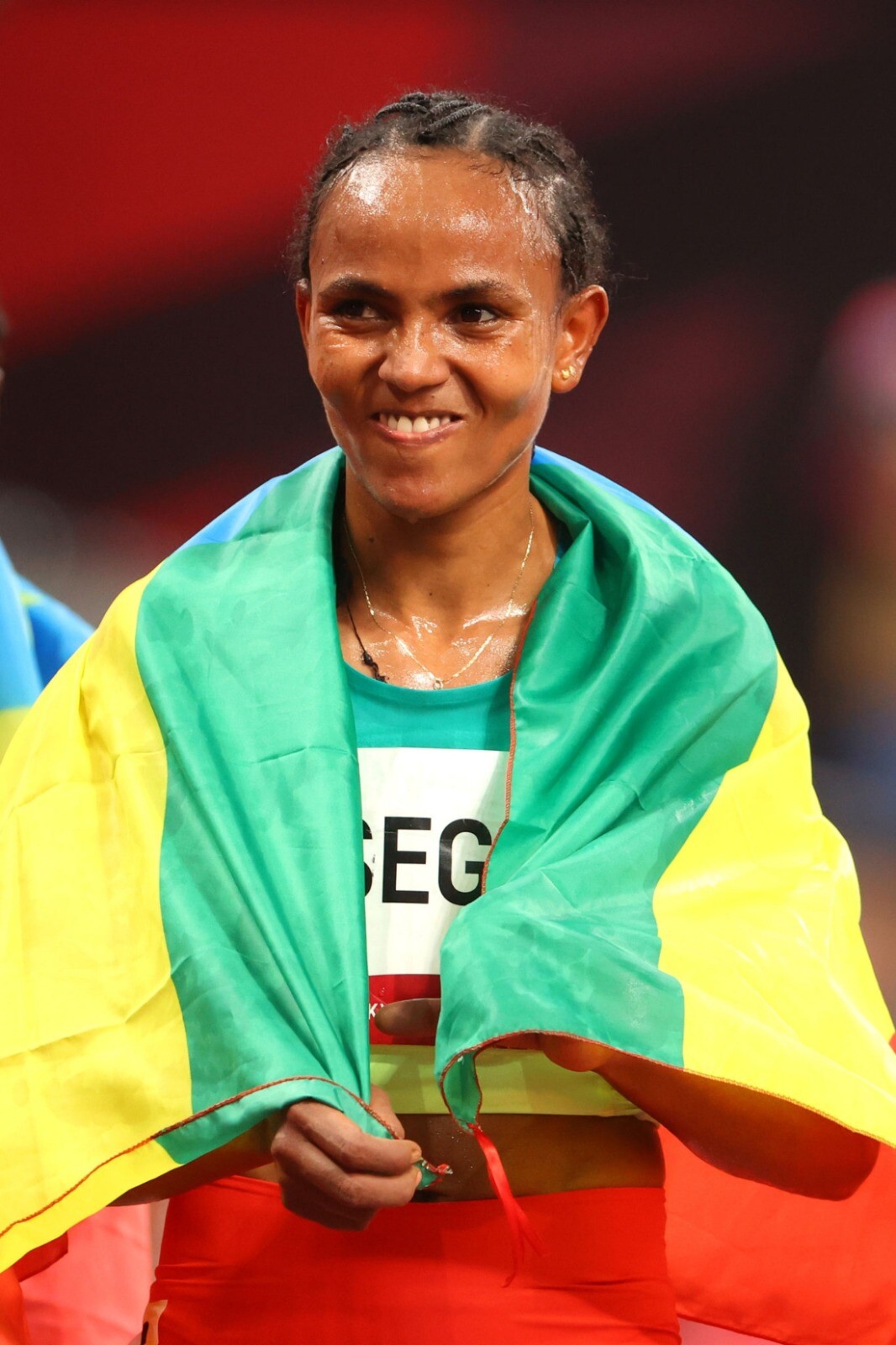
The 3,000 meters steeplechase will see Sembo Almayew and Lomi Muleta in action, and the marathon team includes Tigst Assefa, Amane Beriso, and Megertu Alemu, with Gotytom Gebreslase as reserve.
On the men's side, the team is equally impressive as Abdisa Fayisa, Samuel Tefera, and Ermias Girma will compete in the 1,500 meters.
The 5,000 meters team includes Hagos Gebrhiwet, Yomif Kejelcha, and Addisu Yihune, with Selemon Barega as reserve.
Kejelcha will also contest the 10,000 meters alongside Berihu Aregawi and Biniam Mehari, with Barega again as a reserve.
Lamecha Girma, alongside Samuel Firewu and Getnet Wale, will vie for victory in the men's 3,000 meters steeplechase, with Abrham Sime as reserve.
Ethiopia team to Paris
Women
800 meters: Tsige Duguma, Habitam Alemu, Werknesh Mesele, Nigist Getachew (Reserve)
1500 meters: Gudaf Tsegay, Birke Haylom, Diribe Wolteji, Hirut Meshesha (Reserve)
5000 meters: Gudaf Tsegay, Medina Eisa, Ejgayehu Taye, Freweyni Hailu (Reserve)
10,000 meters: Gudaf Tsegay, Fotyen Tesfay, Tsigie Gebreselama, Aynadis Mebratu (Reserve)
3000 meters Steeplechase: Sembo Almayew, Lomi Muleta
Marathon:Tigst Assefa, Amane Beriso, Megertu Alemu, Gotytom Gebreslase (Reserve)
Men
1500 meters: Abdisa Fayisa, Samuel Tefera, Ermias Girma, Teddese Lemi (Reserve)
5000 meters: Hagos Gebrhiwet, Yomif Kejelcha, Addisu Yihune, Selemon Barega (Reserve)
10,000 meters: Yomif Kejelcha, Berihu Aregawi, Selemon Barega, Biniam Mehari (Reserve)
Men's 3000 meters steeplechase: Lamecha Girma, Samuel Firewu, Getnet Wale, Abrham Sime (Reserve)
Marathon: Sisay Lemma, Deresa Geleta, Kenenisa Bekele, Tamirat Tola (Reserve)
20 km Race walk: Misgana Wakuma
by Festus Chuma
Login to leave a comment
Paris 2024 Olympic Games
For this historic event, the City of Light is thinking big! Visitors will be able to watch events at top sporting venues in Paris and the Paris region, as well as at emblematic monuments in the capital visited by several millions of tourists each year. The promise of exceptional moments to experience in an exceptional setting! A great way to...
more...Mile clash the big attraction in Eugene
Going strictly by time, the Bowerman Mile at the Prefontaine Classic on Saturday (25) is one of the fastest races in the meeting’s 49-year history.
Add in the storylines, and it’s one of the most anticipated, too.
Featuring seven men with lifetime bests faster than 3:50, Olympic and world championship gold medallists, world record-holders and rivals whose banter has preceded the matchup for months, the mile caps a Wanda Diamond League meeting at Hayward Field whose potential for world-leading marks extends far beyond its final event.
Consider, for one, the women’s 800m, and the early window it will open into this summer’s Olympics. The field includes six of the eight competitors from last year’s World Championships final in Budapest, including gold medallist Mary Moraa and silver medallist Keely Hodgkinson. Notably absent will be bronze medallist Athing Mu, the Olympic champion, who was initially scheduled to race but has been withdrawn out of precaution because of a sore hamstring.
Raevyn Rogers, the 2019 world silver medallist whose image adorns a tower standing high above Hayward Field, also is entered, along with Jemma Reekie, Nia Akins and Halimah Nakaayi, who is coming off a victory at the USATF Los Angeles Grand Prix.
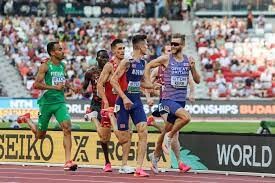
World champion Sha’Carri Richardson and Elaine Thompson-Herah headline the women’s 100m, along with world indoor 60m champion Julien Alfred and Marie-Josee Ta Lou-Smith, while world indoor 60m champion Christian Coleman and Ackeem Blake are among the fastest entered in the men's 100m.
Perhaps the most dominant athlete entering the meeting is Grant Holloway, the world 110m hurdles champion who has won all 10 races he has contested this year, including the indoor season and heats. That also includes running a world-leading 13.07 into a headwind to win in Atlanta last weekend.
The three-time world champion's last loss came on the very same Hayward Field track, at last September’s Prefontaine Classic. The only remaining gap on Holloway’s resume is an Olympic gold medal, and Saturday’s race could be an early preview of Paris, as the field includes five who raced in last summer’s World Championships final in Budapest, including silver medallist Hansle Parchment and Daniel Roberts, who earned bronze.
Shot put world record-holder and multiple world and Olympic champion Ryan Crouser will open his outdoor season in his home state and at the stadium where he owns the facility record, while trying to best Leonardo Fabbri’s world-leading mark of 22.95m.
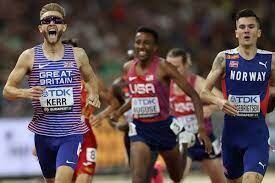
Since 2023, Crouser has lost in just one final – and it was at September’s Prefontaine Classic to Joe Kovacs, who won in Los Angeles last weekend with 22.93m, and is entered again. Payton Otterdahl, who owns the world No.3 mark this year, also is in the field.
Those events offer no shortage of global medallists. Few, however, carry the prospect for as much drama as the mile.
Over the past year, Olympic 1500m champion Jakob Ingebrigtsen and Josh Kerr, who outkicked Ingebrigtsen for last year’s world title in Budapest, have carried on a battle of words through the press about who could prevail in Paris.
Commonwealth champion Olli Hoare, who is part of the field following his 1500m win in Los Angeles last week, said the sport was better for the attention drawn by the back-and-forth between Ingebrigtsen and Kerr – but added that other racers wanted to strike the appropriate level of respect for their competitors, such as Yared Nuguse, whose PB of 3:43.97 was set battling Ingebrigtsen (4:43.73) down to the line at September’s Pre Classic.
“This is a big one. This is going to be a big one for a lot of egos,” Hoare said in Los Angeles. “But I think it’s going to be a big one for me because it’ll be the first race where I’ll have an inkling of where I am with the world’s best. There’s a bit of tossing and turning with the banter but you can’t disrespect that field. If you do, you’ll get eaten alive.”
That list of seven men under 3:50, which includes Hoare, notably doesn’t include Jake Wightman, who will be racing Ingebrigtsen for the first time since their duel at the 2022 World Championships in Oregon, when Wightman won gold; Abel Kipsang, who was fourth at the Tokyo Olympics; Geordie Beamish, less than three months after he stormed to the world indoor title; or Lamecha Girma, the steeplechase world record-holder who is making his mile debut.
“Jake Wightman’s back, he’s a world champion,” Hoare said. “Yared Nuguse, 3:43 mile – these guys are keeping quiet and they’re going to wait for their opportunity to strike. And when they do strike, I guarantee they will make a comment.”
They are not the only accomplished names entered in the distances.
Athletics Kenya will determine its men's and women's Olympic 10,000m qualifiers at Hayward Field, with Kenya's two-time world cross-country champion Beatrice Chebet, the world leader at 5000m this season, part of a women's race that will include world champion Gudaf Tsegay of Ethiopia, eight months after Tsegay set the world 5000m record on the same track.
World record-holder Beatrice Chepkoech will attempt to retain her controlling hold over the steeplechase when she races top challenger Faith Cherotich. The Kenyan duo produced the two fastest times in the world this year at the Diamond League meeting in Xiamen, which Chepkoech won in 8:55.40 to Cherotich’s 9:05.91. Olympic silver medallist Courtney Frerichs will no longer run after injuring the ACL and meniscus in her right knee.
One week after winning in Los Angeles, Diribe Welteji leads the 1500m field that includes 13 women who have run under four minutes. World indoor 3000m champion Elle St Pierre, who won the 5000m in Los Angeles, is running her first 1500m of the season, with Laura Muir, Nikki Hiltz, Jessica Hull, Hirut Meshesha and Cory McGee also entered.
Multiple world and Olympic gold medallist Sifan Hassan, as well as world No.2 Ejgayehu Taye, will feature in the 5000m.
In the field, world and Olympic pole vault champion Katie Moon opens her outdoor season against Sandi Morris, and in the triple jump four of the top five women this season are entered, led by Thea LaFond, whose 15.01m jump to win the world indoor title in Glasgow still stands as the mark to beat.
Olympic discus champion Valarie Allman has not lost in Eugene in two years, a run that includes claiming September’s Diamond League final. That could change on Saturday because of the presence of world leader Yaime Perez, who finished second to Allman in Xiamen last month.
In the men’s 200m, top US sprinters who will duel at the Olympic trials only weeks later will face off. Kenny Bednarek, fresh off a world-leading 19.67 in Doha, is scheduled to race against world No.2 Courtney Lindsey (19.71), with world silver medallist Erriyon Knighton making his season debut. Joe Fahnbulleh and Kyree King, winner of the Los Angeles Grand Prix 100m, are also entered.
Another winner in Los Angeles, Rai Benjamin, headlines the men’s 400m hurdles, and he enters with considerable confidence after running 46.64, the ninth-fastest performance of all time.
“I think I’m the fastest guy in the field, honestly,” Benjamin said of potential Olympic chances.
The women’s 100m hurdles and women’s hammer will not count towards Diamond League points totals, but will be more potential previews for global championships.
Women who account for five of the year’s six fastest times, all of whom are separated by fractions of a second, will face off in the hurdles. Tonea Marshall, fresh off her victory in Los Angeles in 12.42, leads 2019 world champion Nia Ali, Olympic champion Jasmine Camacho-Quinn, two-time world champion Danielle Williams and world indoor champion Devynne Charlton.
Brooke Andersen’s 79.92m throw from earlier this month remains the world-leading hammer mark this season but she will be challenged by world champion Camryn Rogers, 2019 world champion DeAnna Price and world silver medallist Janee’ Kassanavoid, who own the next three farthest throws this season.
by Andrew Greif for World Athletics
Login to leave a comment
Prefontaine Classic
The Pre Classic, part of the Diamond League series of international meets featuring Olympic-level athletes, is scheduled to be held at the new Hayward Field in Eugene. The Prefontaine Classicis the longest-running outdoor invitational track & field meet in America and is part of the elite Wanda Diamond League of meets held worldwide annually. The Pre Classic’s results score has...
more...Sharon Kemboi looking to prove herself at TCS Toronto Waterfront Marathon
Sharon Kemboi might not be well known on the world athletics stage at the moment but there’s a solid chance the Kenyan will have a major impact on the TCS Toronto Waterfront Marathon on October 15.
For a start, the 30-year-old Asics athlete from the town of Iten raced only in Kenya until 2022. And she has only one marathon race to her credit winning the 2022 Kobe Marathon in Japan last November in a time of 2:29:13. That saw her end the year as the 241st fastest woman of the year, hardly a world beater. Yet, to dismiss her as a contender in this World Athletics Elite Label race would be foolish.
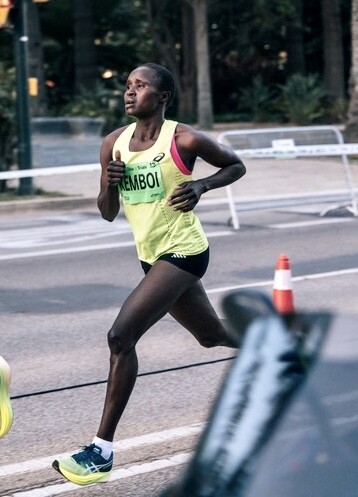
Last year Kemboi ran two world-class half marathons in Spain finishing second both times. Her personal best of 1:07:28 in Madrid followed by a strong 1:08:08 clocking two weeks later in Malaga indicates a time on Toronto Waterfront’s fast course nearer 2:22 is possible. The course record remains 2:22:16 by Magdalyne Masai – also from Kenya – set in 2019.
“The Kobe marathon course was a hard course, it is not easy. The course is so hard,” Kemboi says during a video call from her home in Iten. “I will try to run 2:25 or faster in Toronto. I want to run my personal best.
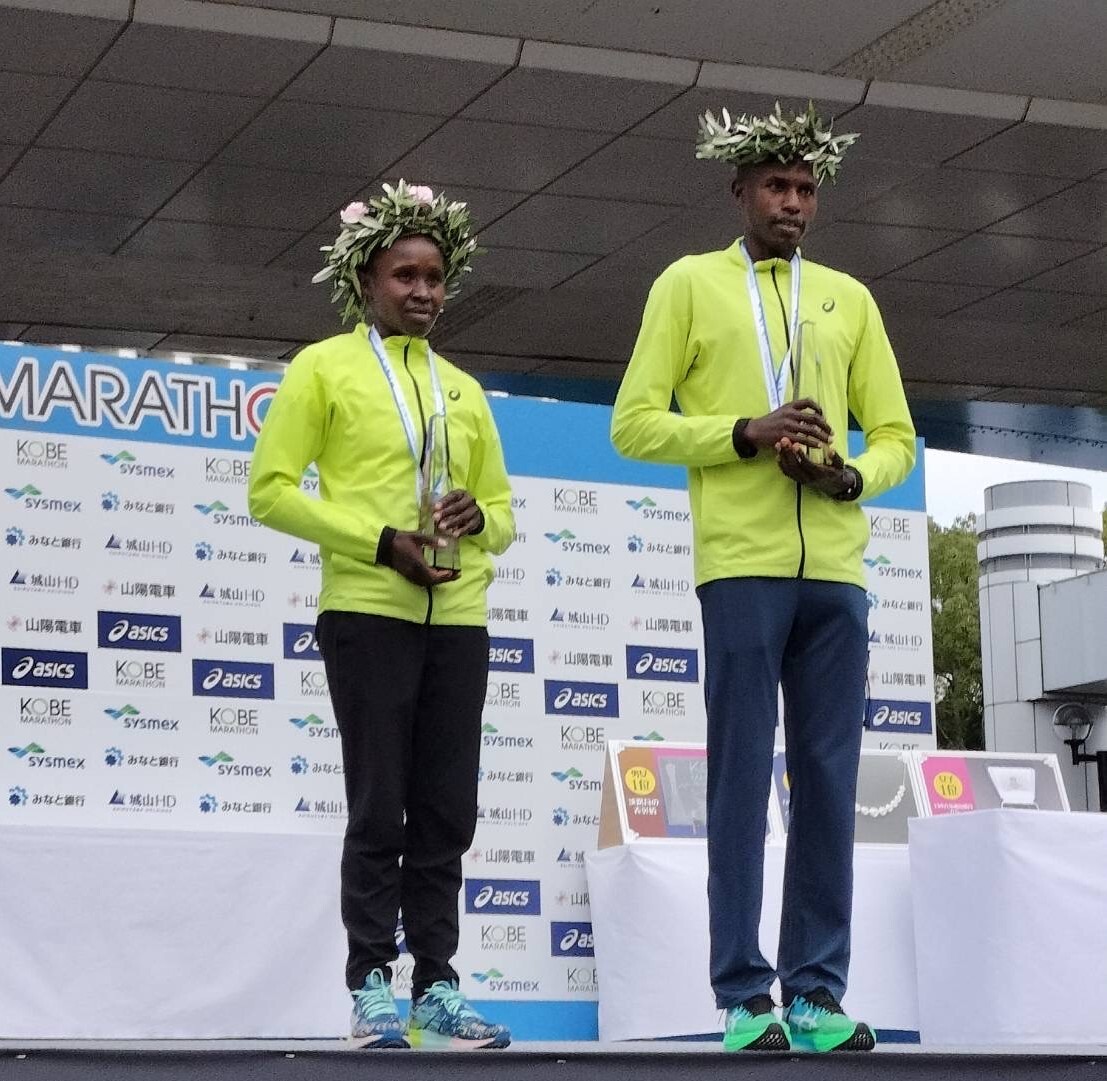
“I am training with Antonina Kwambai. She won last year in Toronto (2:23:20). She told me about Toronto and also I used to watch the Toronto races on YouTube. She told me the course is not so hard and she said she really enjoyed it.”
A few hours prior to her overseas video call Kemboi and Kwambai along with their training partners, Immaculate Chemuta, who is a Ugandan training in Kenya, and Gladys Chepkurui, had run a 30 kilometres time trail paced by three male pacemakers and under the watchful eye of coach Thomas Portzinger. The Austrian native has worked with Kemboi for close to three years now and with Kwamboi for nearer seven. Pacemakers are often employed for special sessions. Training for Toronto Waterfront is progressing well.
Clearly, she is taking her running seriously now after showing promise as a high school runner at Chepkongony Church of Christ Secondary School near Eldoret.
“When I ran in high school I ran at the national level in the 5,000m and 10,000m. And then I got married and had two kids. Then I started training again,” she offers.
“I wanted to be like (2016 Olympic 5000m champion) Vivian Cheruiyot when I was in high school. I did not meet her but I used to watch the races she ran. I watched her Olympic races on YouTube.”
It was during her time at high school that she met her husband Lawrence Kemboi Kipsang who attended a boy’s school in Marakwet which is very close to her home village of Kendur.
A world-class 3,000m steeplechaser, he has a best time of 8:11.26 in the event. In 2022 he was a much sought after pacemaker on the European circuit and helped Ethiopia’s Lamecha Girma beat the world 3,000m steeplechase record at the Paris Diamond League meet. The husband and wife will occasionally run together.
“We have a house helper who watches our children when we go training,” she reveals. “They are 7 and 4 and their names are Adele Jelegat and Adriana Jerop.”
Unlike many other Kenyan distance runners, she does not stay in a training camp but instead meets up for training sessions in Iten with her mates. The town of Iten is well known as a haven for distance runners from many nations. With a balance in training and family life Kemboi is very content with her fortunes.
Once again TCS Toronto Waterfront Marathon is a World Athletics Elite Label race meaning the competition she will face is sure to be of the highest standard. Kemboi welcomes the challenge. This, after all, will be her opportunity to continue her successful transition from the half marathon to the marathon and shine on the world stage.
by Paul Gains
Login to leave a comment
TCS Toronto Waterfront Marathon
The Scotiabank Toronto Waterfront Marathon, Half-Marathon & 5k Run / Walk is organized by Canada Running Series Inc., organizers of the Canada Running Series, "A selection of Canada's best runs!" Canada Running Series annually organizes eight events in Montreal, Toronto and Vancouver that vary in distance from the 5k to the marathon. The Scotiabank Toronto Waterfront Marathon and Half-Marathon are...
more...Why Are Runners Suddenly So Fast?
Records are falling and times are dropping. Is it the shoes, or something else?
Consider the Paris Diamond League meet in early June. Jakob Ingebrigtsen smashed the two-mile world best by more than four seconds, becoming just the second man to run back-to-back sub-four-minute miles. Then Faith Kipyegon notched her second world record in a row, outsprinting the reigning record-holder over 5,000 meters just a week after becoming the first woman under 3:50 in the 1,500 meters. Then, to cap the night, Lamecha Girma took down the steeplechase record.

It was a great night—but it was just one of many great nights that track fans have been treated to recently. A week later, at the historic Bislett Games in Oslo, eight men broke 3:30 for 1,500 meters in one race, setting a new record—including Yared Nuguse, who set a new U.S. best. Meet records fell in almost every event. At the collegiate level, an analysis by Oregon-based coach Peter Thompson shows that the number of middle- and long-distance runners hitting elite benchmark times has doubled, tripled, or in some events even quadrupled in the last two years. Earlier in June, four high-school boys broke four minutes for the mile in a single race, matching the total number of people who’d done it in history prior to 2011.
I could go on.
There are two main questions that arise from this buffet of speed. First, is it real? Are runners getting faster across the board, or are we just being fooled by the brilliance of a few individuals and random fluctuations in the depth of different events? Second, if it’s really happening, then why? The easy answer is, “It’s gotta be the shoes” (or, in this case, the super spikes), but does the data really back that up?
I don’t have any definitive answers at this point, but here are my thoughts on some of the possible explanations.
It’s easy to make an anecdotal case that runners are faster than ever. Backing that up with data isn’t quite as straightforward. If you look only at whether the top-ranked time in the world is getting faster or slower from year to year, any trends will depend on whether you happen to have a generational athlete in the event at a given point in time. The effect of an Usain Bolt is bigger than the effect of, say, a new shoe design. Even if you go deeper, the top ten times in any year often come from just one or two races that took place in exceptionally good conditions. So you’re better off looking farther down the list.
For example, here’s some data for the men’s 1,500 meters between 2009 and 2022, drawn from the World Athletics database. I’ve shown the first, tenth, 100th, and 1,000th ranked performers (not performances) for each year. The horizontal dashed lines show the average for 2009 to 2018. The first super spike prototypes had shown up on the circuit by 2019 at latest, and were widely available by 2021. The big spike of slower times in 2020 is because there were so few races due to the pandemic.
The number-one times don’t show any particular trend. The tenth-best times show a dip since 2021, but no bigger than the dip in 2014-2015 (which corresponded to two particularly fast races in Monaco). For the 100th and 1,000th best times, the pre-pandemic data finally starts to look more consistent, which makes the dip since 2021 more telling. The 1,000th-best performer is now 0.9 percent faster than the pre-pandemic average, and the 100th-best is 0.5 percent faster. This is smaller than the 1.3-percent estimate derived from lab testing of super spikes, but in the ballpark.
Here’s comparable data for the women’s 5,000 meters:
Again, the first- and tenth-ranked times fluctuate too much to draw any conclusions. The 100th and 1,000th places do show an apparent drop in the last few years, by 1.9 and 2.0 percent respectively—more than the lab estimate. There are lots of possible explanations for this discrepancy, including that the benefits of super spikes are reduced at faster speeds.
I’ll add one more graph just for context. Supershoes came to road running way back in 2016 (for prototypes) and became widely available by 2018. I think most observers agree that these shoes really have affected road-running times. So what does the comparable data show for, say, men’s marathon times? Here it is:
The data is confounded by the effects of the pandemic, particularly in 2020. Still, the post-supershoe improvement looks fairly similar to the track data. Compared to the 2009 to 2016 average, last year’s times were 0.7 percent faster at tenth, 1.6 percent faster at 100th, and 1.3 percent faster at 1,000th.
The conclusion I take from all this data? It does like there’s something going on, both on the track and on the roads. But it’s way less obvious in the data than I expected. My subjective feeling was that the last few years have seen records broken and times redefined at a totally unprecedented rate. I thought I’d see robust improvement of at least three or four percent. But that scale of change is not there, at least in the events I sampled.
So with that in mind, what explains the changes we do see?
My starting assumption is that any performance improvements we’ve seen in the last few years are because of the shoes. I’m not going to belabor that point here, because I’ve already written plenty on both road supershoes and super spikes.
But I do want to make one key point. The reason my prime suspect is the shoes is that we have direct laboratory evidence that both types of shoes improve running economy, by around 2 percent on the track and at least 4 percent on the roads (and, to complete the circle, lab evidence that improved running economy directly translates to faster race times). It would take some weird and hitherto undiscovered science in order for the shoes not to make us faster. In contrast, the other hypotheses that I’m going to discuss below may be compelling to various degrees, but all rely on some assumptions and guesses and hand-waving.
Here’s a sentence you wouldn’t have read prior to 2018, from Letsrun’s description of Kipyegon’s thrilling 1,500 world record in Florence: “Kipyegon sprinted away from the pacing lights with 200m to go, lengthening her gap from the green lights as she rounded the turn and entered the home straightaway.” I wrote about World Athletics’s introduction of Wavelight pacing lights when Joshua Cheptegei set the 5,000-meter world record in 2020, positing that more even splits could make a notable difference to times. Good pacing has been a hallmark of this year’s records too, all assisted by Wavelight.
Wavelight doesn’t factor in on the roads, but ever since Eliud Kipchoge’s sub-two marathon exhibitions, big-time marathons have devoted more attention to providing top-notch pacers for their elite runners. That has the double benefit of saving the mental effort of setting the pace, and of reducing air resistance. I think good pacing and drafting are both beneficial. But that can’t explain why the 100th and 1,000th performers seem to be getting faster, because Wavelight and paid rabbits are generally reserved for the front of the pack.
Freed from the tyranny of over-frequent racing during lockdowns, runners spent 2020 building up a massive base of endurance that has catapulted them to new levels. It’s even possible that, having learned their lesson, they’ll continue with this more patient approach to training. This theory has the disadvantage of being both unprovable and unfalsifiable. That doesn’t necessarily mean it’s untrue, but if performance levels don’t start regressing to their pre-pandemic means over the next few years, I’ll remain skeptical.
It’s the “big, sexy thing” in endurance training these days, as miler Hobbs Kessler put it in a recent interview: lactate-guided double-threshold training, as popularized by Norwegian Olympic champions Jakob Ingebrigtsen and Kristian Blummenfelt. As I explained in this article, the approach emphasizes high volumes of threshold training with very tight control on the intensity to avoid going too hard. Whether it’s objectively better than other training approaches remains to be seen—but it hasn’t yet been adopted widely enough to make a noticeable impact on the top-1,000 list.
In the past, when I’ve looked at broad trends in performance over time, one of the first factors I’ve considered is changes in drug availability or drug testing. It’s extremely noticeable (though of course not proof of anything) that long-distance track times took off like a rocket shortly after the introduction of EPO in the early 1990s. If you look carefully, you can find what seems to be the performance signature of various drug-related events like the introduction of EPO testing and, more recently, the implementation of athlete biological passports.
Is there something new on the scene over the last few years? Or are we still seeing the effects of pandemic-related disruptions in out-of-competition drug testing? I certainly hope it’s not the case, but you’d have to be amnesiac to discount the possibility entirely. Once again, the best counterargument is that the performance improvements are noticeable even at the 1,000th-best level—though perhaps I’m being naive.
As you can probably tell, I don’t think any of the alternative explanations I’ve offered so far hold water compared to my default assumption that it’s the shoes. But this last category is a little different. If you spend enough time arguing with people about why runners are getting faster, you’ll encounter a number of broad, hand-waving theories that are hard to substantiate but nonetheless sound reasonable.
For example, I can attest to the fact that the Internet has made training knowledge far more widely accessible than it was when I was a young athlete in the 1990s. Ideas and approaches (like the Norwegian model) are endlessly debated and dissected, and any student of the sport is exposed to multiple perspectives. (In contrast, when I arrived at university and found that the workouts were different from those I’d done in high school, I thought the world was ending.) This theory has been offered frequently over the last decade or more as an explanation for steadily improving U.S. high school times. Maybe it’s true more broadly: people everywhere simply know more about the principles of training, and are doing it better (or at least fewer people are doing really stupid training) compared to the past. Even if elite coaching was always pretty good, this creates a wider pyramid of prospective talent feeding into the elite coaches.
I also have the sense that the pendulum has swung away from sit-and-kick racing towards aggressive front-running. After the 2019 world championships, where super spikes first made headlines, I wrote an article about the unusually fast early paces of the races. Jakob Ingebrigtsen, the current king of the 1,500, is notable for running from the front and pushing the pace rather than relying on a finishing sprint—which likely helps explain why he led those seven other men under 3:30 in Oslo. If runners these days are more focused on running fast times rather than trying to win sprint finishes, it stands to reason that times would get faster overall.
And there are plenty of other theories out there—broader support for professional training groups, better nutrition and recovery, the inevitable march of progress, and some that I’ve undoubtedly missed completely. As I said at the top, I don’t know the answers, and I don’t think anyone else does either. Times do seem to be improving, but not as much as I would have guessed based on all the hype about recent record-breaking. The shoes almost certainly play some role—but if there’s some other secret sauce in there, it’ll be fun trying to figure out what it is.
by Outside Online
Login to leave a comment
Ingebrigtsen and Girma go head-to-head in hunt for fast 1500m in Lausanne
Jakob Ingebrigtsen and Lamecha Girma both made history earlier this month in Paris, where they set a world two-mile best and a world 3000m steeplechase record, respectively. Now they have the chance to push each other to fast 1500m performances when they return to Wanda Diamond League action in Lausanne on Friday (30).
Norway’s Ingebrigtsen, who broke the world indoor 1500m record by running 3:30.60 in Lievin in February, clocked 7:54.10 in Paris to improve Daniel Komen’s world best for two miles. Despite still having that race in his legs, the 22-year-old improved his own European 1500m record to 3:27.95 in Oslo six days later – a time that places him sixth on the world all-time list.
Although the world record had not been his aim in Oslo, Lausanne’s Athletissima gives Ingebrigtsen another opportunity to take further strides toward Hicham El Guerrouj’s almost 25-year-old world record of 3:26.00.
“I 100% have more left in me,” Ingebrigtsen said after his performance in Oslo. “I just have to keep focused on each race ahead in the build-up to Budapest (World Championships), where it really matters.”
Girma will hope to be up there with him. The Ethiopian 22-year-old stormed to a time of 7:52.11 for his specialism in Paris, taking 1.52 seconds off the world 3000m steeplechase record set by Said Saeed Shaheen in 2004, and then turned his attention to attacking the Ethiopian 1500m record of 3:29.91 at the Continental Tour Gold meeting in Ostrava on Tuesday (27). He still looked like he had plenty left in the closing stages but having to run wide down the home straight, he focused on the win, running a PB of 3:33.15 that he will aim to improve again in Lausanne.
It will be the first time that Ingebrigtsen and Girma have clashed in any discipline.
In Oslo, Ingebrigtsen led the first eight men under 3:30 for the first time in history, and this time the line-up includes two other men who have dipped under that barrier so far in their careers: Britain’s Olympic bronze medallist Josh Kerr and Australia’s Stewart McSweyn. They are joined on the entry list by Ethiopia’s Teddese Lemi, New Zealand’s Sam Tanner and Britain’s Neil Gourley.
In the 5000m – the discipline in which Ingebrigtsen won world gold last year after his 1500m silver – Olympic champion Joshua Cheptegei will take on Olympic 10,000m gold medallist Selemon Barega, world 5km record-holder Berihu Aregawi, Telahun Haile Bekele, Birhanu Balew and their fellow sub-13:00 runner Muktar Edris.
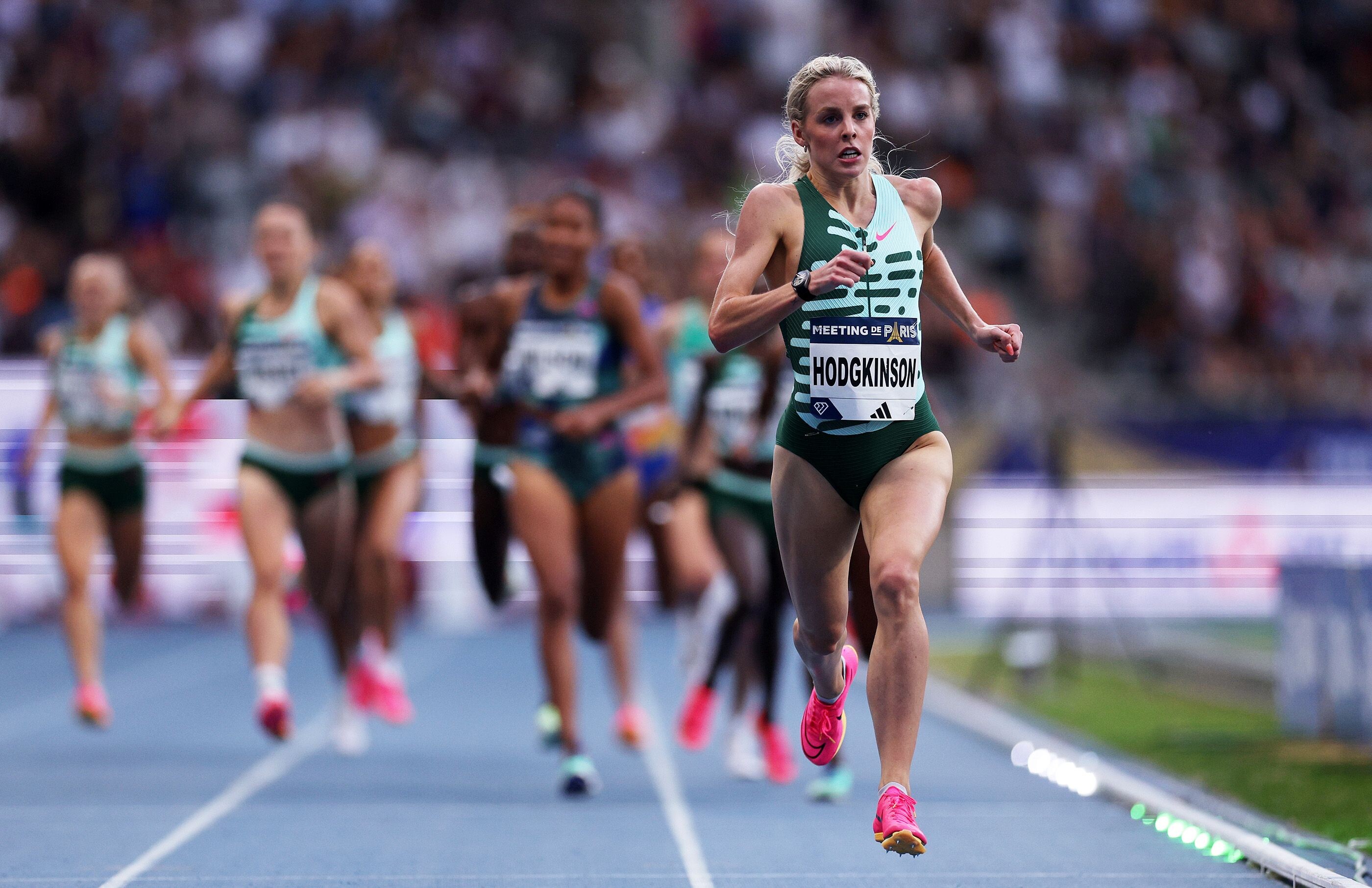
In the women’s 3000m steeplechase, world U20 silver medallist Sembo Almayew is back on the track after her world-leading PB performance of 9:00.71 to win in Florence. The 2021 world U20 gold medallist, Jackline Chepkoech, was second on that occasion and is also racing, along with world record-holder Beatrice Chepkoech and world bronze medallist Mekides Abebe.
The world leader also heads the entries in the women’s 800m, where world and Olympic silver medallist Keely Hodgkinson – who improved her British record to 1:55.77 to win in Paris – will look to make another statement as she renews her rivalry with Kenya’s Mary Moraa.
World bronze medallist Moraa, who won Commonwealth Games and Diamond League titles ahead of Hodgkinson last year, has run a best of 1:58.72 so far this season and the strong field also features Habitam Alemu, Noelie Yarigo, Jemma Reekie, Catriona Bisset, Natoya Goule and Switzerland's Audrey Werro, who recently ran a world U20 1000m record of 2:34.89 in Nice.
by World Athletics
Login to leave a comment
Is Wavelight technology good for the sport?
Last week at the Paris Diamond League, we witnessed one of the most extraordinary single-day spectacles in the history of the sport. Over the course of two hours, two world records and a world best were shattered; the races were nothing short of spectacular, particularly when Faith Kipyegon skilfully closed the gap on the Wavelight during the final two laps, leaving Ethiopia’s Letesenbet Gidey in the dust and achieving the seemingly impossible: a new women’s 5,000m world record.
The question of whether Wavelights are beneficial for the sport remains subjective, with opinions among track fans varying. On one hand, they enhance the performance and make races more engaging for spectators at the track or watching from home. On the other hand, they provide a precise pacing strategy for elite athletes, potentially facilitating faster times and diminishing the traditional element of intense competition.What is Wavelight technology?
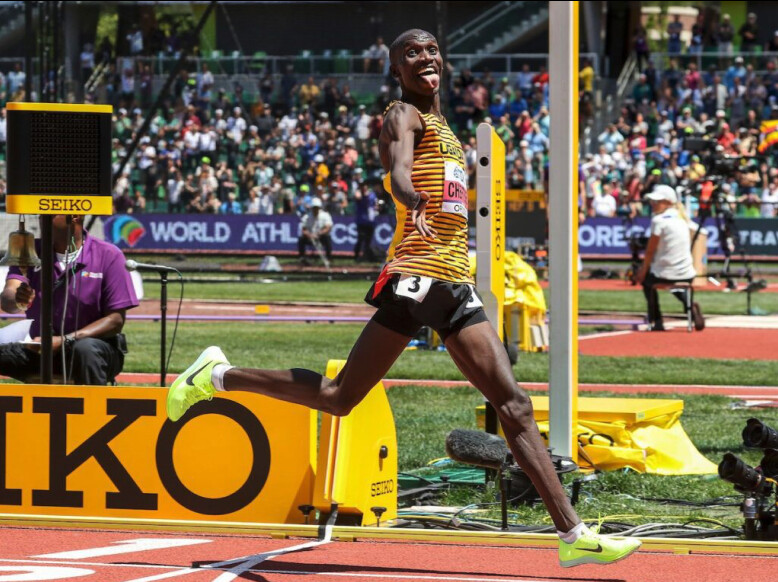
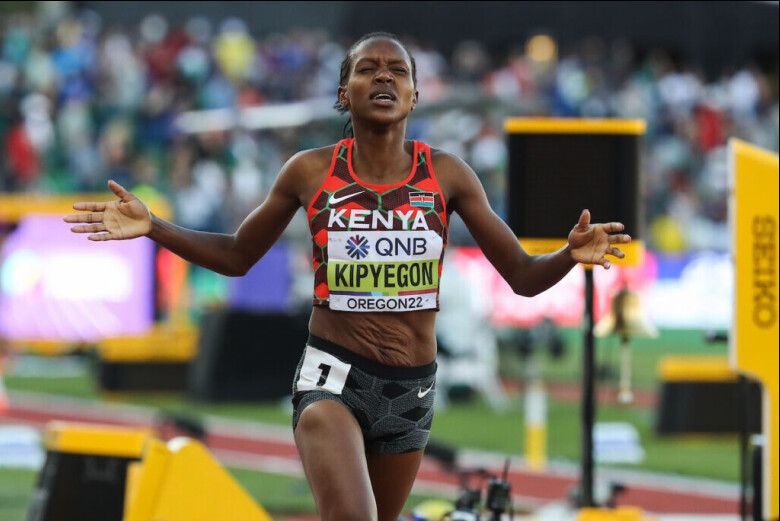
Wavelight technology, named for the Mexican Wave, was introduced by World Athletics in 2019. It serves as a tool for athletes and spectators, offering assistance with pacing and providing a visual representation of the race’s progression. A wave of lights appears along the inside edge of the track, moving at the desired pace for the race. Typically used in distance events like the 800m, 1,500m, or 5,000m, these lights are programmed to signify specific benchmarks, such as world championship standards, meeting records or world record times.Pros
People are drawn to track and field events to witness athletes breaking records, and Wavelight can serve as a valuable tool for athletes to gauge their paces and attempt to break records. A notable example: at the Paris Diamond League on June 9, where Jakob Ingebrigtsen of Norway and Lamecha Girma of Ethiopia ran ahead of the lights to set new records in their respective races. In Girma’s case, the lights pushed and challenged him throughout the 3,000m steeplechase, with Girma narrowly staying ahead in the final 100m to break the previous world record by one second.
Girma’s reliance on the lights became evident as his pace dropped off after 1,000m, and he had to dig deep to maintain the pace set by the flashing lights. Without them, it is unlikely he would have achieved the record.Track and field has faced challenges since the departure of Usain Bolt in 2017, with the sport seeking its next superstar. The success of major events like the World Championships and the Olympic Games significantly increases the sport’s popularity.
World Athletics recognizes the importance of world or national records in the Diamond League circuit, which contribute to increased viewership. The implementation of Wavelight technology allows athletes to run faster and challenge these record times, catering to the audience’s desire for exciting and fast-paced performances.While not every race will produce record-breaking times, Wavelight enhances the potential for thrilling performances that captivate viewers and generate greater interest in the sport.
Cons
When Ingebrigtsen shattered Daniel Komen’s two-mile record, which had stood for 26 years, my immediate thought was how fast Komen could have run with today’s technology. Komen had pacers guide him through the first 2,000m before running the final kilometre alone against the clock. Similarly, Ingebrigtsen had pacers until around the 2,000m mark, but they gradually dropped off, leaving him with a lead of 10-15 metres over the lights.
Depending on the race style or purpose, I believe Wavelight can have a positive impact on the sport. But they also detract from what track and field is fundamentally about—the world’s best athletes competing against one another. Watching a Diamond League event where one athlete outpaces the rest of the field by 15 to 20 seconds in the 3,000m steeplechase does not benefit the sport. While celebrating superstars is important, track and field legends like Komen, Kenenisa Bekele, Genzebe Dibaba and David Rudisha never had events specifically set up for them to chase world records.
They achieved their records in the heat of competition, racing against other competitors. This is where I believe Wavelight technology crosses a line.A compelling comparison was published in Track & Field News in 2020, analyzing the current and former 10,000m world records—Joshua Cheptegei’s record with pace lights versus Bekele’s record without them. The analysis revealed that Cheptegei maintained much more even splits than Bekele, with a variance of less than a second (0.8s) between his kilometres, which is truly remarkable. In contrast, Bekele’s variance was five times greater, with a difference of nearly five seconds between his fastest and slowest kilometres.I am not suggesting that Wavelights are ruining the sport of track and field, but I believe their use should be limited to specific situations, such as aiming for world standards or being present only during the final lap or two of distances ranging from 1,500m to 10,000m.
By implementing such limits, World Athletics can strike a balance between using technology for pacing assistance and preserving the essence of competitive racing.
by Running Magazine
Login to leave a comment
Men’s 3000m Steeplechase: Mr Second Place, Gets His Second World Record of 2023
For most of his career, Lamecha Girma was known for finishing second.
At the 2019 World Championships in Doha, Girma got the silver medal in the steeplechase losing to Conseslus Kipruto of Kenya. At the 2021 Olympics in Tokyo, he got the silver medal losing to Soufiane El Bakkali. At the 2022 World Indoor Championships in Belgrade, he got the silver medal in the 3,000m flat losing to his fellow countryman Selemon Barega.

Finally, in Eugene last year for the World Championship, he got the silver medal once more, losing to the man who is now his fiercest rival, El Bakkali.
Girma’s fate has changed in 2023 and second took on a whole different meaning Friday night in Paris as Girma ran a sensational 7:52.11 in the 3000m steeplechase to break Saif Saaeed Shaheen’s nearly 19 year-old world record of 7:53.63. It was Girma’s second world record of 2023, to go with his 7:23.81 indoor 3000m record.
The RaceGirma was hot on the pace right from the gun, pressing the two pacers in front of him as soon as the three of them were in a single-file line together. The wavelight technology was set to the WR of 7:53.63, so Girma knew exactly where he was in relation to making history. The pacemaker’s assignment was not clear watching the race, as Girma went by the second pacemaker with more than four laps remaining in the race. Passing the pacemaker who was on schedule for the world record displayed the fact that Girma meant business. The wavelights were well behind him as he hit 4:41 with three laps remaining.
His second kilometer was a blistering 2:35, hitting 2,000m at 5:12.5, a full six seconds faster than Shaheen during his world record performance. As the laps went on, Girma definitely was tiring, as the water jumps looked to take more and more out of him. As he hit the bell, the distance from him to the front of the wavelight (the previous WR) was shrinking.
The Ethiopian was about even with the lights with 300m to go and looked exhausted, but he found another gear and lengthened his lead from the lights with 200m to go and cleanly cleared the final two barriers en route to his new WR of 7:52.11.
Quick Take: Girma’s WR was no surprise to him
On the LetsRun.com homepage, 80% of voters said that Girma would not take down the steeplechase world record. Nonetheless, there was reason to believe in Girma tonight. Girma broke Daniel Komen’s indoor 3,000m WR less than four months ago and Komen’s records are known as some of the most elusive on the books. If that was too far away for your liking, Girma also ran a 7:26.18 outdoor 3,000m in Doha in May to beat a very strong field. He even beat his rival El Bakkali by approximately seven seconds in that race.
After the race, Girma said “I felt so fast during the race, so confident. The world record is not a surprise, I planned to beat it tonight in Paris. It’s a result of full determination.”
by Let’s Run
Login to leave a comment
Kipyegon, Girma and Ingebrigtsen make history in Paris
It will go down in history as one of the greatest nights in athletics.
Between them, Faith Kipyegon, Lamecha Girma and Jakob Ingebrigtsen broke two world records* and one world best at the Meeting de Paris on Friday (9), providing the standout moments at a highly memorable Wanda Diamond League meeting in the French capital.
A week after breaking the 1500m world record in Florence, Kipyegon etched her name into the record books for 5000m, winning in 14:05.20.
Ahead of the race, the world and Olympic champion hadn’t made too much noise about a possible world record attempt in tonight’s 5000m. It was, after all, just her third ever race at the distance, and her first 5000m outing in eight years.
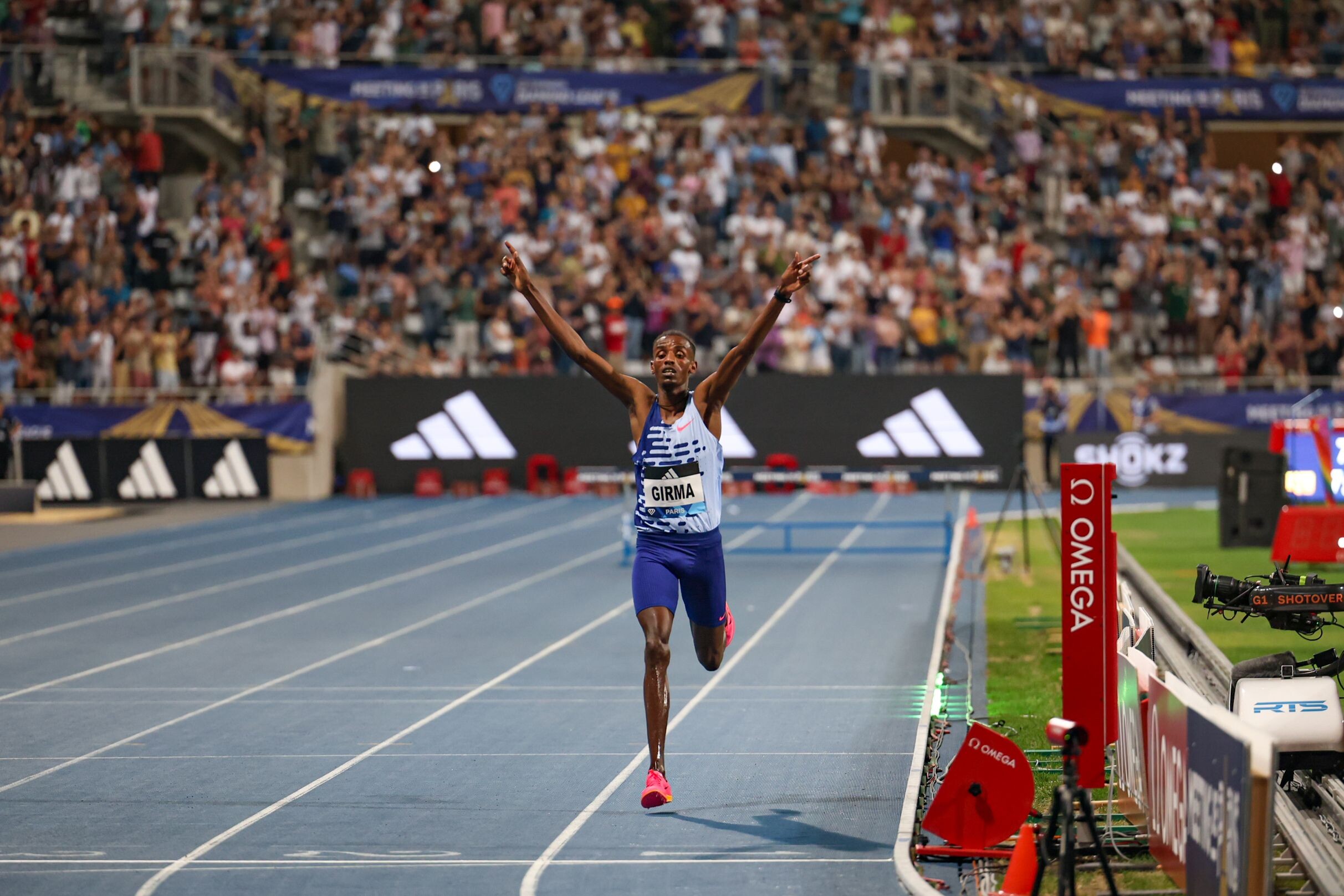
But, as is always the case with Kipyegon, the 29-year-old Kenyan showed no fear as she navigated her way through the race, the early pace – 2:52.31 at 1000m and 5:42.04 at 2000m – seemingly no bother for the two-time world U20 cross-country champion.
Steeplechase world record-holder Beatrice Chepkoech was the third and final pacemaker, leading the field through 3000m in 8:31.91. At this point, world record-holder Letesenbet Gidey led from Kipyegon with Ethiopia’s Ejgayehu Taye, the world 5km record-holder, a few strides behind.
Kipyegon took the lead with about 600 metres to go, but Gidey kept close contact. They were about six seconds outside of world record pace, but Gidey also knew what Kipyegon is capable of. The world 10,000m champion knew that Kipyegon had the finishing speed to break Gidey’s world record.
Kipyegon – now speeding up with each and every stride – hit the bell in 13:04.1, needing a final lap of about 62 seconds to break Gidey’s record. She did exactly that, covering the last 400m in 61.1 seconds to cross the line in 14:05.20 – a 1.42-second improvement on Gidey’s mark.
Gidey, competing for the first time since her unfortunate episode at the World Cross Country Championships in Bathurst, finished second in 14:07.94, the third-fastest time in history. Taye was third in 14:13.31, while the next three women – Lilian Kasait Rengerek, Freweyni Hailu and Margaret Chelimo Kipkemboi – all finished inside 14:24.
“I didn’t think about the world record, I don’t know how I made it,” said a delighted and surprised Kipyegon. “I just focused on the green light and tried to stay relaxed and enjoy the race. When I saw that it was a world record, I was so surprised – I just wanted to improve on my PB, the world record was not my plan. I just ran after Gidey – she is an amazing lady.
“I do not know what will be next – I’ll have to discuss it with my coach and my management,” she added. “If my body is healthy, anything is possible.”
Girma had requested an ambitious pace for the men’s 3000m steeplechase – one that would result in a finishing time of about 7:52. The world and Olympic silver medallist almost got a bit carried away mid-race, though, and ran well ahead of the wavelights through the middle section of the race.
With two laps to go, the lights almost caught up with the Ethiopian – who by now was well ahead of the rest of the field. But the sound of the bell and the reaction of the crowd seemingly gave him added impetus on the final lap as he moved clear of the lights once more.
He sped around the final lap in about 64 seconds, crossing the line in 7:52.11, taking 1.52 seconds off the world record set 19 years ago by Said Saeed Shaheen.
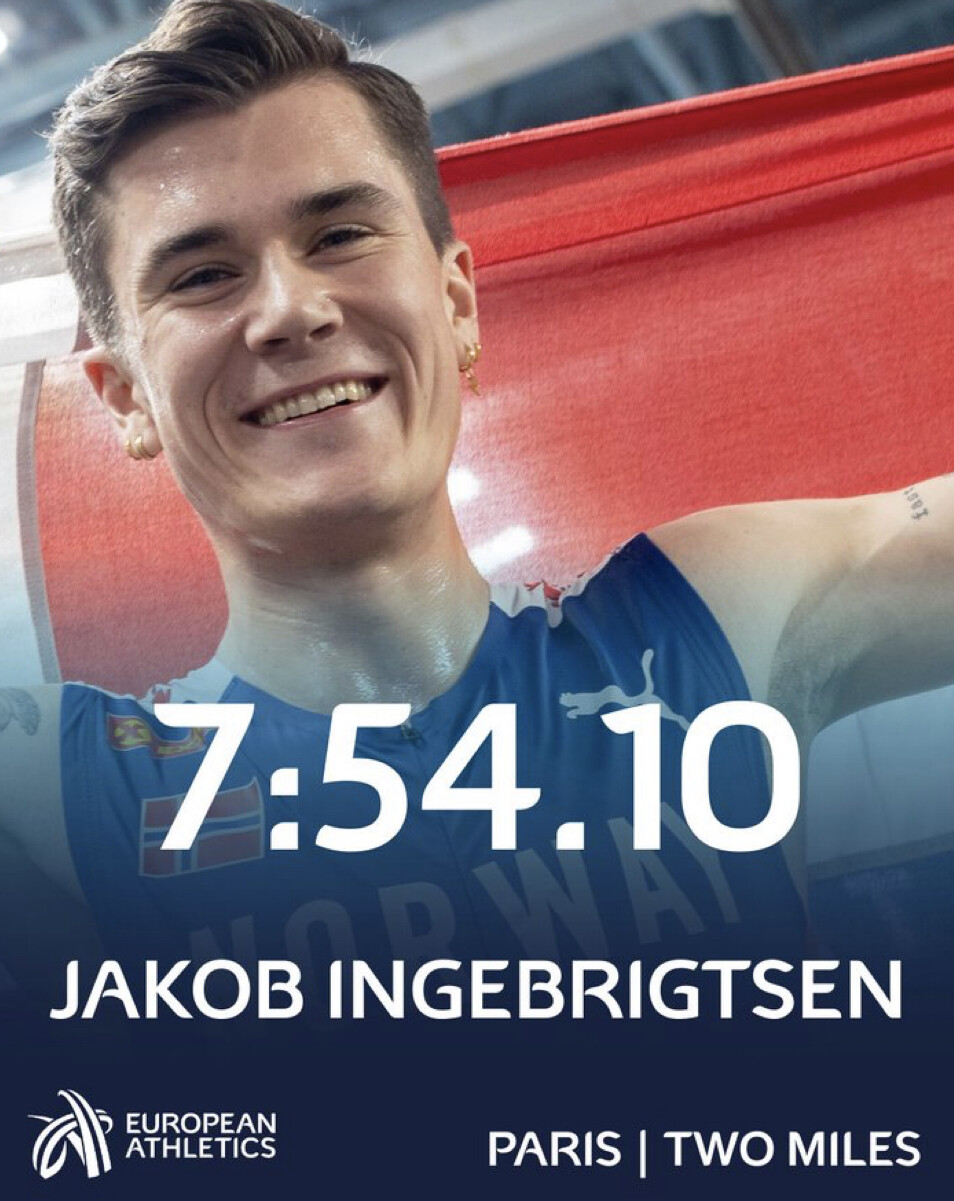
“I feel so happy,” said Girma, who started his year world a world indoor record over 3000m. “I’m happy and very proud. I felt so fast during the race, so confident. The world record is not a surprise; it was my plan to beat it tonight in Paris. It’s the result of my full determination.”
Two miles not be an official world record distance, but that mattered not to Jakob Ingebrigtsen – or indeed the sell-out crowd at the Stade Charlety – as the Norwegian won the event in a world best of 7:54.10.
The race wasn’t a scoring discipline on this occasion, and as such was held outside of the main broadcast window. But that didn’t deter the world and Olympic champion, who stuck to the pacemakers throughout, passing through 1000m in 2:29.07 and then moving closer to the second pacemaker – and, significantly, ahead of the green wavelights.
Once the pacemakers had done their job, Ingebrigtsen maintained his tempo and breezed through 3000m in an official split of 7:24.00 – a European record and the third-fastest performance of all time for that distance. At this point he had a 13.5-second lead over Ethiopia’s Kuma Girma. Victory was Ingebrigtsen’s; his next target was Daniel Komen’s world best.
He charged through the final 218 metres, roared on by the crowd, and crossed the finish line in 7:54.10, winning by 15 seconds.
“Being able to break this mark feels amazing,” he said. “It is my first world best outdoors. The pace felt very smooth for me, coming out of the 1500m. The public was amazing; without their help, it would have been more difficult. I was a bit surprised by the time in the end.”
World leads for Hodgkinson, Wanyonyi and Holloway
World and Olympic silver medallist Keely Hodgkinson opened her outdoor season in stunning fashion in the women’s 800m, winning by more than two seconds in a world-leading national record of 1:55.77.
The European champion stuck to the pacemaker and covered the first lap in 57.7 seconds, already a stride or two ahead of the rest of the field. With 200 metres to go, there was clear daylight between Hodgkinson and Jamaica’s Natoya Goule, who was being pursued by world indoor champion Ajee Wilson.
But none of them could get near Hodgkinson, who eased down the home straight to cross the line in 1:55.77, taking 0.11 off the British record she set two years ago in Tokyo. Wilson finished second in 1:58.16 and Goule was third in 1:58.23.
by World Athletics
Login to leave a comment
Ethiopia’s Lamecha Girma breaks indoor 3,000m world record
Girma averaged 2:28 per kilometer over 3,000m to break Daniel Komen's world record, which has stood for 25 years.
All eyes at the World Athletics Indoor Tour meeting Hauts-de-France Pas-de-Calais in Lievin, France, were on Norway’s Jakob Ingebrigtsen in the men’s 1,500m, but Lamecha Girma of Ethiopia stole the show in the men’s 3,000m, setting a new world record of 7:23.81.
Girma smashed the 25-year-old indoor 3,000m record of Kenya’s Daniel Komen (7:24.90), which has stood since 1998. Girma’s time was so fast that even his pacemakers couldn’t keep up, dropping out of the race one mile in. World 1,500m bronze medalist Mohamed Katir of Spain held to Girma’s heels until the final lap, falling off for second in a European record of 7:24.68 (now the second fastest time in history).
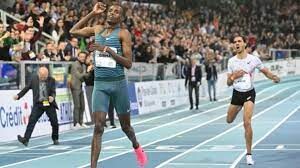
To put Girma’s time in perspective, his pace over the 3,000m was two minutes and 28 seconds per kilometer and 3:58 per mile. Girma went through 1,500m in 3:42 and through 2,000m in a mind-boggling four minutes and 55 seconds.
The U.S. 5,000m and 10,000m record holder Grant Fisher finished fifth with a new indoor 3,000m personal best of 7:35.82.
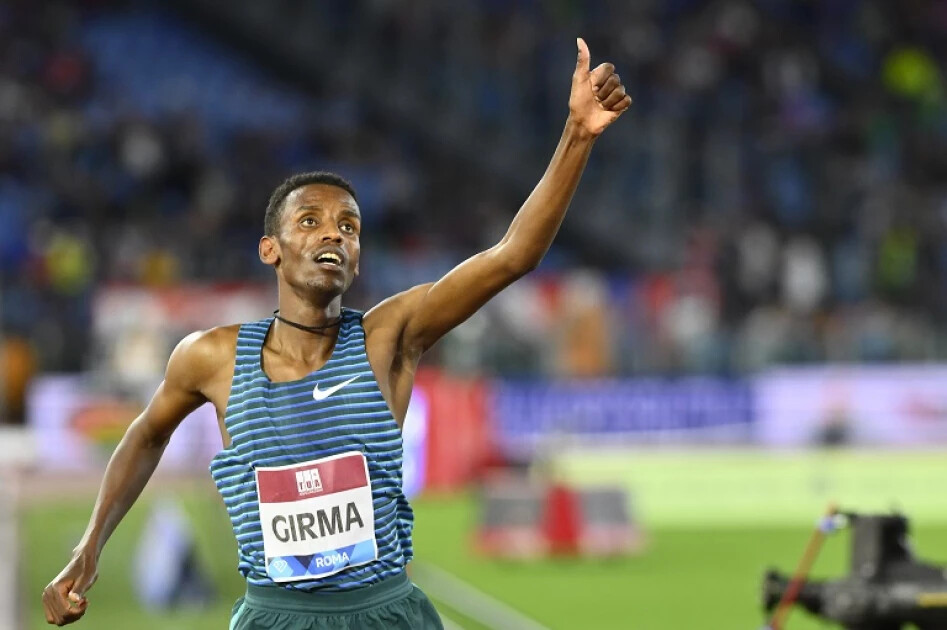
At the 2020 Olympics, Gimra won the silver medal in the 3,000m steeplechase with an 8:10.38 clocking, only behind Morocco’s Soufiane El Bakkali in 8:08.90. He followed his Olympic performance with a 2022 World Indoor Championship silver medal in the 3,000m in Belgrade, Serbia, and another silver medal at the World Athletics Championships in his signature event, the 3,000m steeplechase.
Ingebrigtsen ended up setting a world lead and meeting record of 3:32.38 in the men’s 1,500m but ultimately missed his indoor world record of 3:30.60 that he aimed for.
Girma is also the Ethiopian national record holder in the 3,000m steeplechase and is listed as the 12th fastest of all time.
by Marley Dickinson
Login to leave a comment
This 33-year-old steeplechase specialist had a bumpy four years until placing sixth at the World Athletics Championships on July 18
If you told Evan Jager in April that he would place sixth in the World Athletics Championships men’s 3,000-meter steeplechase in just a few months, he would have been ecstatic.
After all, the 2016 Olympic silver medalisthad only ran 8:34.89 at the Mt. SAC Relays on April 14, which is almost 13 seconds off the world’s standard time of 8:22.00. Though Jager had better steeplechase showings at the USATF Distance Classic on May 19 and the Portland Track Festival on June 10, it looked like the 33-year-old distance runner was still a far from being his former self.
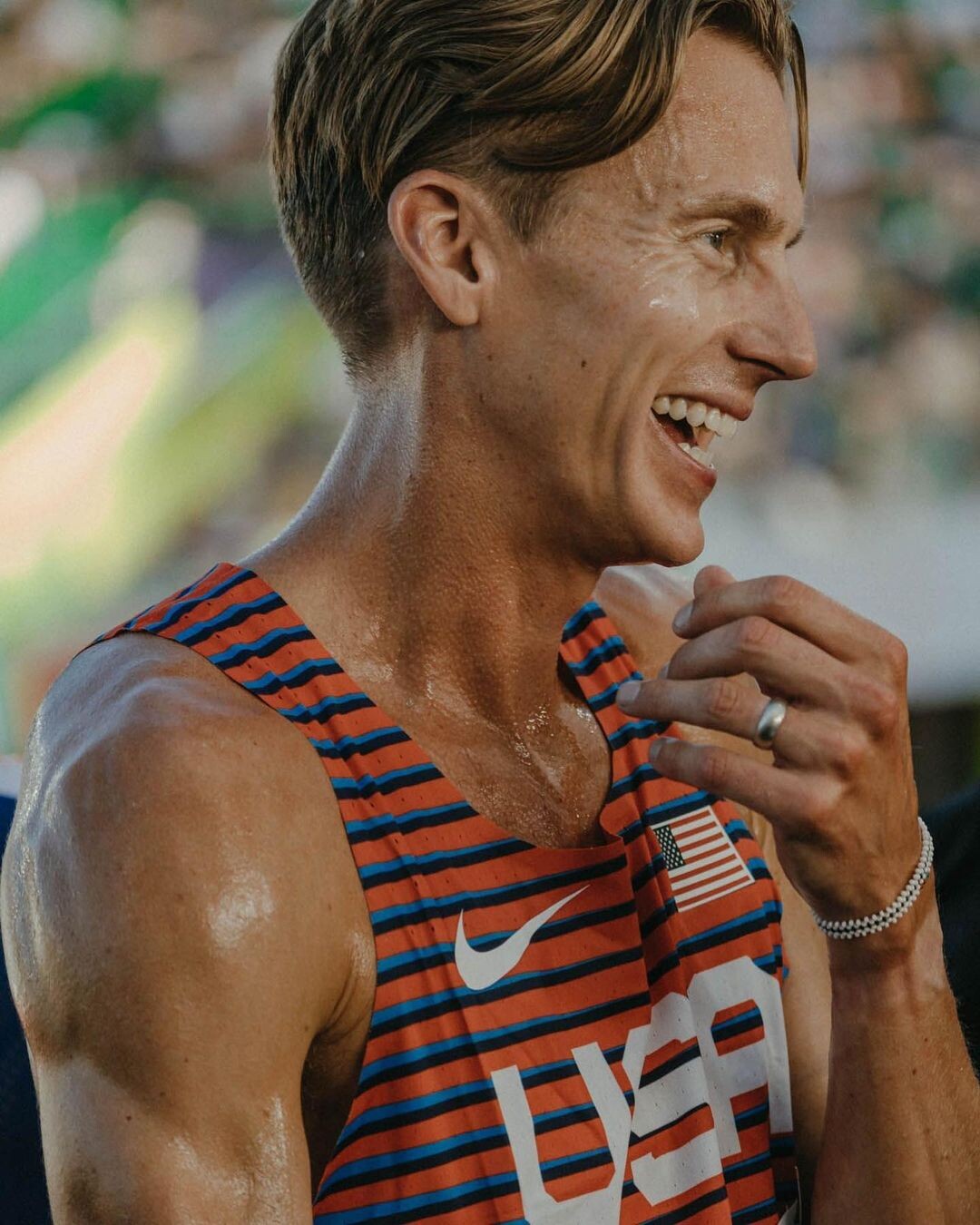
Things finally clicked at the USATF Outdoor Championships on June 25, when he ran 8:17.25 in the final to place second, earning him the world championships standard and a spot on Team USA for the World Athletics Championships at Hayward Field in Eugene, Oregon.
“Once you reach a certain point, you’ve got to set the bar higher,” Jager told Runner’s World.“I probably didn’t start thinking about realistically making the World Championship final until the prelim at USAs, I felt really good coming off of that.”
With momentum on his side, Jager’s expectations grew. The Bowerman Track Club athlete looked strong in his world championships preliminary heat, qualifying automatically for the final with his second-place finish. But in a tactical and physical final, Jager couldn’t keep up with defending Olympic champion Soufiane El Bakkali, Olympic silver medalist Lamecha Girma, and defending world champion Conseslus Kipruto over the final lap.
“After the prelim, I felt like my fitness was up there with just about anyone besides El Bakkali and Girma if it was a hard race from the get-go,” Jager said. “Team USA was having such an unbelievable and magical meet that I was letting myself believe that I could let the home crowd carry me to a magical performance. I think I probably would have fared better in a faster race.”
Regardless, the achievement is impressive for a runner who has been absent from the track & field circuit for the last four years. A lot has changed, especially with his training group. In 2018, Jager and Canadian 5,000- and 10,000-meter runner Mo Ahmed were the top dogs on the Bowerman Track Club, challenging the best in the world for medals. But Jager got hurt that year, and spent most of 2019 trying to get fit again while dealing with other injuries. When Jager returned to training, the team dynamic changed completely. Olympic gold medalist Matthew Centrowitz joined the group, who along with Woody Kincaid and Lopez Lomong all ran around 13 minutes in the 5,000 meters that summer. Then, NCAA champions Sean McGorty and Grant Fisher trickled in after using up their eligibility.
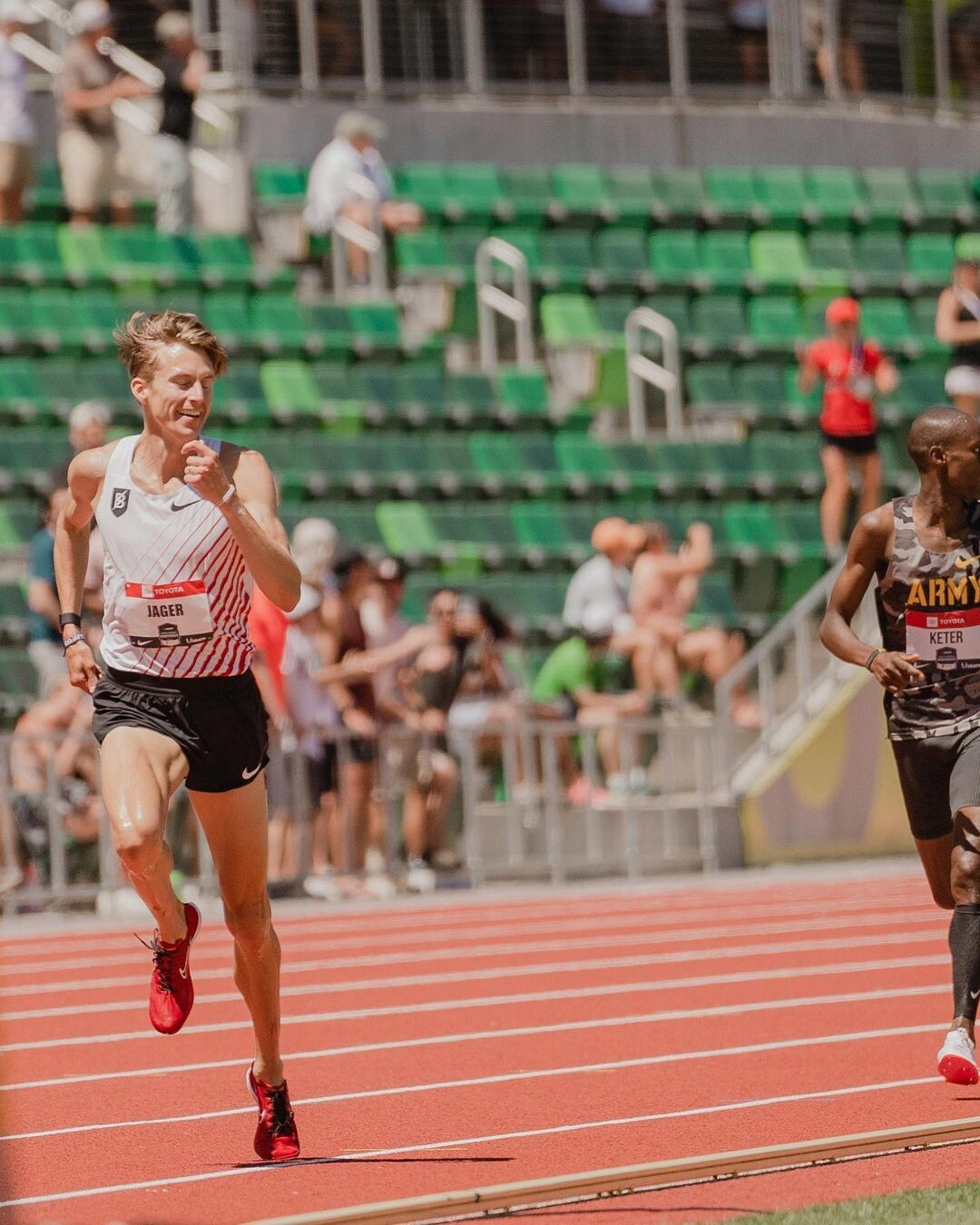
“I went from being on top … to being literally the worst guy on the team,” said Jager. “Every day was a grind.” Jager tried to keep up with the new members while also battling injuries, but had a hard time getting through even half of team workouts. “They were just on another level. I never felt like I was within myself in training for three and a half years up until this spring.”
So what changed in those three and a half years? Jager credits the team physical therapist, Colleen Little, who started working with Bowerman in January 2021. His problem wasn’t simply one big injury, like the stress fracture in his foot that ended his 2018 season. It was a snowball effect of one injury leading to overcompensation and imbalances in other parts of his body. So Jager and Little saw each other once or twice a week, every week, to manage the different aches and pains.
Next year will bring even more changes for Jager. His coach, Jerry Schumacher, is moving to Eugene to take the helm of the University of Oregon track & field program. The Bowerman Track Club’s athletes will relocate from their current base in Portland.
“I think it’s an incredible move for the group,” Jager said. “Change is always good. I’ve been in Portland for 14 years now, so it’s probably a good thing for me.”
Besides that, Jager said being stubborn kept him in the game. “I could have done a lot better being positive and working on mental health [the last few years],” he said. “I just believed that if I got healthy, I would get back here. If I can get to the final off of feeling healthy for four months, then I’m excited for next year.”
by Runner’s World
Login to leave a comment
World Athletics Championships Budapest23
Budapest is a true capital of sports, which is one of the reasons why the World Athletics Championships Budapest 2023 is in the right place here. Here are some of the most important world athletics events and venues where we have witnessed moments of sporting history. Throughout the 125-year history of Hungarian athletics, the country and Budapest have hosted numerous...
more...Soufiane El Bakkali is the king of the steeplechase after claiming world title
Morocco's Soufiane El Bakkali believes he is the "king of steeplechase" after adding the world title to his Olympic Games gold.
The 26-year-old put on a tactical masterclass over the 3,000m course in Eugene to end Kenya's 15-year reign in the discipline at the World Athletics Championships.
In a repeat performance of his Olympic success in Tokyo last year, he stayed near the back of the leading pack for much of the race before making the decisive move in the last 200m to claim gold in a time of eight minutes 25.13 seconds.
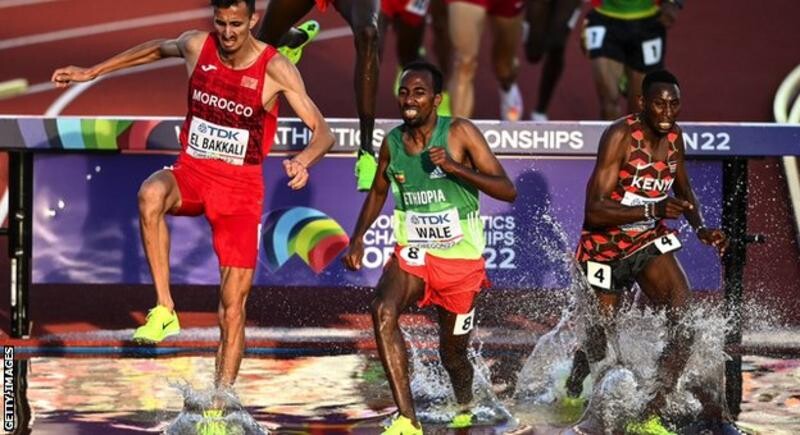
"I am the king of steeplechase because I have gained confidence on the track. That's why I am the Olympic champion and now the world champion," El Bakkali told BBC Sport Africa.
Ethiopia's Lamecha Girma had to settle for silver once again, having finished second in Tokyo and in Doha three years ago, while Kenya's Conseslus Kipruto, the 2019 champion, ended with bronze.
Kenyan runners had won men's steeplechase gold in every edition of the World Championships since Brimin Kipruto's success in Osaka in 2007 and El Bakkali said his finishing speed had been the key to victory in Oregon.
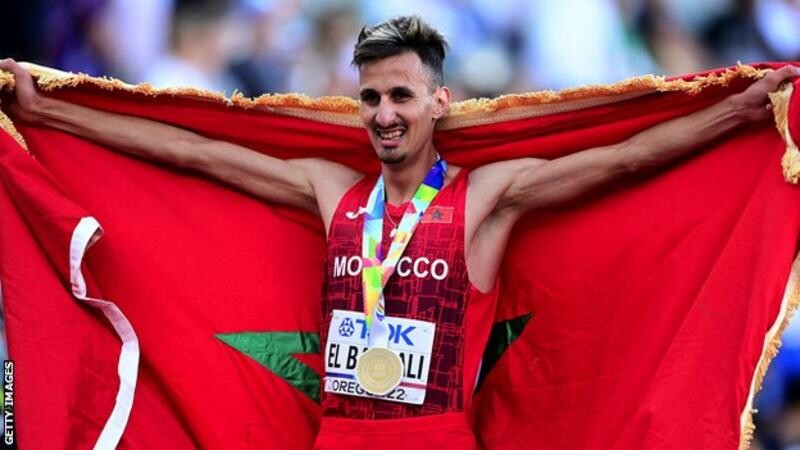
"The course was very tactical, slow. We had very good runners like defending champion Kipruto," said El Bakkali, who beamed as he waved the Moroccan flag over his head.
"I positioned well in the last lap. I am very strong in the 400m and it worked out for me.
"After the semi-final I had a good look at the strategy of the Kenyan athletes. I was on my own, the only Moroccan in the race, but I did not limit myself to winning silver nor bronze. Instead I managed to come first in two world league meetings and now the World Championship."
Kenya's Kipruto upbeat despite bronze
Girma, after another second-placed finish, intends to reassess his training with an eye toward next year's World Championships in Budapest.
"The pace was very slow today, my tactic did not work and that [cost] me the gold," he said.
"I was trying to change the tactic but the pace limited me very much. I will go for gold next year and my training is starting from now on."
Dethroned world champion Kipruto, meanwhile, said he "did not execute the race as planned".
"I was running against athletes who have two years of consistent running when I was struggling," he added.
"It was never going to be easy. But I take the bronze positively."
Kipyegon now the greatest 1500m runner?
Meanwhile two-time Olympic champion Faith Kipyegon of Kenya took 1500m gold in an astonishing time of 3:52.96 to regain her world title.
Kipyegon first took the crown in London in 2017 and becomes the first woman to win four global 1500m titles, with Ethiopia's Gudaf Tsegay second and Britain's Laura Muir in third.
Winning silver in Doha in 2019, having spent 12 months out of competitive running the year before when her daughter was born, meant crossing the line first in Eugene was even more fulfilling for the Kenyan.
"I knew it was going to be fast so I was really expecting that tight race," she told BBC Sport.
"I was not scared. I was like 'everything is possible' and I had to calm down, enjoy the race and I won.
"It feels very good to get back the world title that I lost in 2019 when I was coming back from giving birth to my daughter, who means the world to me."
Login to leave a comment
World Athletics Championships Budapest23
Budapest is a true capital of sports, which is one of the reasons why the World Athletics Championships Budapest 2023 is in the right place here. Here are some of the most important world athletics events and venues where we have witnessed moments of sporting history. Throughout the 125-year history of Hungarian athletics, the country and Budapest have hosted numerous...
more...Conseslus Kipruto leads Kenyan quartet in quest for steeplechase gold
Kenya's dominance in the 3,000 metres steeplechase faces a stern test when the World Championships start on Friday in Oregon, USA.
Defending champion Conseslus Kipruto, Olympic Games bronze medallist Benjamin Kigen, 2017 World Under-18 2000m silver medallist Leonard Bett and Commonwealth Games silver medallist Abraham Kibiwott are carrying the nation's hopes of keeping the title the country has won in every World Championship since 1991 except in 2001 and 2005.

Kenyan-born Qatari Saif Shaheen, who holds the world record of 7:53.63 in the race, bagged gold in 2001 Saint-Denis and 2005 Helsinki World Championships.
Bett and Kibiwot are in the first heat where they will be seeking to make the final scheduled for Monday.
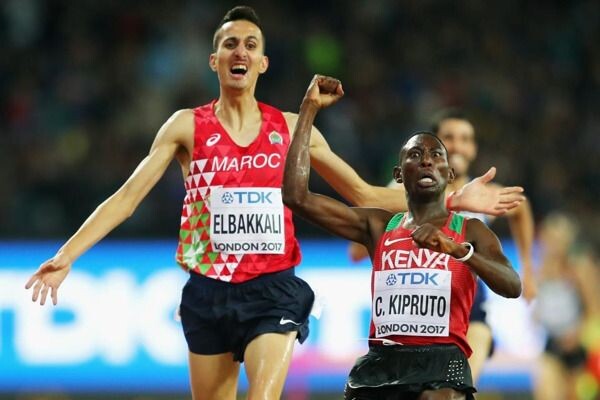
The top three athletes in each semifinal plus the six fastest losers will qualify for the final.
Bett and Kibiwott face an uphill task as they face Olympics champion Soufiane El Bakkali from Morocco in the first heat. Bakkali has a personal best time of 7:58.15 which is also the world-leading time.
Bett told Nation Sport that the plan is to safely navigate through the heats before they can hatch a plan on how to claim the medals in the final.
“We started our preparations early by joining the camp before the trials because the initial plan was to make sure we tackle the stiff competition especially from the two athletes (Girma and Bakkali) who have been on top form this season," said Bett.
“I won’t tell you who will win the gold medal but we have to work as a team to make sure we redeem our name as a country,” added Bett.
The second semifinal will see the Kipruto square it out with Ethiopia’s Lamecha Girma, whom he narrowly beat during the 2019 World Championships in Doha, Qatar.
Djibouti’s Mohamed Ismail, Canada’s Ryan Smeeton, USA’s Hillary Bor are also in the field.
Kigen, Ethiopia’s Hailemariyam Amare, Tunisia’s Mohamed Amin, USA’s Evan Jager, Norway’s Jacob Boutera are in Heat Three.
Kipruto, who has been battling injuries after his triumph in Doha in 2019, is seeking to atone for lost time after missing the Olympic Games last year.
Kipruto finished fifth during the Athletics Kenya Track and Field Championships which acted as the trials for the Africa Senior Championships after clocking 8:32.24, before emerging in the same position during the Kip Keino Classic in Nairobi last month.
“Kenyans should not be worried because this is a championship and you can’t compare it with the Diamond League races. It will be a tight contest in the final and I will be doing my best to make sure we bring back our glory as Kenyans,” Kipruto had said in an earlier interview before leaving for Oregon.
In the 2019 worlds, Kipruto won gold in 8:01.35 ahead of Girma who clocked 8:01.36 while Bakkali settled for bronze in 8:03.76.
by Bernard Rotich
Login to leave a comment
World Athletics Championships Budapest23
Budapest is a true capital of sports, which is one of the reasons why the World Athletics Championships Budapest 2023 is in the right place here. Here are some of the most important world athletics events and venues where we have witnessed moments of sporting history. Throughout the 125-year history of Hungarian athletics, the country and Budapest have hosted numerous...
more...Ethiopia Has Changed Its Team Again for the 2022 Worlds
On Tuesday, the Ethiopian Athletics Federation announced its team for the 2022 World Athletics Championships in Eugene. If this sounds familiar, that’s because Ethiopia already named its team on June 13…and then updated it four days later to sub in Dawit Seyaum after she ran 14:25 to win the Oslo Diamond League.
Tuesday’s list — which the federation says is the final roster (it pretty much has to be, since entries were due to World Athletics on Monday) — features even more changes, which will have a major impact on Worlds, which begin on July 15 at Hayward Field. Remember, at World Indoor Championships earlier this year in Belgrade, Ethiopian athletes won eight of the 12 available medals across the 1500 and 3000 meters — including all four golds and a 1-2-3 sweep in the women’s 1500. The country is a distance powerhouse.
Here is the full roster, with changes, followed by some analysis on what it all means.
Men’s 800 (no changes)Ermiyas GirmaTolosa Bodena
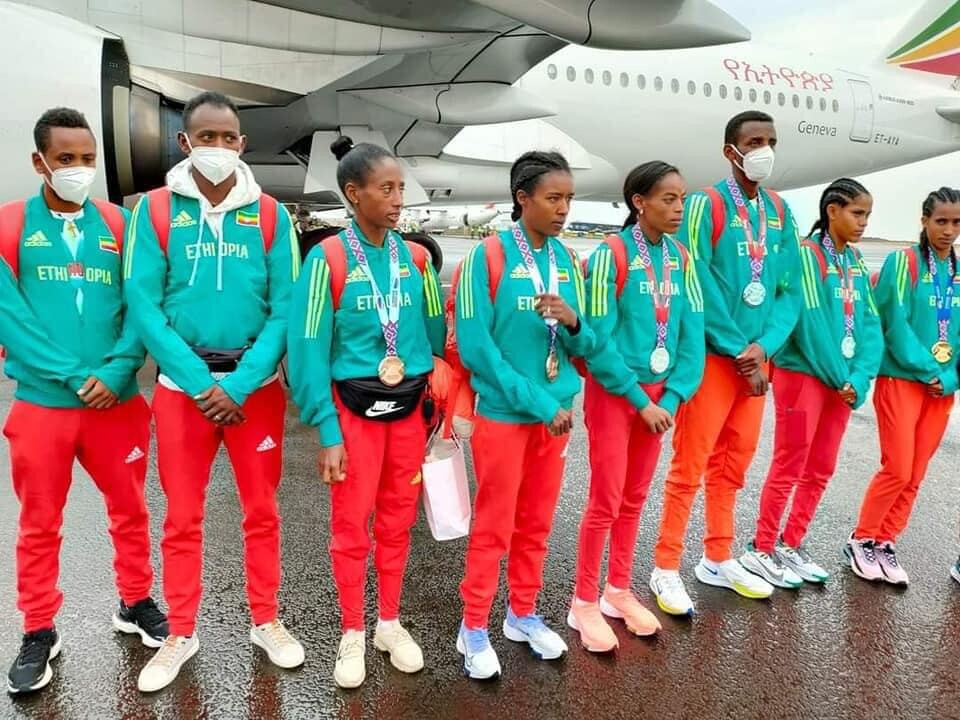
Women’s 800Habitam AlemuDiribe WeltejiHirut Meshesha (1:58.54 sb) replacing Freweyni Hailu (1:59.39 sb)
Men’s 1500Samuel TeferaTaddese Lemi (3:37.06 sb) replacing Melese Nberet (no races this year)Samuel Abate
Women’s 1500Gudaf Tsegay (3:54.21 sb) replacing Axumawit Embaye (3:58.80 sb)Freweyni Hailu (3:58.18 sb, 4th in Olympics) replacing Ayal Dagnachew (3:59.87 sb)Hirut Meshesha
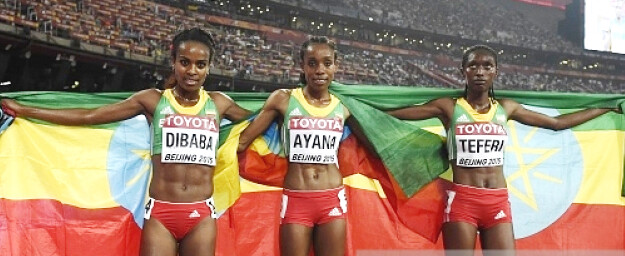
Men’s 3000 steeple (no changes)Lamecha GirmaHailemariyam AmareGetnet Wale
Women’s 3000 steepleMekides AbebeWorkua GetachewSimbo Alemayehu (9:09.17 sb at age 18) replacing Zerfe Wondemagegn (9:27.75 sb)
Men’s 5,000Muktar EdrisBerihu AregawiYomif KejelchaSelemon Barega replacing Telahun Bekele
Women’s 5,000Ejgayehu TayeLetesenbet Gidey (14:24.59 sb) replacing Gudaf Tsegay (14:26.69 sb)Dawit Seyaum (14:25.84 sb) replacing Fantu Worku (14:47.37 sb)
Men’s 10,000Selemon BaregaTadese WorkuBerihu Aregawi (26:46.13 sb) replacing Milkesa Mengesha (27:00.24 sb)
Women’s 10,000Letesenbet GideyEjgayehu Taye (30:44.68 sb) replacing Girmawit Gebrzihair (30:47.72 sb)Bosena Mulate
Men’s marathonLelisa DesisaTamirat TolaMosinet GeremewSeifu Tura
Women’s marathonGotytom GebreslaseAbabel YeshanehAshete Bekere
Quick Takes
1) Ethiopia’s team just got A LOT stronger and Ethiopia went from no one doubling to a lot of doublers
In recent years, Ethiopia has been reluctant to allow its stars to double at global championships. Last year in Tokyo, Ethiopia had two huge 5,000m medal threats in Selemon Barega (Olympic 10,000 champ) and Berihu Aregawi (the 10,000 4th placer who would go on to win the Diamond League 5,000 title) but neglected to enter either in the 5,000 meters. Of the three men Ethiopia did enter, two failed to even make the final and the third, Milkesa Mengesha, wound up 10th.
The federation took criticism after that misstep and it looked as if it would double down in 2022 as the initial team named in June featured no doublers. But the final squad features five athletes double-entered: World Indoor bronze medalist Hirut Meshesha (800/1500) and Ejgayehu Taye (14:12 pb, #5 woman all-time), Letesenbet Gidey (women’s 5k/10k world record holder), Barega and Aregawi, all of whom are running the 5,000 and 10,000.
2) The meet is more interesting with the Ethiopians doubling; the men’s 5,000 final is now totally stacked
The World Championships are meant to be about the best against the best. When a world final is over, we don’t want to be asking ourselves, “What would have happened if Athlete X was in the race?” But that’s absolutely what we were thinking after the 2021 Olympic 5000 final without Barega. And it’s been an issue for a lot longer than that. Only once in his career did Haile Gebrselassie attempt the 5,000/10,000 double at a global champs (1993), in part because there were still prelims in the 10,000 in those days and in part because he didn’t want to tire himself for the lucrative post-championship meets in Europe.
That shouldn’t be an issue in 2022 (and if it is, it won’t have been the fault of the Ethiopian federation) as the distance finals are much stronger with Taye, Gidey, Barega, and Aregawi doubling up. The men’s 5,000 could be an all-timer. Not only do you have Olympic 5,000 champion Joshua Cheptegei of Uganda, but now we have Olympic 10,000 champ Barega stepping down and Olympic 1500 champion Jakob Ingebrigtsen stepping up. It’s reminiscent of one of the most famous races in track history, the 2003 World Championship 5,000 final in Paris which featured Hicham El Guerrouj stepping up from the 1500 and Kenenisa Bekele stepping down from the 10,000 only for both of them to be defeated by an 18-year-old Eliud Kipchoge.
Having Aregawi in the 10,000 makes for a stronger race as well as he was 3rd at the Ethiopian trials in that event and set a Diamond League record for margin for victory when he ran 12:50 to win the Pre Classic 5,000 by 16 seconds.
3) Gudaf Tsegay’s medal odds went up but her gold medal odds went down
Tsegay is pretty clearly the #2 women’s 1500 runner in the world. She won World Indoors by 5+ seconds and is 3+ seconds faster than the #3 1500 woman in the world right now. But she’s also not close to double Olympic champ Faith Kipyegon, who beat her convincingly at Pre, 3:52.59 to 3:54.21.
Initially, Tsegay was entered in the 5,000 at Worlds (she ran the 5,000 only at the Olympics last year, earning the bronze medal) and while there’s no overwhelming favorite in that event like Kipyegon (well at least until we see how Sifan Hassan looks this weekend), Tsegay is not as good at the 5,000 as the 1500 (as evidenced by her defeat to countrywoman Dawit Seyaum in the 5,000 in Oslo). By running the 1500, Tsegay has a better shot at a medal but her odds at gold are worse.
4) It just got a WHOLE LOT harder for the Americans to medal
An American medal in the women’s 5,000 or 10,000 was already unlikely, so the Ethiopian roster changes didn’t make a huge impact on the chances of Karissa Schweizer or Elise Cranny. But the medal odds of Grant Fisher, who finished 5th in the Olympic 10,000 last year, are way lower today than they were a week ago (a statement also true for his US teammates Woody Kincaid and Joe Klecker).
Last Wednesday, two of the four men who finished ahead of Fisher in the 10,000 in Tokyo were major question marks. Bronze medalist Jacob Kiplimo hadn’t raced on the track all year, while Aregawi, the 4th placer, was named to Ethiopia’s team in the 5,000 only. Since then, Kiplimo ran 7:29 for 3,000 in Stockholm to show he’s very fit right now and Aregawi was added to Ethiopia’s 10,000 squad. Plus Barega was added to the 5,000.
Those developments will make it significantly harder for Fisher (or any American man in the 5,000 or 10,000) to earn a medal. That said, if an American can somehow medal, it will go down as a monumental achievement since no one can accuse these fields of being watered down.
Sinclaire Johnson‘s medal hopes in the 1500 also took a BIG hit. With Tsegay now in the 1500, two medals seem to be spoken for and new addition Freweyni Hailu, who was 4th in the Olympics last year at age 20, is better than Ayal Dagnachew (who is no slouch herself, world junior 800 champ last year and 3:59 this year).
5) Ethiopia needs to figure out a better way to do this
One of the most important jobs an athletics federation has is selecting national teams. And for countries that don’t use a “top 3 at the trials” model — which is to say, every country except for the US — things can get prickly as someone, inevitably, is going to be upset they’re missing out on the team.
There are ways to limit the outrage. The simplest solution is the one USATF has already discovered: hold a trials and just pick the top three finishers. Ethiopia actually did this ahead of the Olympics last year. The problem was, they held all the races on the same day, making it impossible for athletes to try out for both the 5,000 and 10,000 teams.
But even if you don’t want to stage a trials, a federation can avoid much of the backlash by announcing a clear criteria ahead of time and sticking to it. You want to pick the team based off season’s bests? Fine. Just let everyone know before the season starts and let them plan their races accordingly. Transparency and consistency are the keys.
Heck, even if you want to be subjective and use a selection panel, you can at least cut down on some of the drama by letting the athletes know in advance that they’ll have to run a few performances to impress the selectors.
What you don’t want to do is announce a team well before the entry deadline (and three days before two key Diamond League meets featuring most of your athletes) only to drastically change it three weeks later. Which is exactly what happened in Ethiopia, leaving athletes like Telahun Bekele (winner of the 5,000 in Oslo) to think they’re on the team only to yank it away less than a month later.
In the end, Ethiopia ended up picking the team by season’s best except in the 10,000, where it staged a trial race (and the top 3 there were the fastest 3 on the year). If it had just used that criteria throughout the year and stuck to it, there would be fewer angry people right now. The athletes deserve better.
by Jonathan Gault
Login to leave a comment
World Athletics Championships Budapest23
Budapest is a true capital of sports, which is one of the reasons why the World Athletics Championships Budapest 2023 is in the right place here. Here are some of the most important world athletics events and venues where we have witnessed moments of sporting history. Throughout the 125-year history of Hungarian athletics, the country and Budapest have hosted numerous...
more...One month to go - Road to Oregon22
One month from yesterday, the World Athletics Championships Oregon22 – the first to be held in the United States – will get under way at the all-new Hayward Field in Eugene.
One week from today, that same venue will stage the fearsome, first-three-home drama of the USATF Championships, where home athletes will seek to earn the right to return to the re-built arena once the global event starts on 15 July.
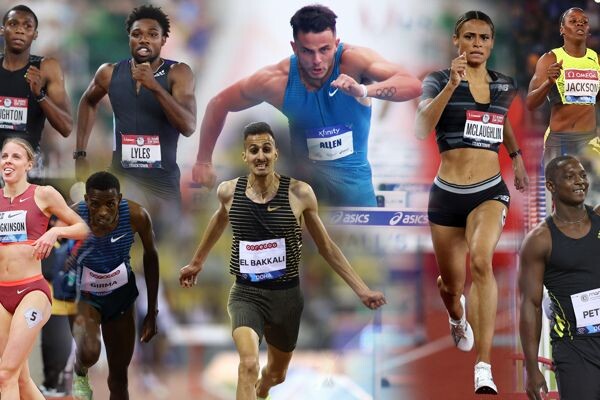
The perennial jeopardy of that event means that some of the most likely home medallists cannot yet be inked in for the World Championships. But wild card entries for defending champions mean that US athletes such as 200m gold medallist Noah Lyles, who has demonstrated convincing form in recent weeks and days, will count on toeing the line.
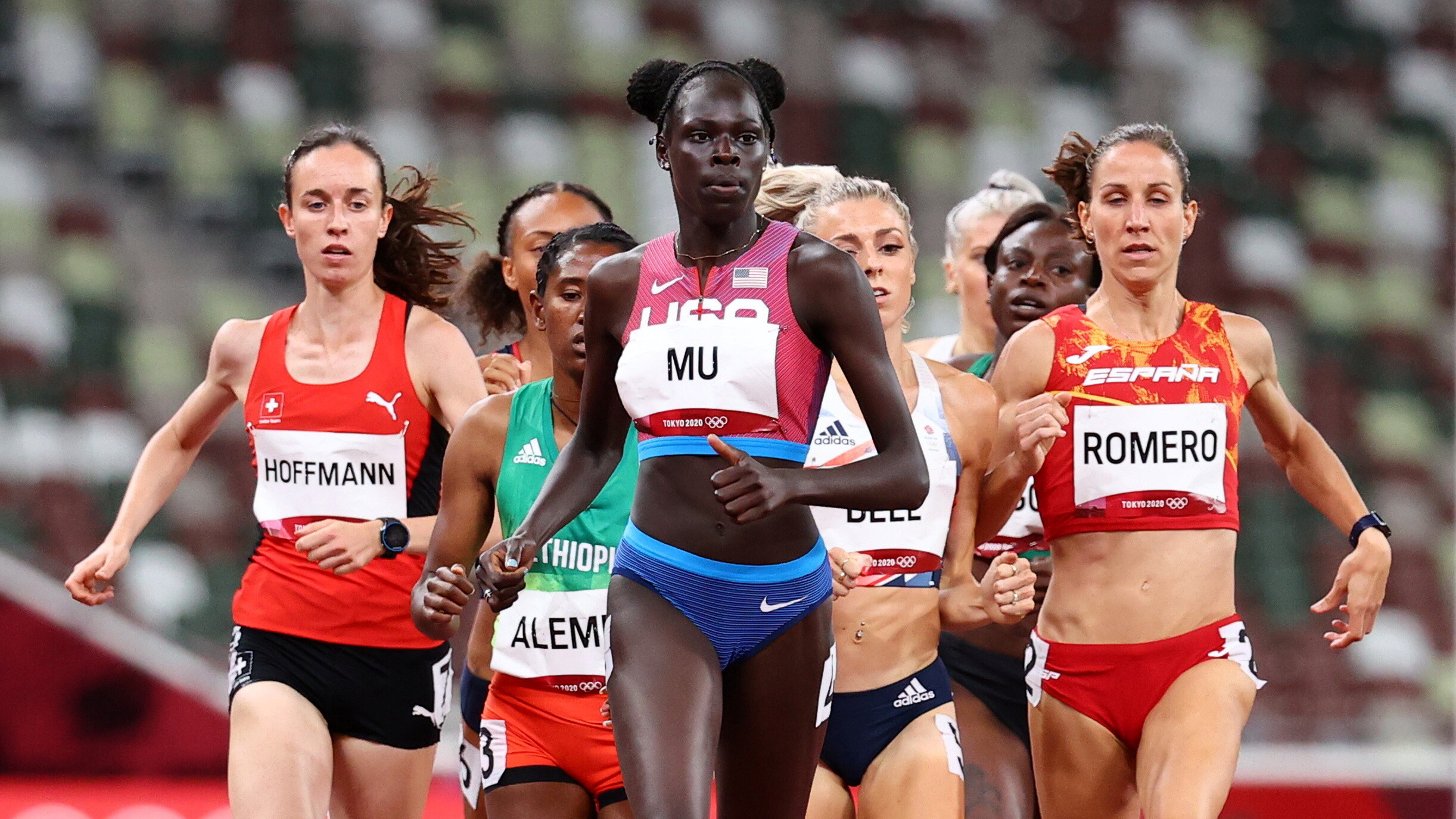
Prospective challengers for medals in Eugene, notably from Europe and Africa, have been laying down their markers in earnest over the last fortnight, however, as the meetings have come thick and fast. The level of excitement and anticipation is rising rapidly on the Road to Oregon.
Britain’s Keely Hodgkinson has her sights firmly set on world 800m gold in Oregon. As does her fellow 20-year-old Athing Mu of the US, who beat her to Olympic gold in Tokyo last year. Something has to give.
Hodgkinson eschewed an almost certain 800m medal at the World Indoor Championships in March as a precaution after feeling a muscle twinge in warm-up for the final – it had to be gold or nothing for her, and she didn’t want to risk what promises to be a richly busy outdoor season.
After an impressive victory in Birmingham she travelled to the Eugene Diamond League keyed up for a pre-World Championships battle with her rival, only to find that Mu was a no-show following the after-effects of having Covid-19.
The Briton did all she could to lay down a big marker on the track where the world golds will be disputed, piling in to win in 1:57.72, the fastest time of the year.
The glove was down. And less than a fortnight later at the Rome Diamond League meeting it was firmly grasped by Mu as she answered the challenge by romping home to win in 1:57.01.
Emmanuel Wanyonyi, the phenomenal 17-year-old who won the world U20 men’s 800m title on his home track of Nairobi last year, has maintained impressive momentum this season, winning in 1:44.15 in Ostrava and coolly outrunning Botswana’s 2012 Olympic silver medallist Nijel Amos at the Rabat Diamond League meeting to win in 1:45.47.
In the Moroccan capital, local hero Soufiane El Bakkali, whose Tokyo victory in the men’s 3000m steeplechase provided his country with its only medal from the Games, once again defeated his great Ethiopian rival Lamecha Girma in a race that nearly blew the roof off the Prince Moulay Abdellah Stadium.
Login to leave a comment
World Athletics Championships Budapest23
Budapest is a true capital of sports, which is one of the reasons why the World Athletics Championships Budapest 2023 is in the right place here. Here are some of the most important world athletics events and venues where we have witnessed moments of sporting history. Throughout the 125-year history of Hungarian athletics, the country and Budapest have hosted numerous...
more...Barega upgrades to 3000m gold in Belgrade in one-two for Ethiopia
The Ethiopian domination of the men’s 3000m continued with an eighth gold and a second successive 1-2 in the event, Selemon Barega emerging victorious from a last-lap sprint with compatriot Lamecha Girma in the final morning session at the World Athletics Indoor Championships Belgrade 22.
Four years ago in Birmingham in 2018, Barega had to settle for silver behind Yomif Kejelcha but that was when he was an 18-year-old junior still learning his craft.
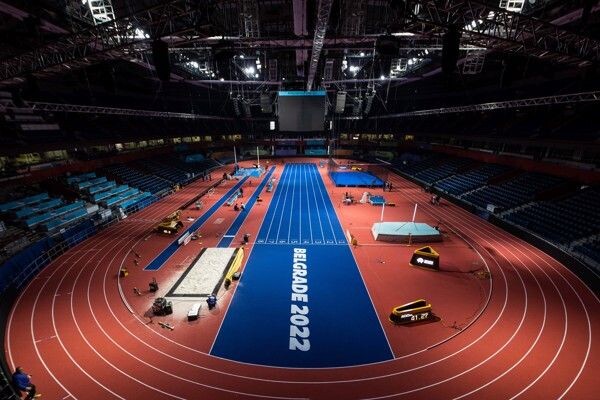
Four years on, with an Olympic 10,000m gold and world 5000m silver back home, the 22-year-old had too much strength and speed when Girma attempted to launch an attack on the back straight of the final lap, crossing the line 0.25 clear in 7:41.38.
As in the Olympic steeplechase final in Tokyo last year, and over the barriers in the 2019 world final in Doha, Girma finished in the silver position again, clocking 7:41.63, with Marc Scott timing his effort to perfection to claim Britain’s first medal in Belgrade – and their first in the event since Rob Denmark’s bronze in Seville in 1991.
It was a slow burner of a contest, Barega moving to the front after the opening lap and leading the field to 800m in 2:04.20. At that point, however, he was content to drift back as Kenyans Daniel Ebenyo and Jacob Krop assumed the lead but without ever threatening to make a decisive break.
At the bell Barega was back in front with six others still in the hunt but none of them could match him – even Girma, who had got the better of him earlier in the season in Lievin and Torun.
“We came to Belgrade aiming to make history for Ethiopia,” said Barega. “I have had a good season, so I was ready both physically and mentally to fight for gold. With Girma we discussed the possibility of helping each other make the podium. Our tactic has paid off.
“It was a tough race in which we were focused mostly on the Kenyan guys,” he added. “I decided to lead the race from the beginning because many runners in this final are 1500m specialists. I just wanted to make the pace fast and comfortable. Then I slowed down to save some energy for the finishing kick. It was a good plan and another great experience for me.”
And so the Ethiopian with the awesome range found himself emulating his celebrated compatriots Haile Gebreslassie and Kenenisa Bekele as an Olympic champion at 10,000m and a world indoor winner at 3000m
Gebrselassie, of course, also struck world indoor gold as a 1500m runner in Maebashi in 1999 – as well as taking the 3000m crown in 1997, 1999 and 2003.
The other Ethiopian 3000m golds came from Bekele in 2006, Tariku Bekele in 2008, and Kejelcha in 2016 and 2018.
Scott took the bronze in 7:42.02, 0.95 ahead of Ebenyo in fourth, with Krop in fifth, Zouhair Talbi of Morocco in sixth and Spain’s Adel Mechaal seventh.
by World Athletics
Login to leave a comment
Ethiopia's Selemon Barega returns to Lievin with world record target
Organizers have announced that Ethiopia's Selemon Barega is to return to the Meeting Hauts-de-France Pas-de-Calais – a World Athletics Indoor Tour Gold meeting – in Lievin on 17 February, to tackle the world indoor 3000m record.
The world indoor silver medalist moved to third on the world indoor all-time list with his performance in Lievin last year, the 21-year-old clocking 7:26.10 to finish second behind his compatriot Getnet Wale who ran 7:24.98 to just miss Daniel Komen’s long-standing world record of 7:24.90.
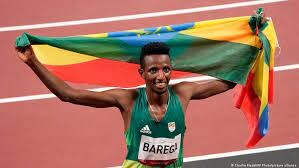
Barega went on to win over 1500m at World Indoor Tour meetings in Torun, where he set an indoor PB of 3:32.97, and Madrid, before becoming the Olympic 10,000m champion in Tokyo.
Barega has also been announced for the Copernicus Cup in Torun on 22 February, where he is set to be joined by Wale and Lamecha Girma, who finished third behind his compatriots in Lievin last year, clocking 7:27.98. Before that race, just six men had bettered 7:30 for 3000m indoors. Now the figure stands at 10, with the fourth-place finisher in Lievin last year, Berihu Aregawi, also dipping under the mark with 7:29.24.
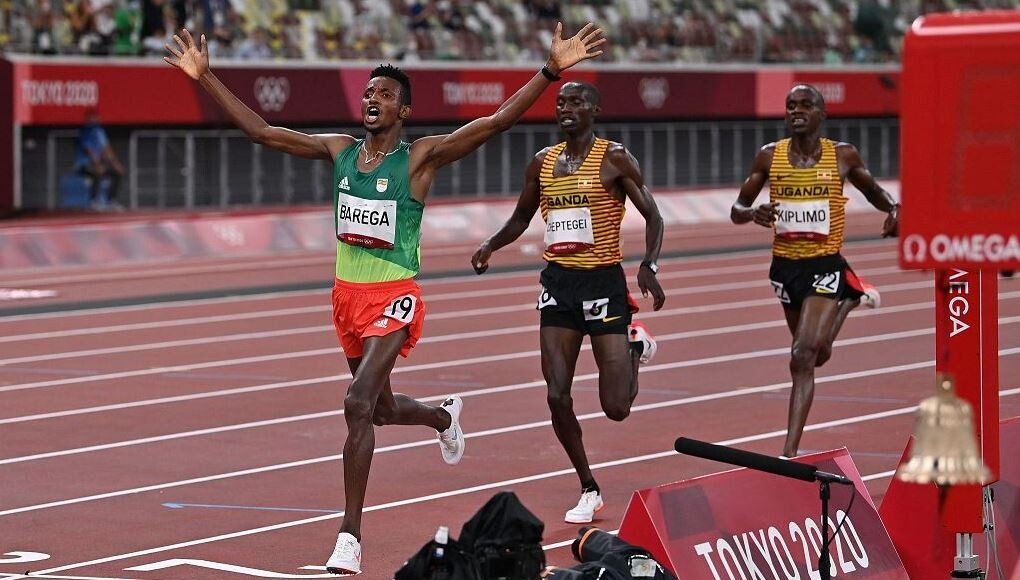
Also among those returning to Lievin is Gudaf Tsegay, who broke the world indoor 1500m record last year and this time races the mile.
Other athletes announced for the meeting include world indoor 60m hurdles record-holder Grant Holloway, Olympic 100m champion Marcell Jacobs and Olympic 1500m champion Jakob Ingebrigtsen.
by World Athletics
Login to leave a comment
Jacob Ingebrigtsen and Karsten Warholm will attack European records in Lausanne
The Athletissima meeting in Lausanne on Thursday (Aug 26) is part of the Diamond League series. Perhaps the most intriguing event of the night, though, is an event that is not part of the Diamond League programme – the men’s 400m.
Karsten Warholm will enjoy a rare race on the flat with no barriers in his way. His target? Thomas Schönlebe’s long-standing European record of 44.33 which was set when the East German won the 1987 world title in Rome ahead of Innocent Egbunike of Nigeria and Butch Reynolds of the United States.
The mark has stood for 34 years. Warholm’s best time is 44.87 which dates back to 2017. However the 25-year-old Norwegian took down Kevin Young’s long-standing world 400m hurdles record earlier in Oslo this summer and then annihilated his own mark with a further improvement to 45.94 in the Olympic final in Tokyo this month.
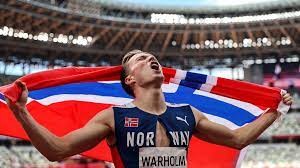
What’s more, Warholm equalled Schönlebe’s European indoor 400m record of 45.05 in Glasgow in 2019. The omens are good and in Lausanne he faces a field that is led by Isaac Makwala – a 43.72 man who was seventh in the Olympic final.
Jakob Ingebrigtsen also has a European record in his sights – Mohammed Mourhit’s 3000m mark of 7:26.62 which was set 21 years ago in Monaco and one-year before he was suspended for using EPO. Ingebrigtsen ran 7:27.05 in Rome last year when he finished close behind Ugandan Jacob Kiplimo.
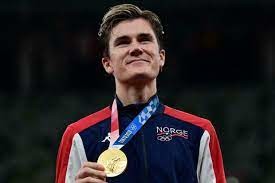
Kiplimo is again in the field on Thursday along with Olympic 10,000m champion Selemon Barega of Ethiopia, Canadian Mohammed Ahmed, American Paul Chelimo, Australian Stewart McSweyn and Ethiopia’s Olympic steeplechase silver Lamecha Girma.
Andy Butchart, meanwhile, will be having a crack at Mo Farah’s UK record of 7:32.62 in what promises to be a fast race.
Fresh from her stunning 10.54 100m run in the Diamond League in Eugene on Saturday, Elaine Thompson-Herah travels back to Europe to race over the distance again. Her rivals include fellow Jamaican Shelly-Ann Fraser-Pryce, in-form Swiss sprinters Ajla Del Ponte and Mujinga Kambundji, Marie-Josee Ta Lou of the Ivory Coast and Britain’s Daryll Neita.
The meeting actually kicks off with a city center high jump contest between Olympic medalist Mutaz Essa Barshim, Gianmarco Tamberi and Maksim Nedasekau on Wednesday (Aug 25) in Lausanne. It acts as a prelude to the main event on Thursday and will see a rematch of the men who famously shared gold in Tokyo.
Back in the stadium on Thursday, the field events see triple jump world record-holder Yulimar Rojas in action, as well as German javelin star Johannes Vetter and shot put giants Ryan Crouser, Joe Kovacs, Tom Walsh and Darlan Romani.
by Jason Henderson
Login to leave a comment
Kenya´s Olympic Steeple Streak Broken by Soufiane El Bakkali of Morroco
Two-time world medalist Soufiane El Bakkali of Morocco, fourth at the Rio Games, found an extra gear near the final water jump to claim men’s steeplechase gold, becoming the first non-Kenyan to win the event since 1980.
El-Bakkali won in 8 minutes, 8.90 seconds on a wet track at the Olympic Stadium in Tokyo. He finished well clear of Lamecha Girma of Ethiopia, who took the silver.

Benjamin Kigen claimed a bronze for Kenya after Ethiopia’s Getnet Wale, who was third heading to the final straight, fell. Wale struggled back to his feet and clung on for fourth.
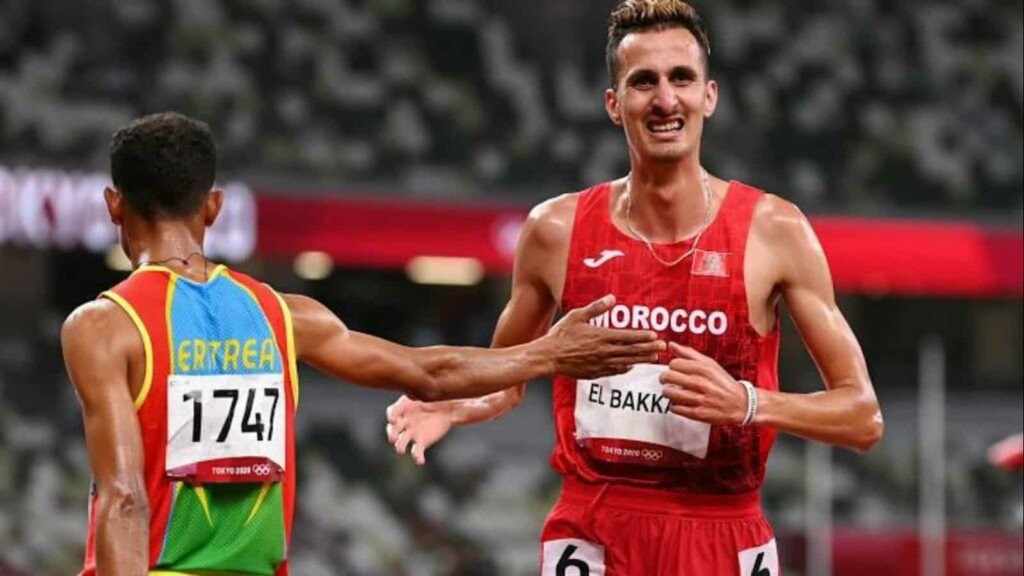
The 25-year-old el-Bakkali was fourth at the last Olympics in Rio de Janeiro and on the podium at the last two world championships, but this was his first major title.
Kenya’s Conseslus Kipruto, the leading star of the steeplechase, didn’t defend his Olympic title in Tokyo after failing to make the Kenyan team at the national trials.
by NBC Sports
Login to leave a comment
Tokyo 2020 Olympic Games
Fifty-six years after having organized the Olympic Games, the Japanese capital will be hosting a Summer edition for the second time, originally scheduled from July 24 to August 9, 2020, the games were postponed due to coronavirus outbreak, the postponed Tokyo Olympics will be held from July 23 to August 8 in 2021, according to the International Olympic Committee decision. ...
more...Kipyegon cruises to Kenyan 1500m record in Monaco
It’s all about keeping the faith.
Going into tonight’s 1500m at the EBS Herculis meeting in Monaco, world champion Sifan Hassan announced that she had asked for a pace of 61-second laps, which would add up to a second or so under the current world record of 3:50.07.


The Dutchwoman has set world records twice previously in Monaco, most recently over the mile two years ago, and she was feeling confident after rediscovering her love for the metric mile with a victory over Olympic champion Faith Kipyegon at the Wanda Diamond League meeting in Florence last month.
Hassan even floated the idea of adding the 1500m back into her Olympic schedule, having previously declared that she would attempt the 5000m-10,000m double.
She locked in behind the pacemaker from the beginning, her ambition obvious. Only Kipyegon and Ethiopia’s Freweyni Hailu dared to follow and the race was down to three when they reached the bell.
Hassan then turned the screws, but Kipyegon clung to her like a limpet down the back straight as the Dutchwoman stretched out her legs for the run home.
In the past three years races have inevitably gone Hassan’s way in this situation, her unmatched mix of speed and endurance proving irresistible. But not this time.
As they entered the final straight Kipyegon kicked hard, dashing past her rival and sprinting down the straight to win in 3:51.07, a Kenyan record and the fourth fastest time in history. In the last 90 metres she put two-and-a-half seconds into Hassan, who finished in 3:53.60, with Hailu third in a personal best of 3:56.28.
Despite her recent losses to Hassan, Kipyegon said she remained confident that her day would come.
“I knew Sifan was going for a fast race and my goal was to run a fast race here and I thank God that was,” she said. “I am really looking forward to Tokyo and I know it will be a very hard competition but I hope to go there and defend my title.”
Kipyegon gave birth to her first child in 2018, returning in 2019 to finish second to Hassan at the World Championships in Doha, but has now found an even richer vein of form than that which carried her to the Olympic title in 2016 and the world title in 2017. “I came back after giving birth and I feel like a role model for the young mothers out there and the young athletes,” she said. “I hope to show them that when you go for maternity leave, this does not mean the end of your career. You can come back strong and win races.”
Fellow Kenyan Timothy Cheruiyot was also a man on a mission tonight.
With his Olympic dreams hanging in the balance, the world 1500m champion dashed to the fastest time in the world for six years.
An out-of-sorts Cheruiyot was a shock fourth at the Kenyan Olympic trials last month, putting him in grave danger of missing selection. The situation has been complicated by the fact that second-placed Kamar Etiang has not completed the requisite number of anti-doping tests to qualify for the Olympic Games so his eligibility is in question.
That has left Cheruiyot in limbo just weeks before the Tokyo Games, but he thrust aside all that uncertainty to race with clear intent in Monaco.
In the fastest race of the year, he led at the bell and fought off all challenges, setting a personal best of 3:28.28 as four men dipped under 3:30.
Spanish surprise packet Mohamed Katir took almost five seconds from his personal best to finish second (3:28.76 national record) ahead of European champion Jakob Ingebrigtsen (3:29.25) and Australia’s Stewart McSweyn, who set an Oceanian record of 3:29.51 in fourth.
Cheruiyot revealed afterwards that a hamstring injury and the death of a relative on the day of the Kenyan trial had affected his performance there but he still hoped to be selected for the Olympics.
“Hopefully that will be the deciding performance to make the team for Tokyo,” he said.
Amos and Muir impress over two laps
On a night of high-quality middle distance running, Botswana’s Olympic medallist Nijel Amos roared back to top form, recording the fastest time of the year to down a field full of Olympic contenders.
With his arms flailing, Amos used his awkward but effective running style to propel himself past Kenya’s Emmanuel Kori (1:43.04) and Canada’s Marco Arop (1:43.26).
Britain’s Laura Muir also had the last laugh in a world-class 800m field, looming late to take the win in a big personal best of 1:56.73. Muir had never cracked 1:58 previously for the distance, but had the strength to haul in her training partner Jemma Reekie (1:56.96) and USA’s Kate Grace (1:57.20) in the final metres as all three women set personal best times.
Muir has decided to focus her energy on the 1500m in Tokyo but that will be no easy task as Kipyegon demonstrated.
Both 3000m steeplechase races were suffused with drama and unpredictability at the Stade Louis II.
The men’s race descended into confusion when an official rang the bell a lap too early, but world silver medallist Lamecha Girma still managed to run a world-leading time of 8:07.75 to take the win from Abraham Kibiwot, just 0.06 behind.
In the women’s race, 2015 world champion Hyvin Kiyeng made a break from the pack after two kilometres but misjudged the remaining laps and kicked too early. After crossing the line and hearing the bell for the actual final lap, the Kenyan tried to muster some energy to run another circuit. USA’s 2017 world champion Emma Coburn positioned herself to challenge Kiyeng as they approached the water jump, but Coburn stumbled at the hurdle and fell into the water losing all momentum, leaving Kiyeng to take the victory in 9:03.82, with world record-holder Beatrice Chepkoech second in 9:04.94 and Winfred Yavi third (9:05.45). Coburn regathered herself to cross the line in fourth place in 9:09.02.
Baker blasts to 100m victory
There was unpredictability too in the men’s 100m where the form book was upended as the ever-reliable Ronnie Baker claimed victory in 9.91, from African record-holder Akani Simbini (9.98) and Italian Marcell Jacobs (9.99).
World leader Trayvon Bromell, regarded by many as the man most likely to win the Olympic 100m crown in Tokyo next month, lacked his usual zip and could only finish fifth in 10.01.
World 100m champion Shelley-Ann Fraser-Pryce used her early speed to take the lead on the bend in the women’s 200m, but could not hold off the Olympic 400m champion Shaunae Miller-Uibo in the straight.
Miller-Uibo, who has chosen to focus on the 200m for Tokyo, won in 22.23 from Marie-Josee Ta Lou (22.25) with Fraser-Pryce third (22.48).
New world 400m hurdles record-holder Karsten Warholm returned to the competition track for the first time since his heroics in his hometown Oslo last week, eager to challenge his new “personal best” of 46.70.
He made a typically aggressive start, making up the stagger by the second hurdle, but ultimately he could not match the pace he set last week, crossing the finish line in a meeting record of 47.08, still the fourth fastest time of his career and faster than all but five other men in history.
He was pleased to maintain such a consistently high level of performance. “This was a good race so I’m satisfied,” he said.
Brazil’s Alison Dos Santos continued to build his Olympic medal credentials with a strong second place in 47.51, just outside his personal best of 47.34, also set in Oslo.
In the field, US pole vaulter Katie Nageotte carried her fine form to Europe to clear 4.90m and claim an impressive victory over world champion Anzhelika Sidorova and Olympic champion Katerina Stefanidi, who both cleared 4.80m.
A tight high jump competition was decided by a jump-off after both neutral athlete Mikhail Akimenko and Canadian Django Lovett were tied with best clearances of 2.29m. Akimenko then claimed the victory by leaping 2.32m in the decider.
World triple jump champion Yulimar Rojas had a tough night at the office, fouling four of her six jumps, including two that looked like they would have challenged the world record (15.50m). She led after five rounds with a best leap of 15.12m but could not find the board in the all-important sixth round under the Final 3 format being trialled in the Diamond League this year.
Jamaica’s Shanieka Ricketts took the win with 14.29m after she was the only one of the top three to register a legal jump in the final.
The men’s long jump also finished with an anti-climax after Miltiadis Tentoglou was the only one to hit the board in the final round (8.24m).
The women’s javelin was the only throwing event on the programme and saw a return to the winner’s circle for the veteran world record-holder Barbora Spotakova, who threw a season’s best of 63.08m in the sudden-death final round, the farthest mark ever achieved by a 40-year-old thrower.
by World Athletics
Login to leave a comment
Ethiopia's Gudaf Tsegay breaks world indoor 1500m record in Lievin with 3:53.09
On an evening of stunning middle-distance performances at the Meeting Hauts-de-France Pas-de-Calais, Ethiopia's Gudaf Tsegay produced the highlight by taking two seconds off the world indoor 1500m record*, winning at the World Athletics Indoor Tour Gold meeting in 3:53.09.
The world bronze medallist followed the swift early tempo as the pacemaker led the field through 400m (58.97) and exited just before 800m, which Tsegay passed in 2:05.94. With three laps to go, Tsegay had a four-second lead over double European indoor champion Laura Muir but she showed no signs of slowing down, passing through 1000m in 2:37.36.
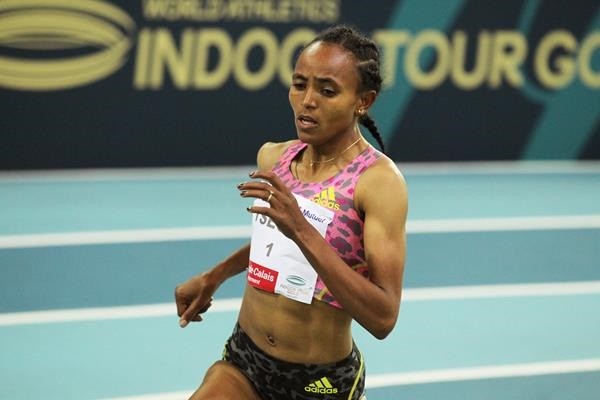
The clock read 2:52.9 with two laps to go and Tsegay maintained her pace with another lap just outside 30 seconds. She dug in for the final circuit and crossed the line in 3:53.09, taking more than two seconds off the world indoor record set by compatriot Genzebe Dibaba in Karlsruhe in 2014.
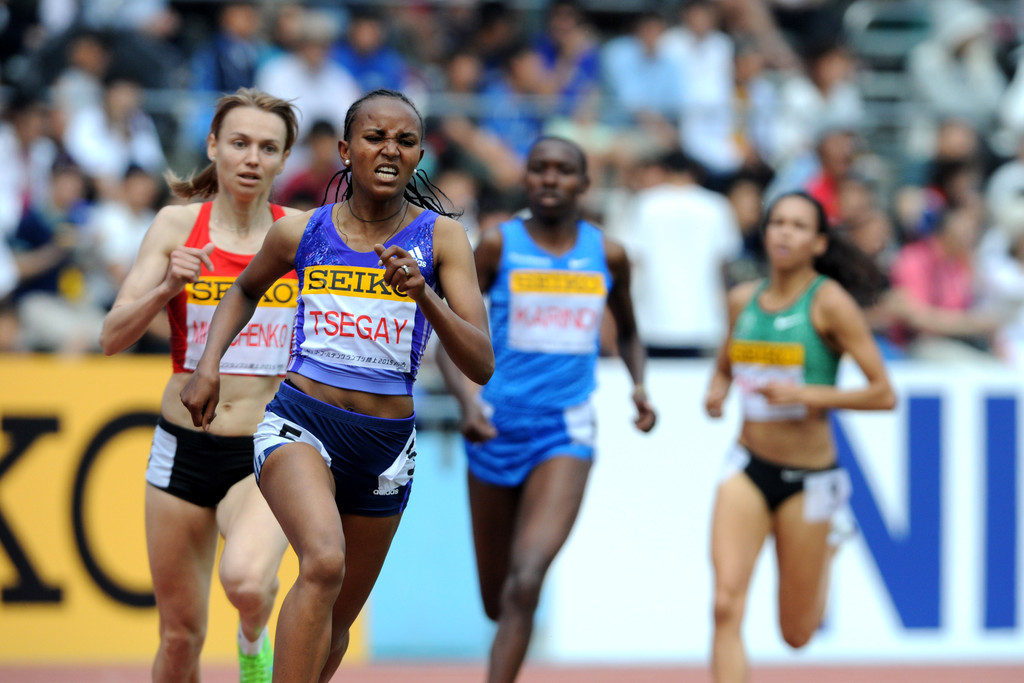
Muir finished second in a British indoor record of 3:59.58 with teammate Melissa Courtney-Bryant taking third in 4:04.79.
“I’m very happy to set a world indoor record,” said Tsegay. “I have been training really hard and I set myself a target to break the world indoor record.”
Tsegay's record-breaking performance was book-ended by two other athletes who very nearly broke world records.
Ethiopian steeplechase specialist Getnet Wale won the men's 3000m in 7:24.98, the second-fastest indoor performance in history, while USA's Grant Holloway won the men's 60m hurdles in 7.32, just 0.02 shy of the world indoor record.
Wale, still only 20 years old, led an Ethiopian 1-2-3-4 finish in the men’s 3000m as Daniel Komen’s long-standing world record of 7:24.90 was put under serious threat. The pace was fast and even as Vincent Keter led the field through the opening 1000m in 2:31.05 with the second kilometre covered in 2:30.
World 5000m silver medallist Selemon Barega hit the front with three-and-a-half laps to go with fellow Ethiopians Wale and world steeplechase silver medallist Lamecha Girma close behind. Wale took a turn at the front with two laps to go, then Girma kicked hard with 300 metres to go. Having seemingly misjudged his finish, Girma eased off the gas slightly with one lap remaining, allowing Wale and Barega to pass him.
by World Athletics
Login to leave a comment
Impressive victories by Jacob Kiplimo, Christian Taylor and Faith Kipyegon at the Golden Spike, a World Athletics Continental Tour Gold meeting in Ostrava
Kiplimo’s track break-out:
In the men’s 5000m, the 19-year-old Kiplimo fought off Selemon Barega in a fierce homestraight brawl to take the win in 12:48.63, one of seven meeting records to fall on a clear night in this eastern Czech city where 3000 spectators were allowed entry to Mestsky Stadium to help celebrate the meeting’s 59th edition.
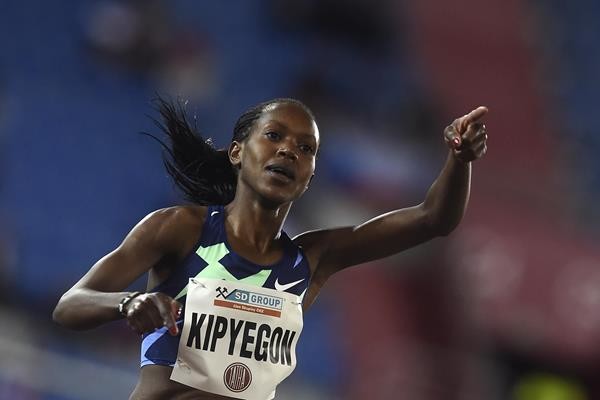
Just 3:30 into the race it was Barega, running behind pacer Lamecha Girma, who looked to be in control. With four laps to go he was already all alone and well ahead of the sprawled out pack.
“I wanted the fast time so I kept on pushing,” said Kiplimo, the silver medallist in the senior race at last year’s World Cross Country Championships. “It was a fight in the home straight. And it was wonderulf.”
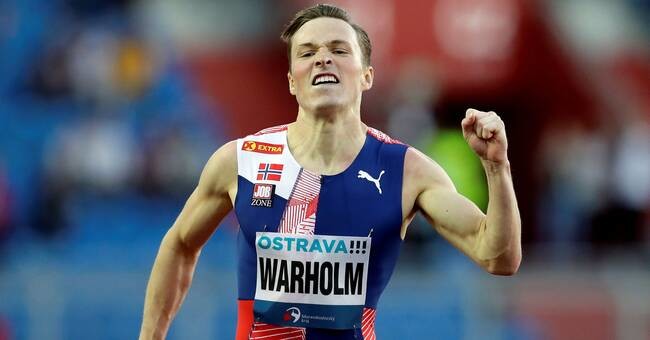
It was also the first big-meet victory for the teenager. More are likely on their way.
Strong, solo Kipyegon:
Faith Kipyegon produced a powerful performance to take the 1500m in convincing fashion.
Controlling the tempo from the 800m point, the Olympic champion pulled away for good with some 250 metres remaining, with Laura Weightman briefly giving chase. Kipyegon clocked 3:59.05, a season's best and another meeting record.
Weightman, who was briefly passed by Jemma Reekie as they approached the final bend, overtook the Scot in the homestretch to finish second in 4:01.96 with Reekie further back in 4:03.25.
Taylor triples 17.42m world lead:
In typical fashion, Christian Taylor produced the goods in the final round to win the triple jump, reaching a world-leading 17.46 in the final round to steal the win from Hugues Fabrice Zango, who controlled the competition since the second round when he jumped 17.42m.
Taylor needed time to find his rhythm, shaking off a pair of back-to-back modest efforts with a 17.12m jump in round three. He didn’t produce another measured jump until his last.
Warholm dominates:
Two-time world 400m hurdles champion Karsten Warholm extended his unbeaten streak to ten with a convincing 47.62 victory, another meeting record.
It wasn’t quite the follow-up he was expecting after his stunning 46.87 European record in Stockholm where a clip of the final hurdle dashed his world record ambitions there. This time, he chopped his stride badly as he approached the ninth barrier, but if he was disappointed, he hid it well.
“It’s always nice to get a win, but I was a little surprised by the time to be honest,” said Warholm, who was flown to Ostrava on Sunday on a private jet.
“I had a little stutter step, I had to switch (lead legs). There was nothing dramatic about it, I just had to do a switch. But that probably affected my time. Everything that breaks your rhythm is going to impact your finish time.”
Ludvy Vaillant of France was second in 49.14, a season’s best.
Hassan out-sprints Chelangat:
Sifan Hassan, Sheila Chelangat and Yasemin Can waged a strong battle in the women’s 5000m, but through it all, Hassan, the world 1500m and 10,000m champion, was just biding her time. That came, she decided, with about 300 metres to go, when she pulled past Chelangat and ran off down the backstretch and eventually to a convincing 14:37.85 victory.
Chelangat, who took care of much of the pacesetting chores, was second, passing Can in the waning stages to clock in 14:40.51, a career best for the 22-year-old Kenyan. Can, running in her first race on the track this year, was next in 14:40.70.
800m wins for Muir and Wightman:
Laura Muir was again the class of the field in her event, this time the 800m, turning in a solid 1:58.84 victory. Poland’s Sofia Ennaoui, who was second to the Scot in the Silesia 1500m on Sunday, was second again in 2:00.82.
Jake Wightman took down a solid field in the men’s race in 1:44.18, a career best for the 26-year-old who's better known for his 1500m exploits. The performance lopped a hefty sum from his previous best of 1:44.61 set two years ago.
by World Athletics
Login to leave a comment
Moroccan steeplechaser Soufiane El Bakkali has huge admiration for Kenyan athletes.
In fact, as the delayed elite season opened with the Monaco Diamond League meeting last week, El Bakkali was excited upon seeing the Kenyan contingent at the Stade Loius II in the heart of the principality.
“The men from Africa!” he screamed and then posed for selfies with the Kenyan delegation headed by coach Bernard Ouma.
“He actually asked for the group photo on our way out of the track,” Ouma added, describing the Moroccan as an “amiable character.”
“We had our last breakfast together in Monaco on Sunday on his way to Paris,” Ouma added on Thursday.
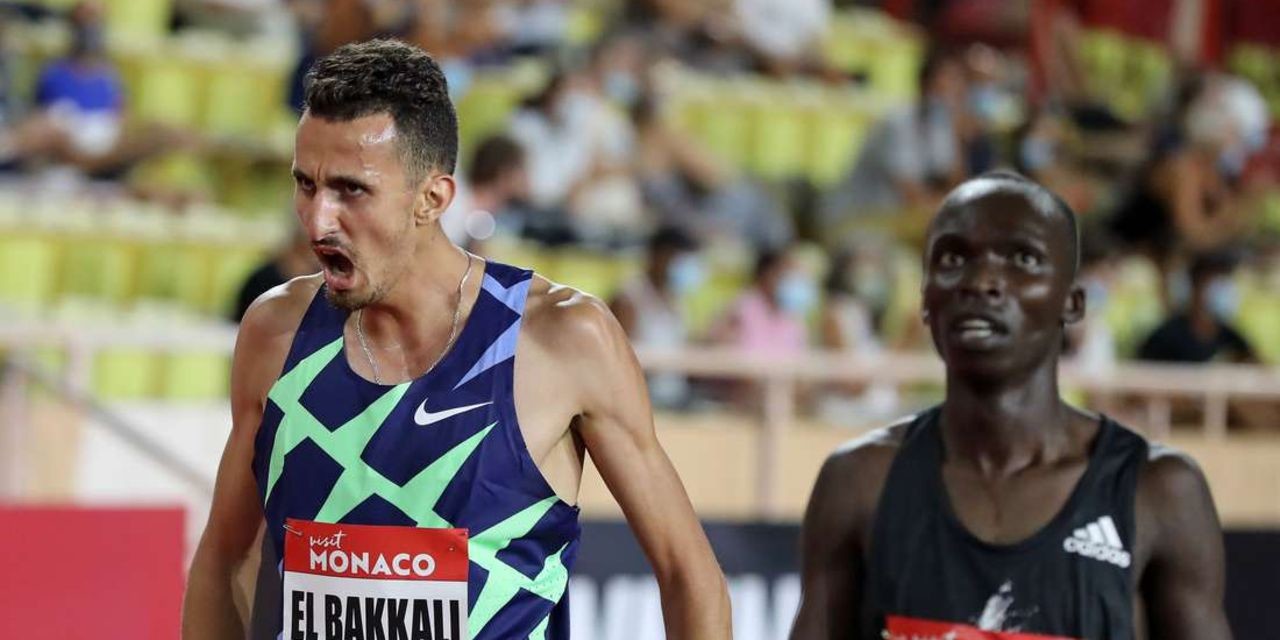
First-placed Morocco's Soufiane El Bakkali competed in the men's 3,000 metres steeplechase event during the Diamond League Athletics Meeting at The Louis II Stadium in Monaco on August 14, 2020.
The 24-year-old Moroccan has now expressed his interest in running with the Kenyans at the October 3 Kip Keino Classic leg of the World Athletics Continental Tour at the Nyayo National Stadium.
This sets up a potentially mouthwatering race given that El Bakkali ran the season’s best (world lead) time of eight minutes, 8.04 seconds to win in Monaco ahead of Kenya’s Leonard Bett (8:08.78).
Morocco's Soufiane El Bakkali (top photo) celebrates after winning the men's 3,000 metres steeplechase event as second-placed Leonard Bett of Kenya looks on during the Diamond League Athletics Meeting at The Louis II Stadium in Monaco on August 14, 2020.
Down with Covid-19, Kenya’s world and Olympic champion Conseslus Kipruto should be fit by then to set up a classic from 4.23pm at Nyayo National Stadium on October 3, according to the draft programme of events. “El Bakkali’s management say he wants to fly from the Doha Diamond League meeting (September 25) direct to Nairobi,” Kip Keino Classic meet director Barnaba Korir confirmed on Thursday. “We are finalising the arrangements for him and this (steeplechase) definitely should be one of the highlights of the Kip Keino Classic.”
With, bizzarrely, Morocco having failed to win a gold medal at the Olympic Games since the legend Hicham El Guerrouj struck a 1,500, and 5,000m double in Athents 16 years ago, the north African nation is banking on El Bakkali to pan the elusive medal at the Tokyo Games, now shifted to next summer.
Olympics 3,000m steeplechase champion Conseslus Kipruto (right), and another athlete during training at St Francis Cheptarit High School in Mosoriot, Nandi County on August 06.
El Bakkali (PB 7:58.15) won silver at the 2017 World Championships in London and followed up with bronze in Doha last year, finishing behind Kipruto and Ethiopia’s Lamecha Girma whom he could face at the Kip Keino Classic on October 3.
He was fourth at the 2016 Rio Games and was the only Moroccan athlete signed up by Visa (credit card) in its promotions for Tokyo 2020.
On Thursday, Ouma, who is preparing his athletes for this weekend’s second Diamond League meeting in Stockholm, said there could also be a possibility of bigger names coming to Nairobi in October.
“It (Kip Keino Classic) will be a very entertaining meet,” he summed it up.
by Elias Makori
Login to leave a comment
Finalists for the IAAF 2019 Male Rising Star Awards have been announced
With less than three weeks to go until the World Athletics Awards 2019, the IAAF is delighted to announce the five finalists for the 2019 Male Rising Star Award to recognise this year's best U20 athlete.
The winner will be announced live on stage at the World Athletics Awards 2019 in Monaco on Saturday 23 November.
The nominees are:
Selemon Barega (ETH)- silver medallist in the 5000m at the IAAF World Athletics Championships Doha 2019- world U20 lead at 5000m with 12:53.04- world U20 lead at 10,000m with 26:49.46- fifth in the senior race at the IAAF World Cross Country Championships Aarhus 2019
Alison dos Santos (BRA)- broke South American U20 400m hurdles record seven times- world U20 lead at 400m hurdles with 48.28- Pan-American Games champion- seventh at the IAAF World Athletics Championships Doha 2019
Lamecha Girma (ETH)- silver medallist in the 3000m steeplechase at the IAAF World Athletics Championships Doha 2019- world U20 lead with 8:01.36- broke national senior record in the 3000m steeplechase
Jakob Ingebrigtsen (NOR)- European indoor 3000m champion- world U20 lead and European U20 record at 1500m with 3:30.16- world U20 lead and European U20 record at the mile with 3:51.30- European U20 record at 5000m with 13:02.03- finished fourth at 1500m at the IAAF World Athletics Championships Doha 2019- finished fifth at 5000m at the IAAF World Athletics Championships Doha 2019
Mykhaylo Kokhan (UKR)- world U20 lead in the hammer with 77.39m- finished fifth at the IAAF World Athletics Championships Doha 2019
by IAAF
Login to leave a comment
Men’s World Championship steeplechase final goes to photo finish
It was a very tight finish in the men's 3,000m steeplechase between Kenya's Kipruto and Girma of Ethiopia
he men’s 3,000m steeplechase final has been the toughest to call of any of the finishes in the World Championships thus far. The race was a battle between Conseslsus Kipruto of Kenya, Lamecha Girma of Ethiopia, Soufiane El Bakkali of Morocco and Getnet Wale of Ethiopia. In the end, it was reigning World Champion Kipruto who took the title once more over Girma. They were seperated by 0.01s.
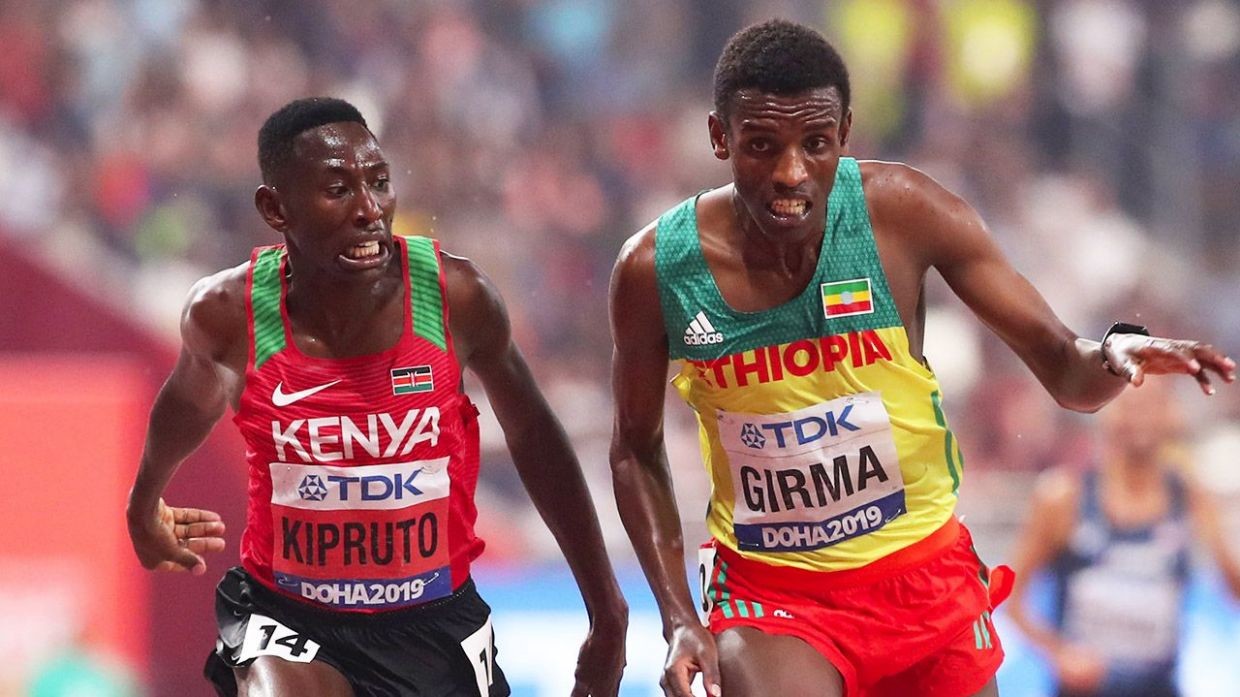

Kipruto finished in 8:01.35 which is a world lead, second place went to Girma in 8:01.36 and third to El Bakkali in 8:03.76. Canadian Matt Hughes finished 14th in the final in 8:24.78.
In contrast, Monday’s women’s steeplechase was not a close call. Beatrice Chepkoech of Kenya ran away from the field to win the World Championships and set a new championship record of 8:57.84. The Kenyan runner, who’s the world record-holder in the event (at 8:44), lost to American Emma Coburn (who finished second Monday) at the 2017 championships.
Login to leave a comment
IAAF World Athletics Championships Doha
The seventeenth edition of the IAAF World Championships is scheduled to be held between 27 September and 6 October 2019 in Doha, Qatar at the renovated multi-purpose Khalifa International Stadium. Doha overcame bids from Eugene, USA, and Barcelona, Spain to be granted the rights to host the 2019 IAAF World Championships in Athletics. Having hosted the IAAF Diamond League, formerly...
more...

